Modern Organic Living Room Design/Japandi: Trends for 2025
Welcome to the Soft Elegance of Modern Organic Interiors
Step into 2025, where interior design embraces a harmonious blend of natural materials, soothing tones, and sculptural forms—all hallmarks of the Modern Organic trend. These living spaces exude a sense of effortless calm, offering both visual beauty and functional comfort.
Rounded organic forms, from curved sofas to circular coffee tables, take center stage, creating spaces that feel inviting and cocoon-like. Whether you are already a fan of Japandi aesthetics or exploring new directions in contemporary interiors, Modern Organic design presents a fresh, nature-inspired aesthetic that elevates everyday living.
This article explores how Modern Organic redefines living rooms, focusing on curved shapes, layered textures, warm palettes, and nature-inspired compositions.
What Is Modern Organic Design?
Modern Organic design is a movement that harmonizes contemporary minimalism with nature’s fluidity, creating calm, timeless interiors that feel warm, inviting, and deeply connected to the natural world.
At its core, Modern Organic design is about balancing structure and softness—retaining the clean lines of modern aesthetics while introducing organic textures, imperfect shapes, and soothing color palettes. The goal is to remove visual noise while still making a space feel lived-in, comforting, and expressive.
This style evolved as a response to sterile modernism, which often favored function over warmth. While modern interiors can sometimes feel stark or impersonal, Modern Organic infuses them with a sense of soul, using natural imperfections, asymmetry, and handcrafted details to make the space feel more human.
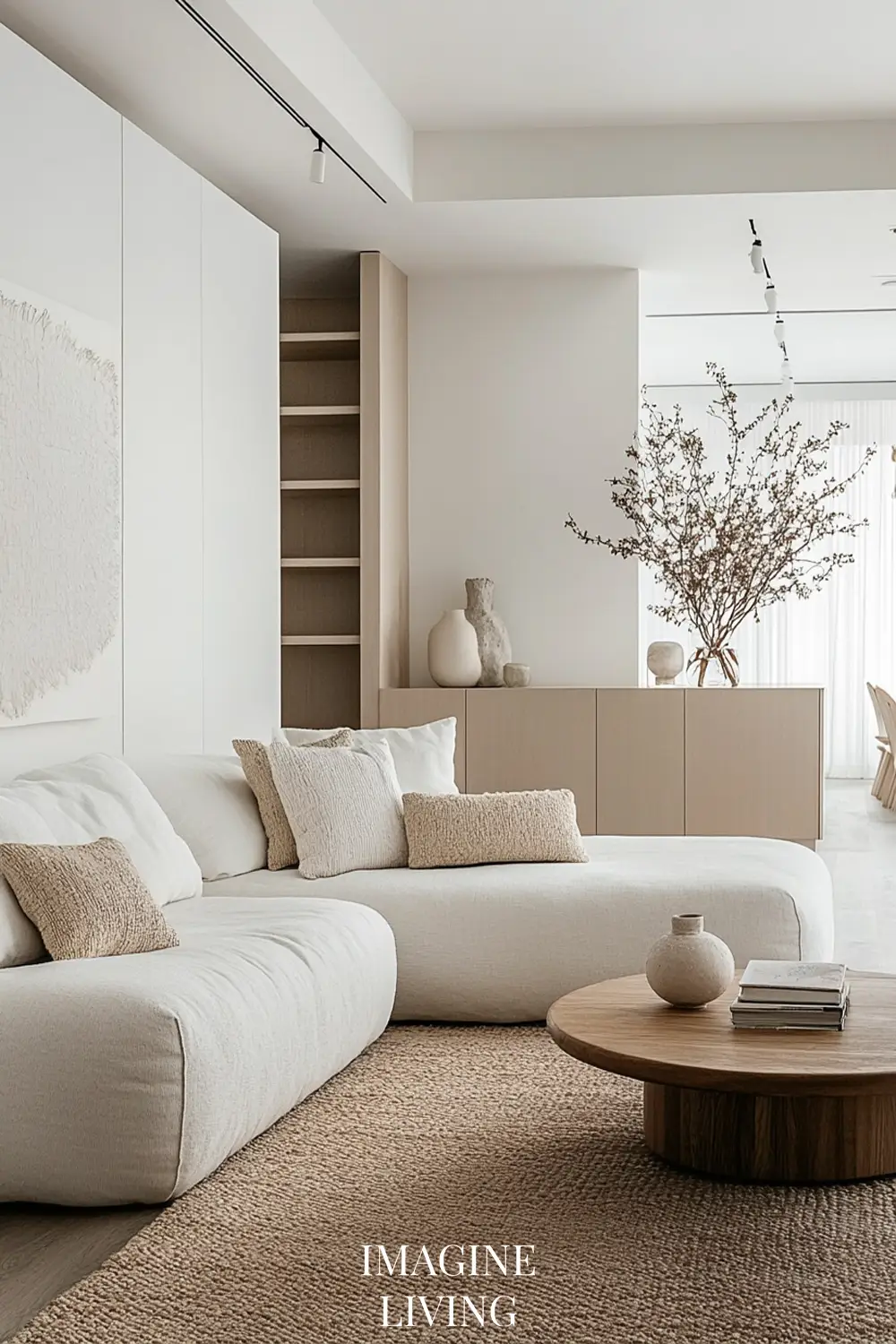
Shop the Look
This post contains affiliate links. If you purchase through these links, we may earn a small commission at no extra cost to you. As an Amazon Associate, we earn from qualifying purchases. Thank you for your support!
Where Does Modern Organic Design Come From?
Modern Organic design draws inspiration from multiple global aesthetics, weaving them together into one seamless approach.
- Scandinavian Design (Hygge & Minimalism) – The Scandinavian concept of “hygge” (coziness) is reflected in soft lighting, layered textures, and cozy yet functional furniture. The focus is on simplicity and comfort rather than excess.
- Japanese Wabi-Sabi – The Japanese philosophy of wabi-sabi embraces imperfection and natural aging, which translates into imperfect ceramics, textured stone, and handcrafted wood elements in Modern Organic interiors.
- Mid-Century Modern & Bauhaus Simplicity – Clean lines and open spaces from mid-century modern and Bauhaus design provide the architectural foundation, keeping the aesthetic streamlined.
- Biophilic Design – The use of natural light, earthy materials, and organic forms reflects a growing focus on well-being and environmental connection in interior spaces.
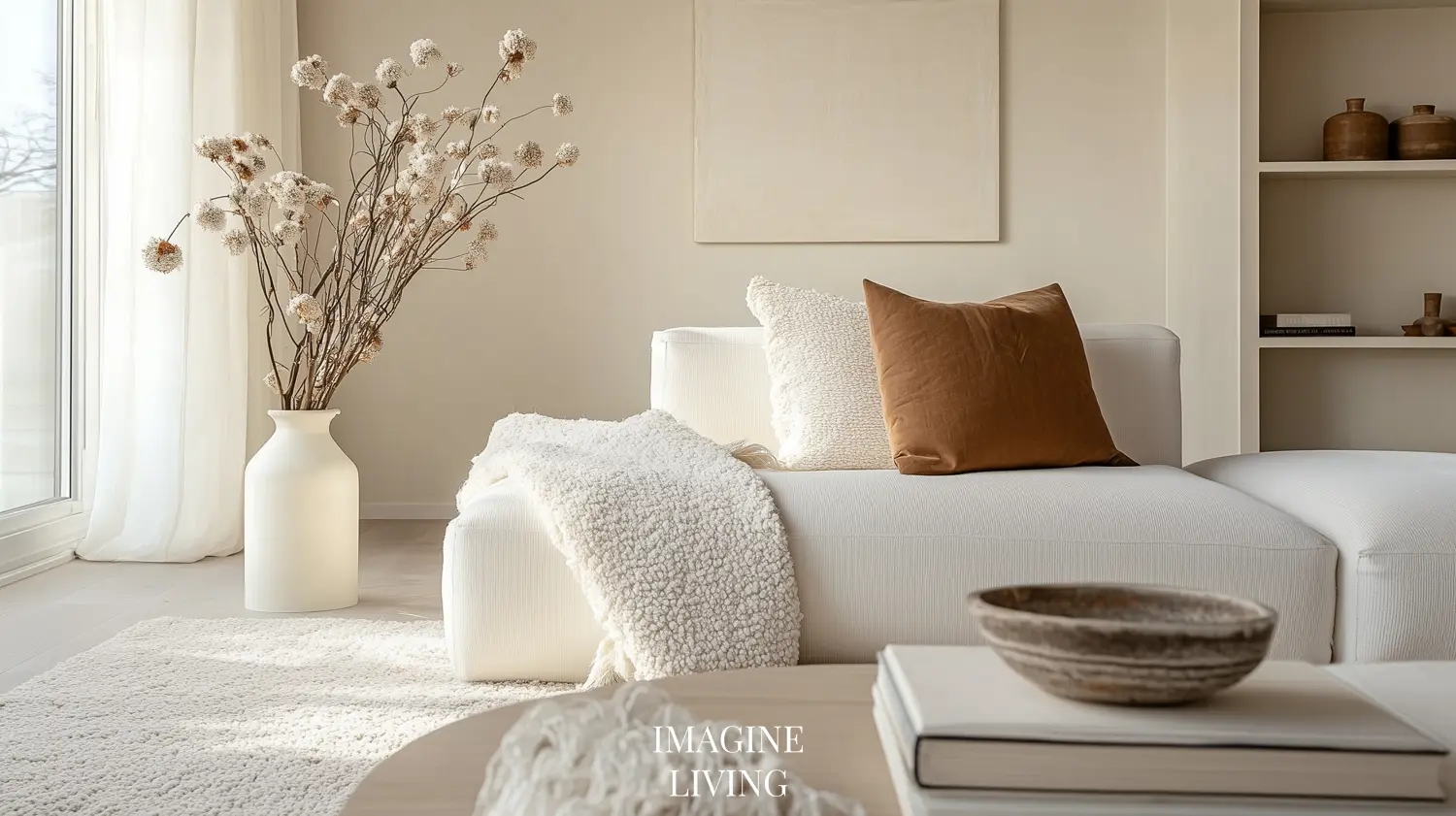
Shop the Look
This post contains affiliate links. If you purchase through these links, we may earn a small commission at no extra cost to you. As an Amazon Associate, we earn from qualifying purchases. Thank you for your support!
Why Is Modern Organic Design So Popular?
This design movement resonates deeply today because it meets both aesthetic and emotional needs.
- A Response to Overstimulation – With the rise of digital lifestyles, many seek a retreat from constant visual and sensory overload. Modern Organic design fosters tranquility, simplicity, and a grounded atmosphere.
- A Connection to Nature – The use of natural materials, soft color palettes, and organic shapes mirrors the calming effect of being outdoors.
- Timeless vs. Trendy – While many design trends fade, Modern Organic endures because it isn’t based on novelty—it’s rooted in nature and craftsmanship.
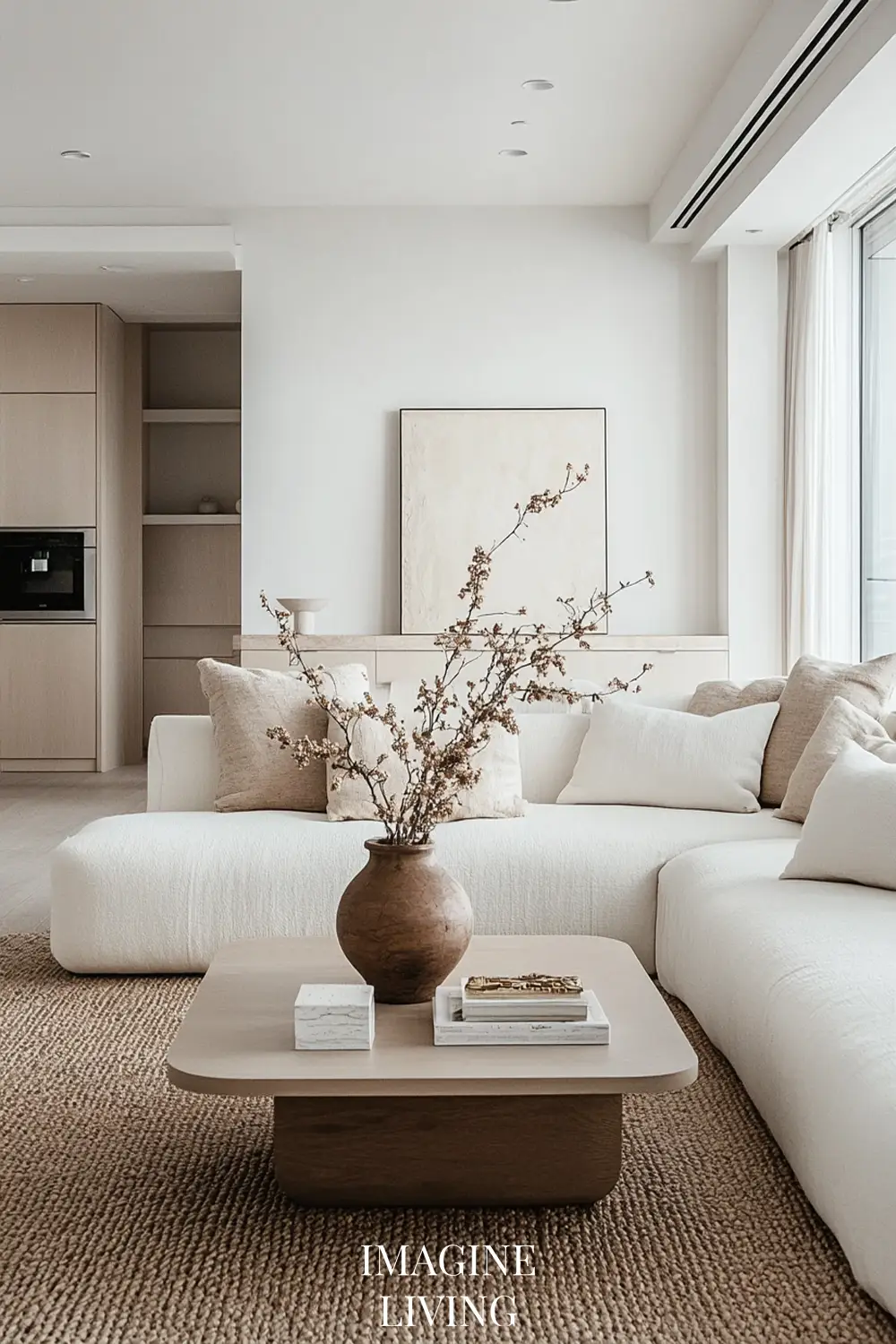
Shop the Look
This post contains affiliate links. If you purchase through these links, we may earn a small commission at no extra cost to you. As an Amazon Associate, we earn from qualifying purchases. Thank you for your support!
Key Features of Modern Organic Design
- Curved and Sculptural Forms
- Instead of sharp, geometric lines, Modern Organic spaces feature softer edges, rounded sofas, arched doorways, and sculptural tables.
- This fluidity mimics the natural world, where shapes evolve organically rather than being rigidly structured.
- Natural Materials & Handcrafted Elements
- Wood, stone, linen, clay, and woven fibers define the look.
- Hand-thrown ceramics, artisan-crafted furniture, and untreated raw materials give each space depth and personality.
- Earthy, Neutral Tones
- The color palette leans warm and natural, featuring beiges, taupes, warm whites, soft browns, and muted greens.
- Instead of bold, trendy hues, colors are selected to create calm, light-filled interiors.
- Layered Textures for Depth
- Soft linens, wool rugs, rough-hewn wood, woven baskets, and matte ceramics add dimension to the space.
- The interplay between smooth and coarse textures makes the space feel cozy yet refined.
- Minimalism with Personality
- Unlike stark minimalism, Modern Organic doesn’t strip a space of warmth—instead, it embraces intentional curation.
- Fewer, high-quality pieces replace excess decor, ensuring every object has a purpose and emotional connection.
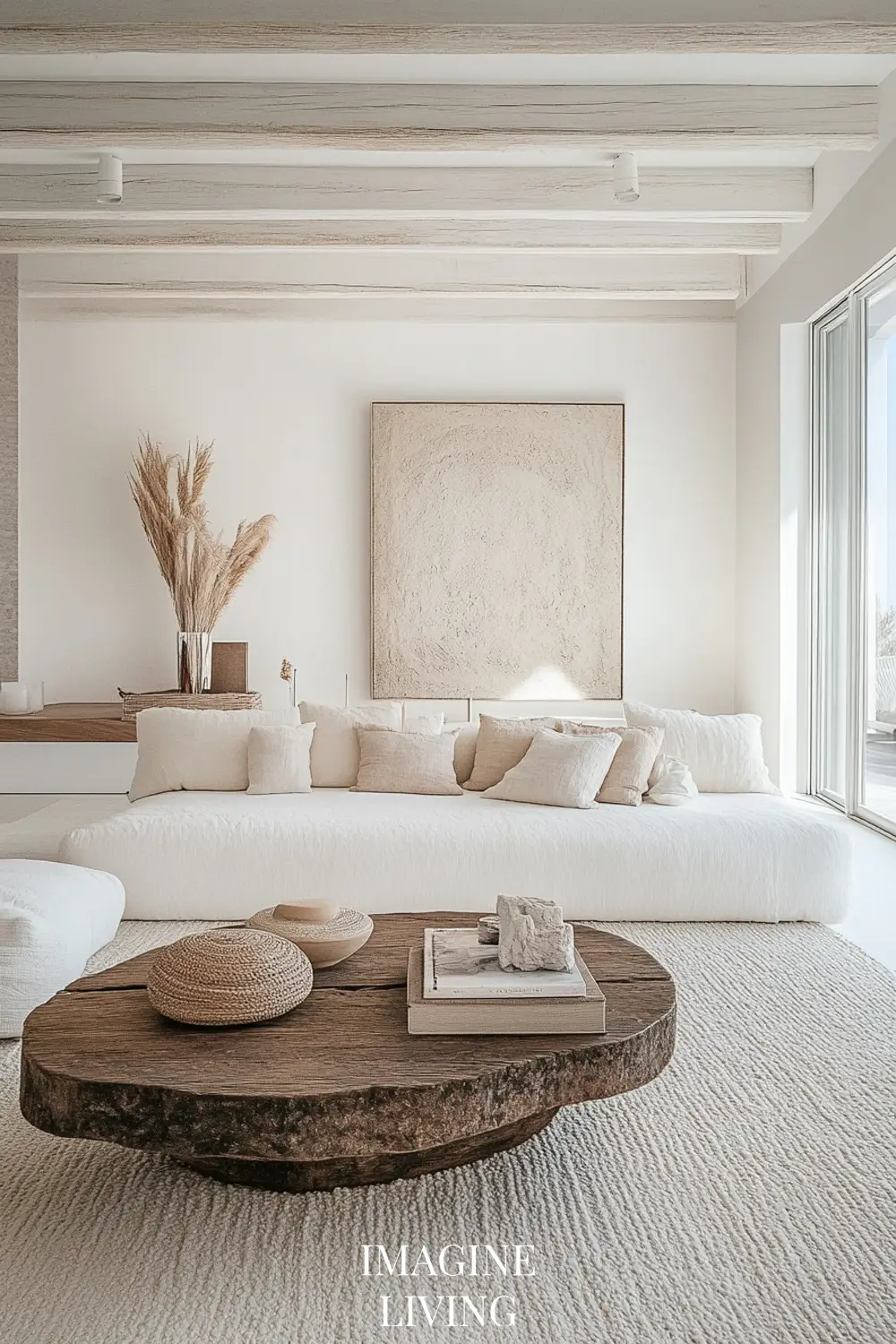
The Essence of Modern Organic
This design philosophy isn’t about perfection—it’s about embracing natural beauty in all its forms. The subtle knots in wood grain, the textured surface of handmade pottery, or the way light diffuses through linen curtains—these small details bring depth, warmth, and authenticity to a space.
Modern Organic interiors feel grounded, balanced, and timeless, creating a sanctuary-like environment where one can slow down, breathe, and feel at home.

Living Room Trends for 2025
1. Architectural Softness
Say goodbye to sharp angles and embrace the grace of soft curves. From rounded sofas to arched doorways, architectural softness is a defining feature of 2025 interiors. These elements create an inviting, cocoon-like atmosphere while enhancing the flow of movement in a space.
Tip: A circular coffee table or a low-profile modular sofa can anchor the space with elegance.
Tip: Look for second-hand or vintage furniture with curved forms to add uniqueness and sustainability.
2. Natural Meets Luxe
While Modern Organic design is deeply rooted in nature, it also integrates subtle touches of luxury. Bouclé fabrics, handwoven rugs, and artisanal ceramics complement raw wood and stone, creating an understated elegance that feels both warm and sophisticated.
Tip: Choose handcrafted decor and furniture to enhance the authenticity of the space.
Add brushed brass, matte gold, or antique bronze accents in lighting fixtures for a hint of luxury.
3. Tonal Layering
Instead of stark monochrome, Modern Organic thrives on tonal layering—a mix of warm, earthy shades that shift subtly between beige, cream, taupe, and greige.
Tip: Layer cushions, throws, and textured upholstery in slightly different hues to add depth.
Combine different fabric textures like linen, wool, and woven cotton to create a tactile and inviting space.
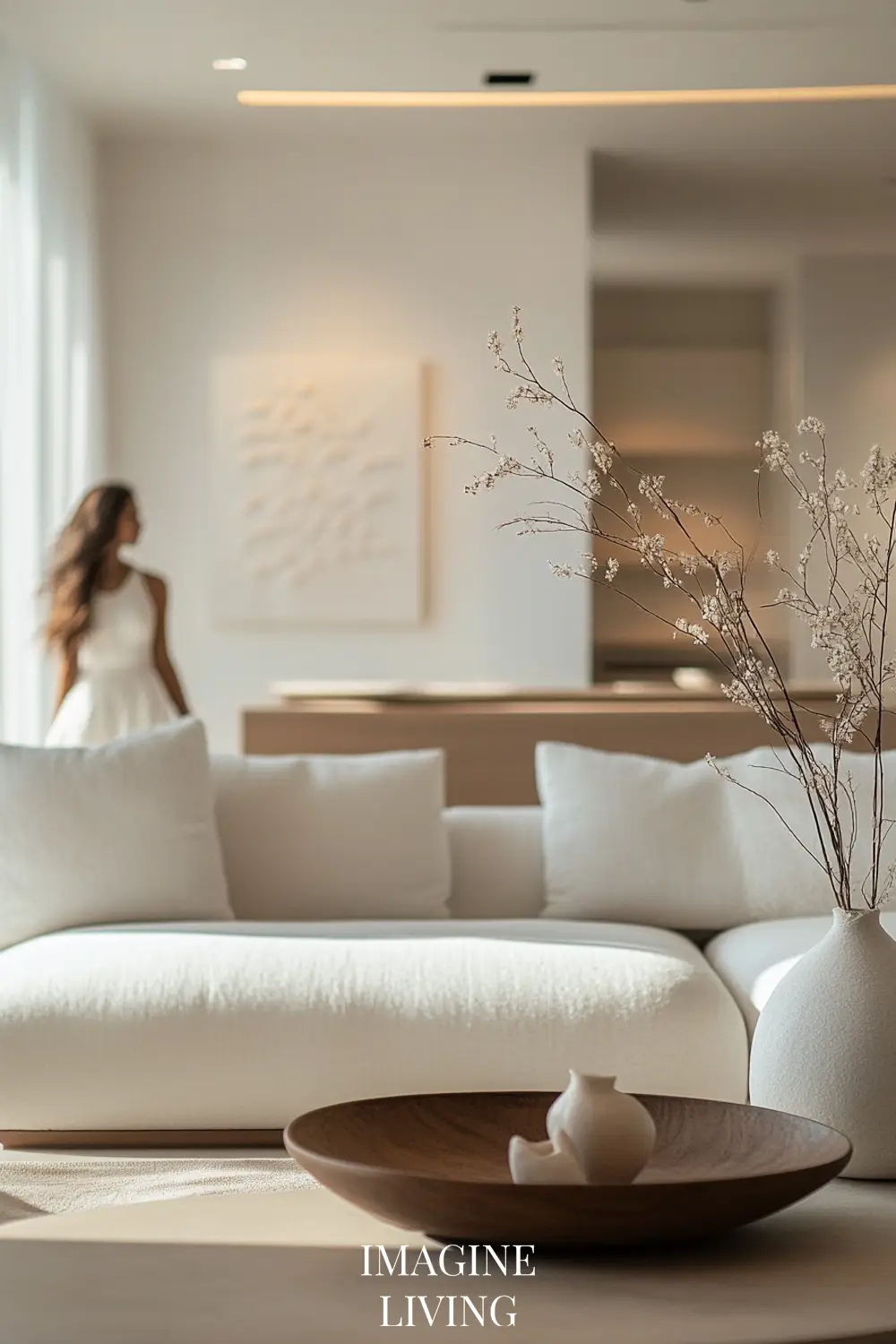
4. Connection to Nature
Biophilic design continues to be a driving force, but Modern Organic brings it one step further by mimicking natural forms. Instead of simply adding houseplants, this trend draws from nature’s asymmetry, using stone sculptures, raw edges, and imperfect materials to create an organic aesthetic.
Tip: Place a sculptural vase with dried branches as a focal point on a coffee table.
Rotate seasonal greenery or dried florals to keep the space feeling fresh year-round.
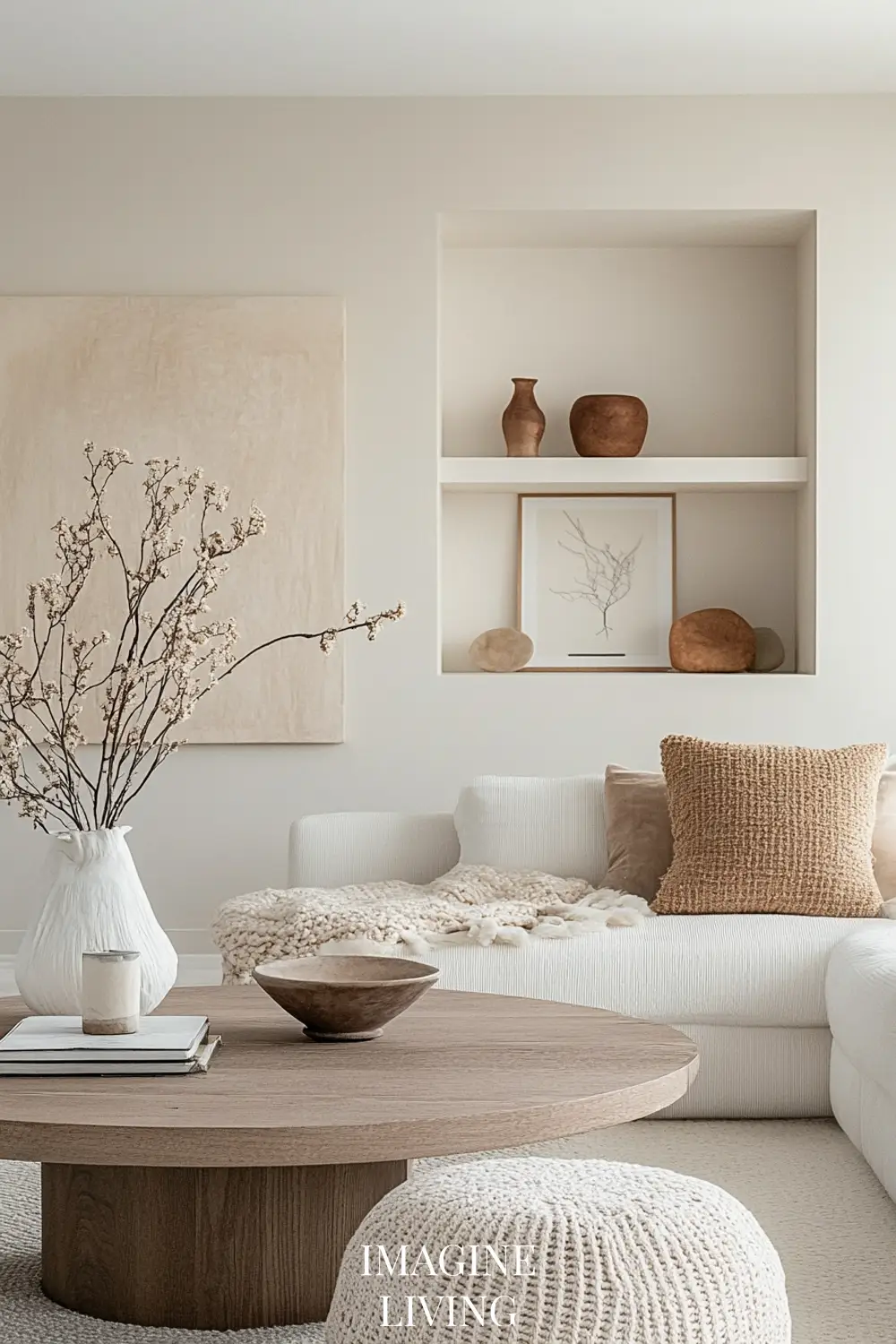
Styling Tips for a Modern Organic Living Room
1. Sofas and Seating
Choose low, plush sofas with rounded edges for ultimate comfort. Layer in floor cushions, boucle armchairs, or sculptural seating to make the space visually dynamic yet relaxed.
Tip: Mix large and small cushions in varied natural fabrics like linen, wool, and organic cotton to create softness and dimension.
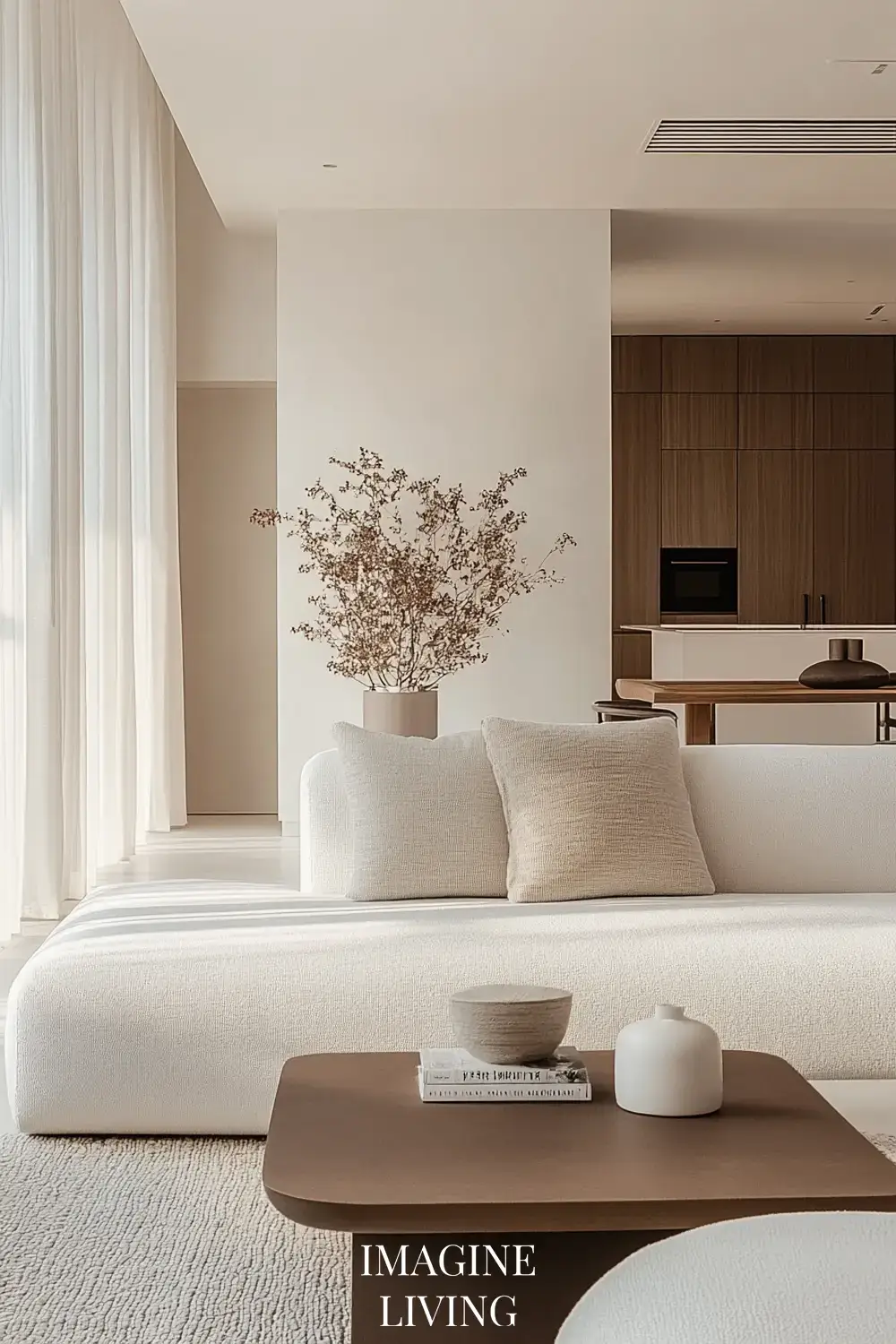
2. Coffee Tables & Side Tables
Opt for a round or oval wooden coffee table with either a live edge or a smooth stone finish. Stacked nesting tables in marble, wood, or textured ceramics can add functionality while maintaining organic flow.
Tip: Layer your coffee table with handmade ceramics, sculptural vases, and raw-textured objects for a curated yet effortless look.

3. Color Palette & Composition
Modern Organic interiors embrace layered, earthy tones rather than stark contrasts.
- Base Colors: Soft whites, warm beige, greige, and taupe for a grounding effect.
- Accent Colors: Muted sage, olive, deep espresso, or terracotta for subtle warmth.
- Dark Contrast: A touch of matte black or deep brown (in lighting fixtures or furniture legs) adds depth.
Imagine1 Tip: Introduce accent colors through ceramic bowls, neutral-toned textiles, or botanical art to create a harmonious yet vibrant balance.
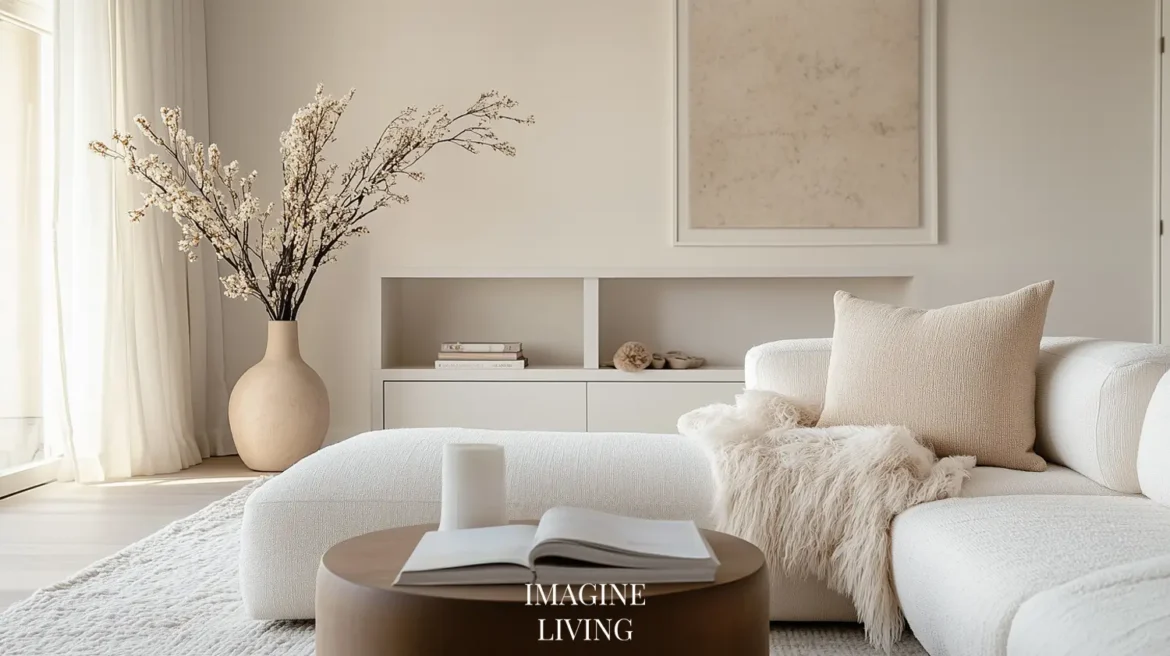
4. Textures & Layering
Without varied textures, a room can feel flat. The key to Modern Organic warmth is contrast in materiality:
- Soft & Plush Elements: Bouclé, linen, and wool add coziness.
- Natural & Raw Finishes: Aged wood, rough stone, and woven jute bring organic contrast.
- Tactile Pairing: A smooth ceramic vase next to rough-hewn wood, or a polished coffee table paired with a textured wool rug, creates balance.
Tip: Mix at least three textures in a room—for example, a linen sofa, marble side table, and jute rug—to achieve depth without clutter.

5. Lighting & Ambience
Soft, diffused lighting enhances the natural warmth of Modern Organic interiors. Choose:
- Paper lantern pendants or ceramic table lamps for an organic, sculptural look.
- Dimmable lighting or candle arrangements for a calming, layered glow.
Tip: Candles in handcrafted stone or wooden holders create an organic play of light and shadow, enhancing the mood of the space.
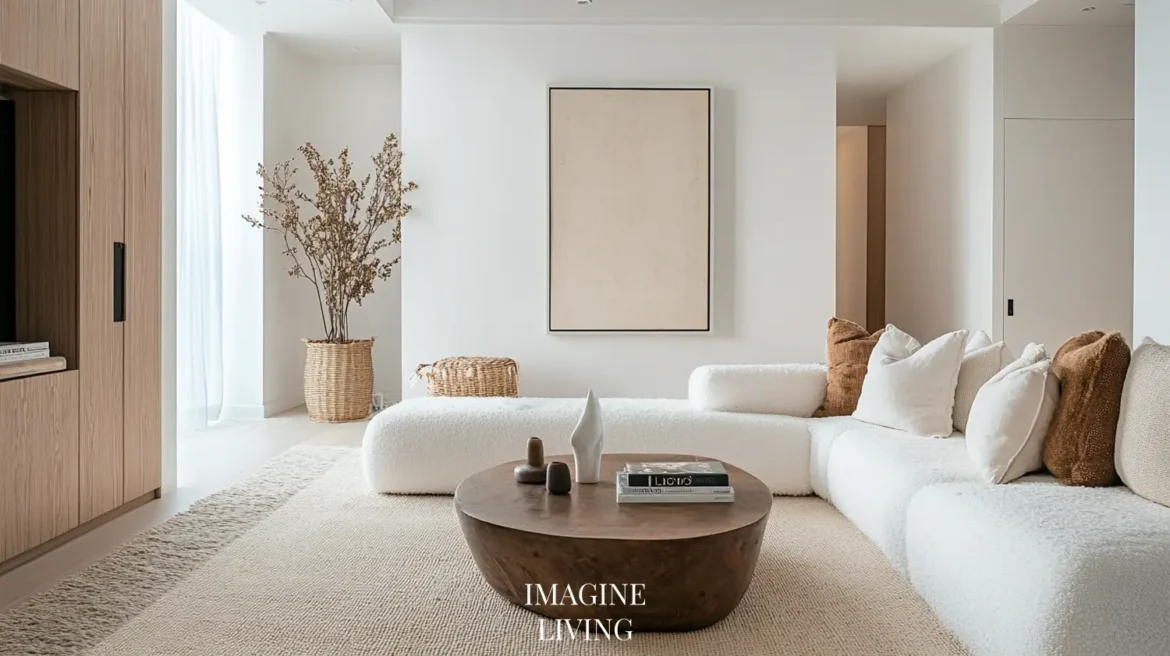
Bringing It All Together
Modern Organic design offers a timeless yet forward-thinking approach to interior spaces. By blending Japandi influences with soft, sculptural forms and layered natural materials, a living room transforms into a space of effortless elegance and comfort.
As 2025 approaches, this trend will continue redefining home aesthetics, celebrating the beauty of nature and craftsmanship. Whether through curved furniture, subtle color layering, or textural contrasts, the key is intentional simplicity.
Which element of Modern Organic living speaks to you most? Will you start with a small decor shift or a full transformation?
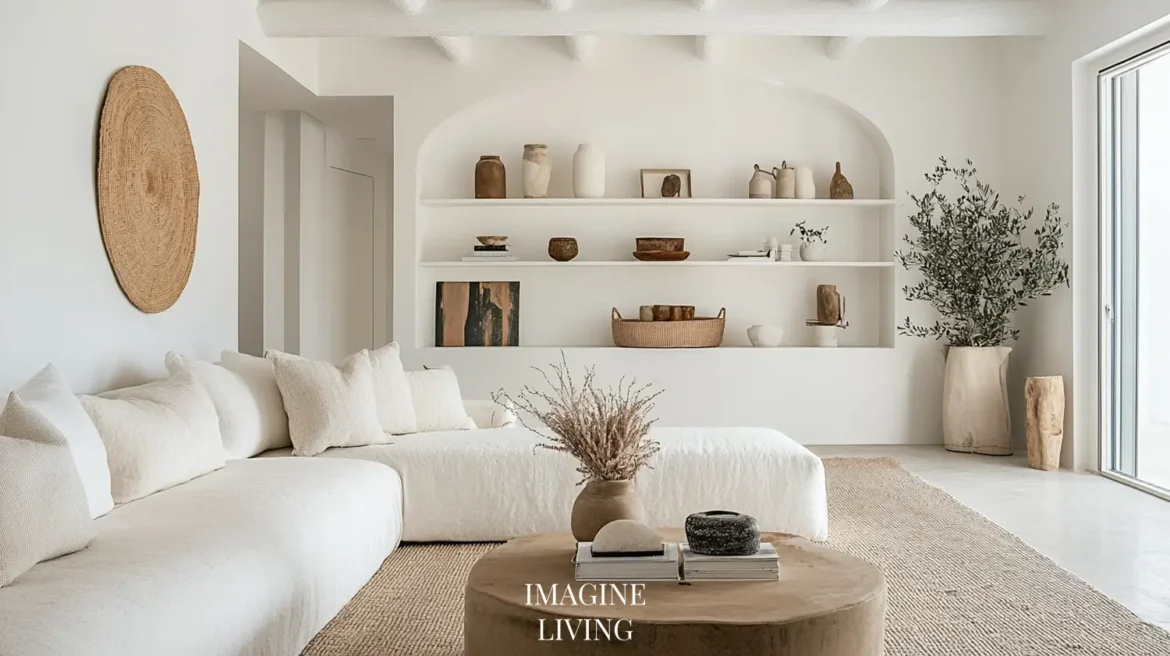

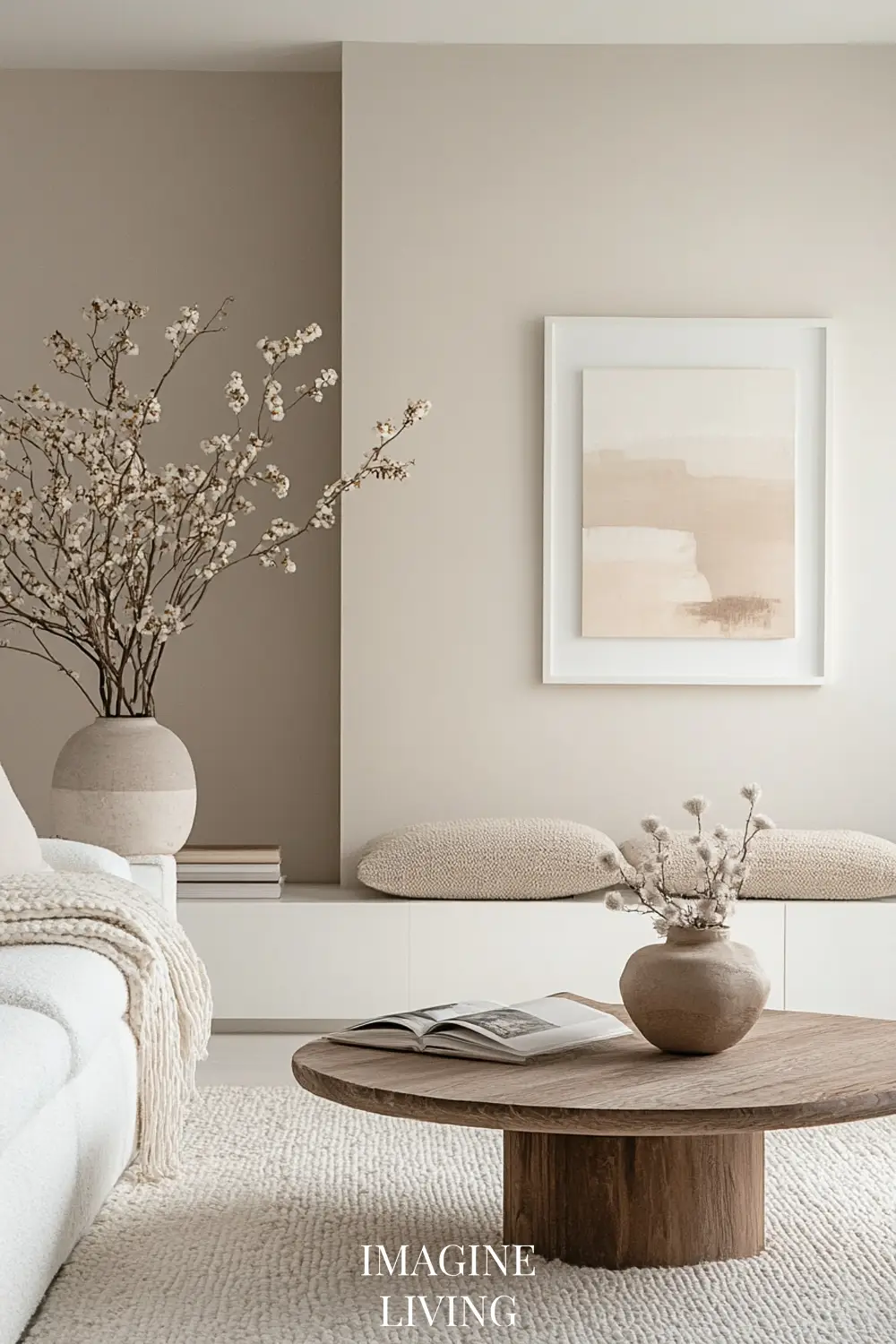
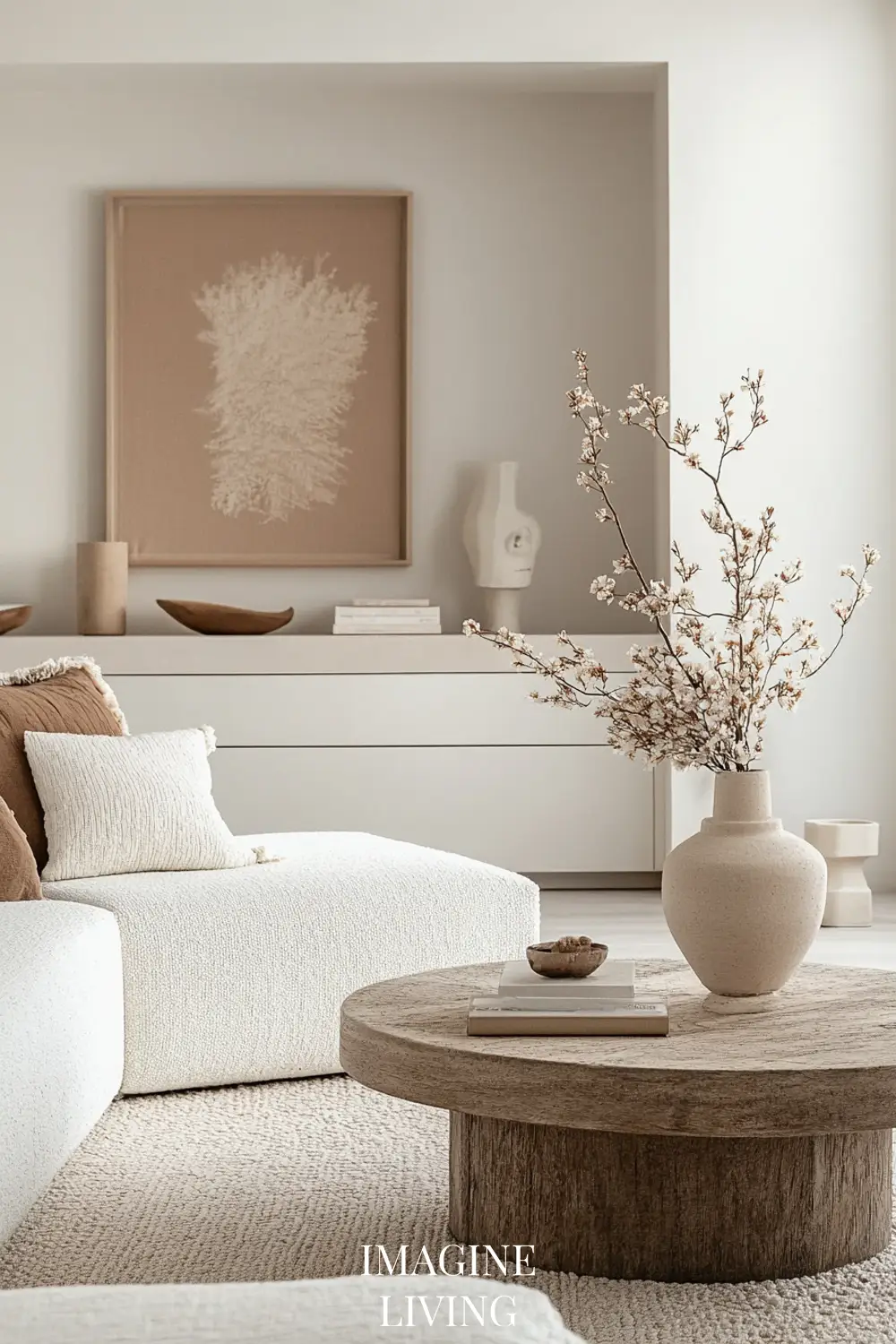
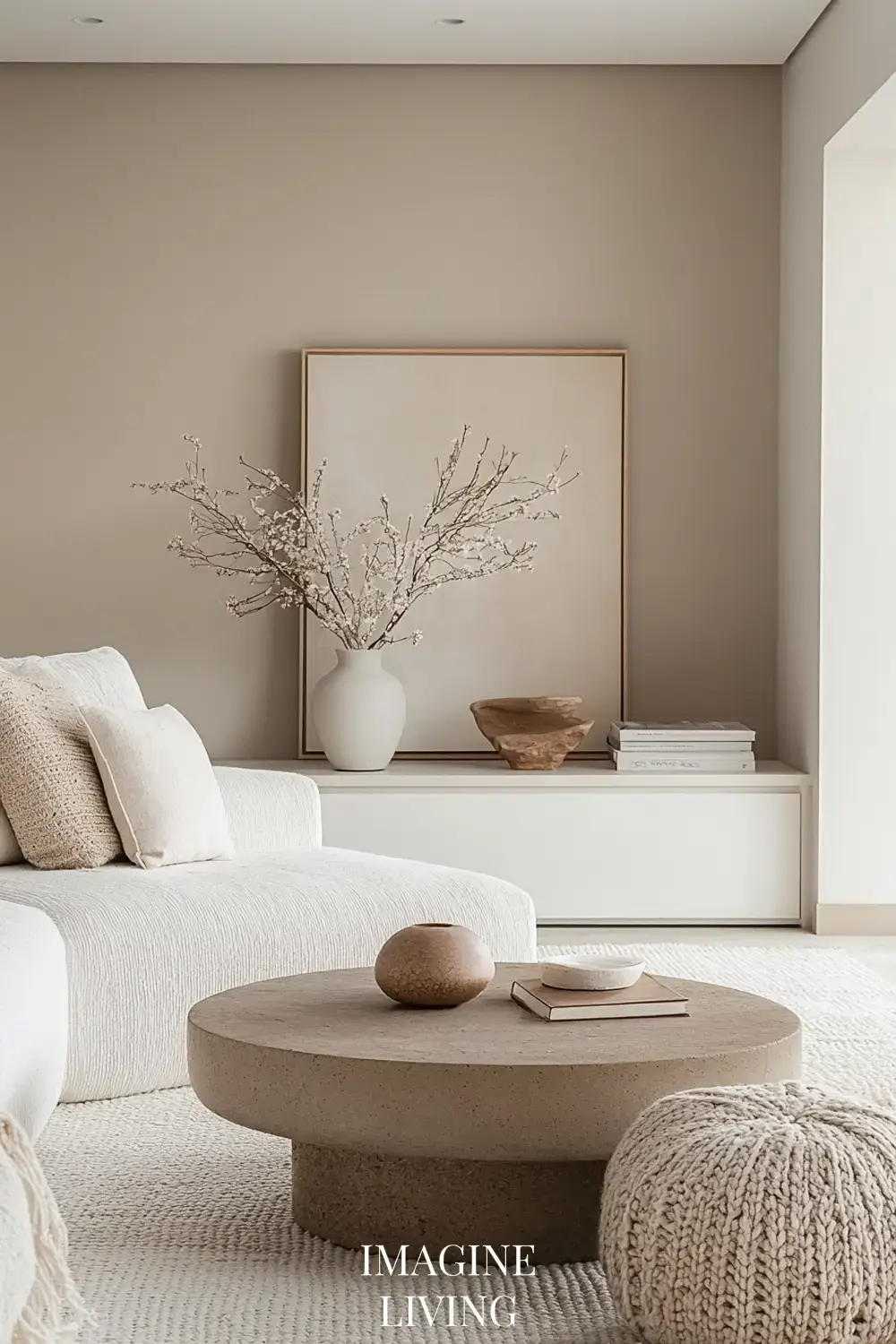
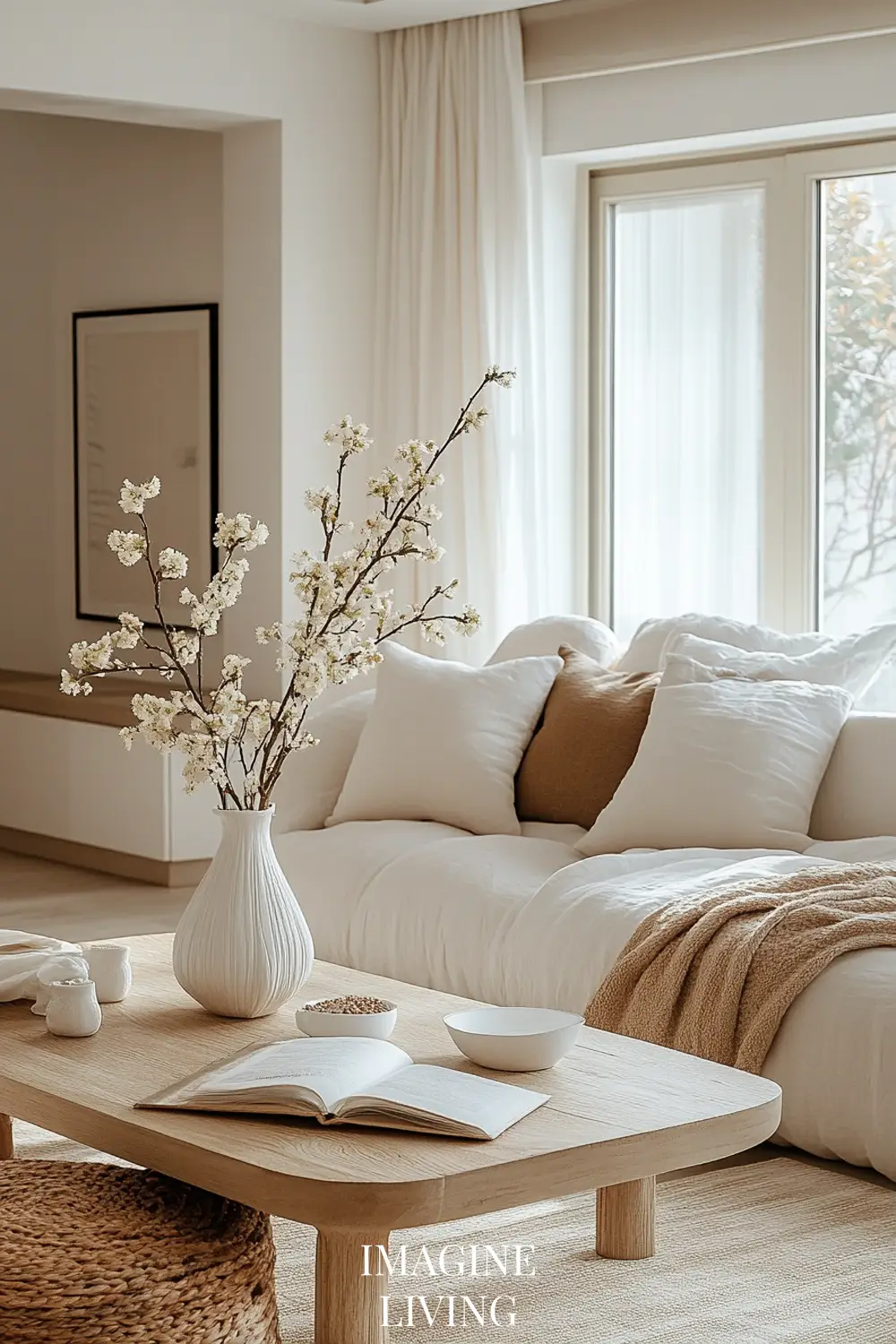
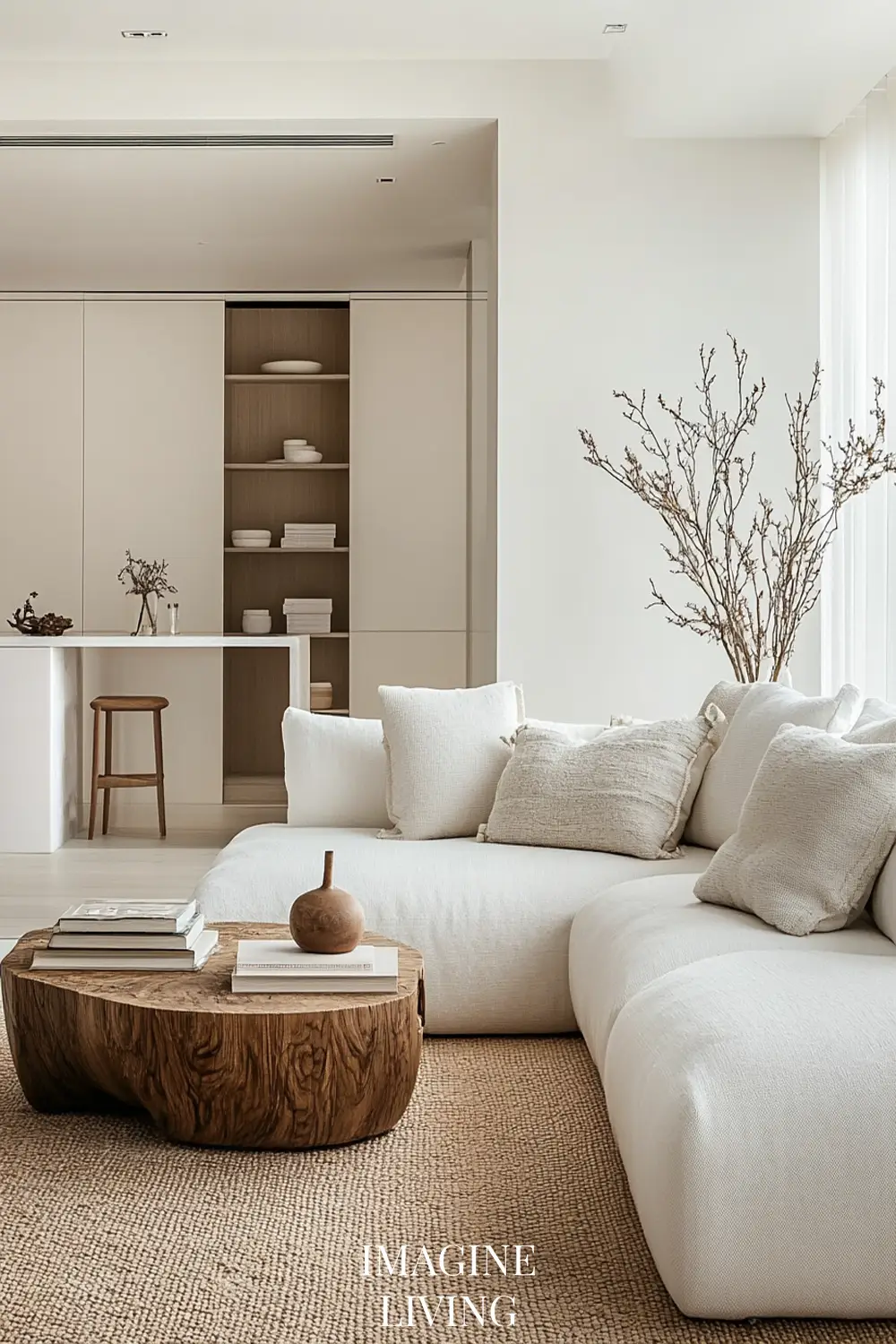
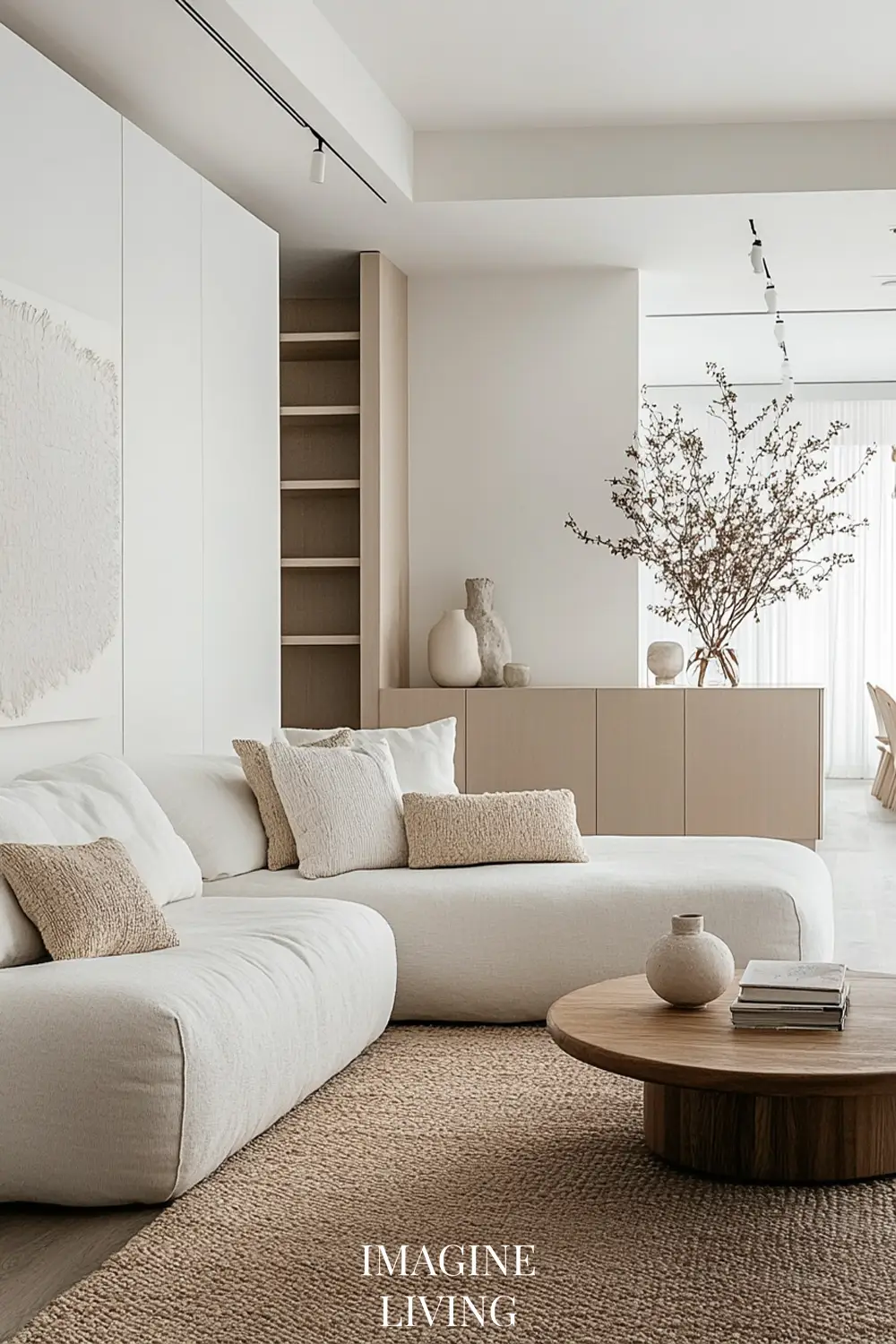
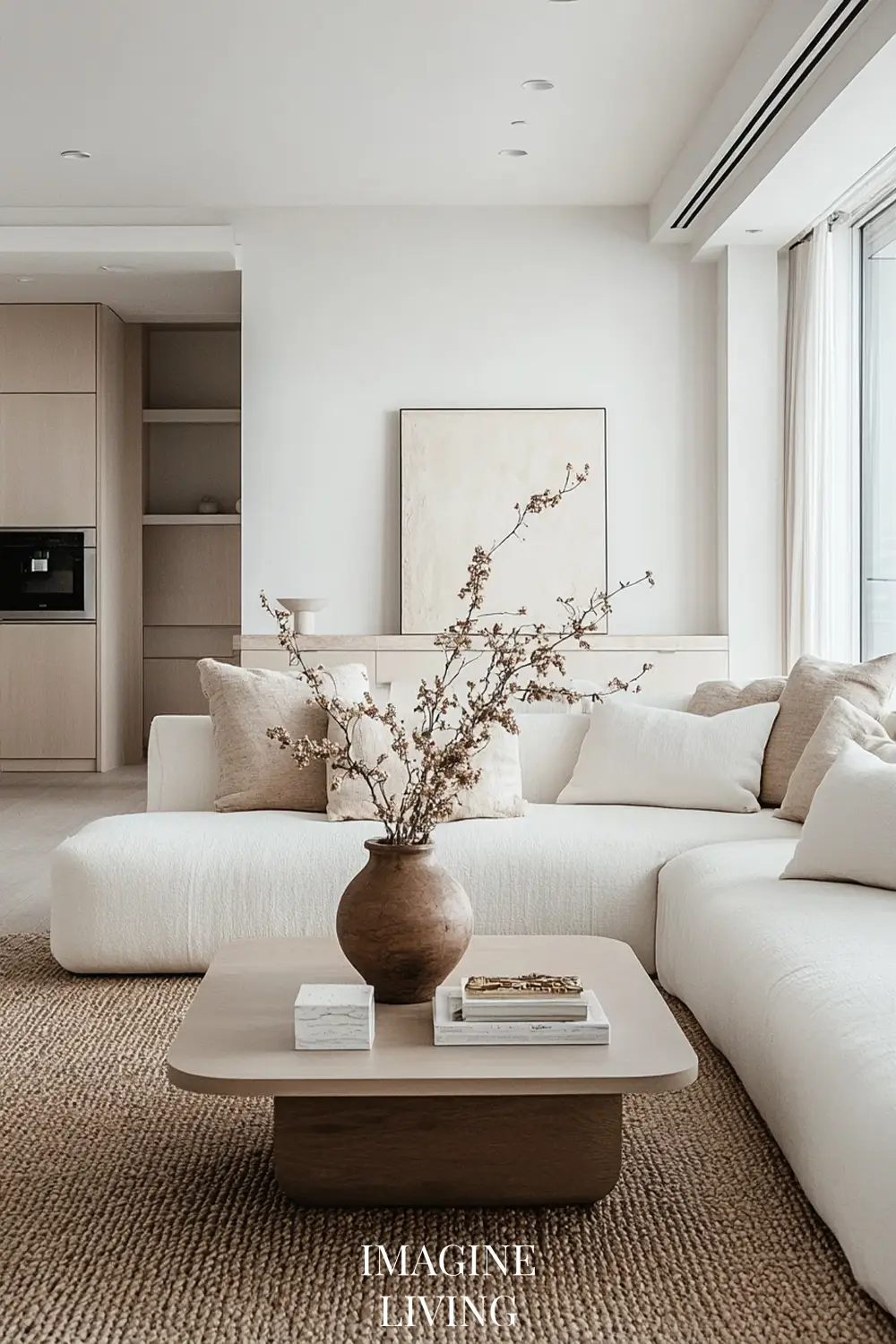
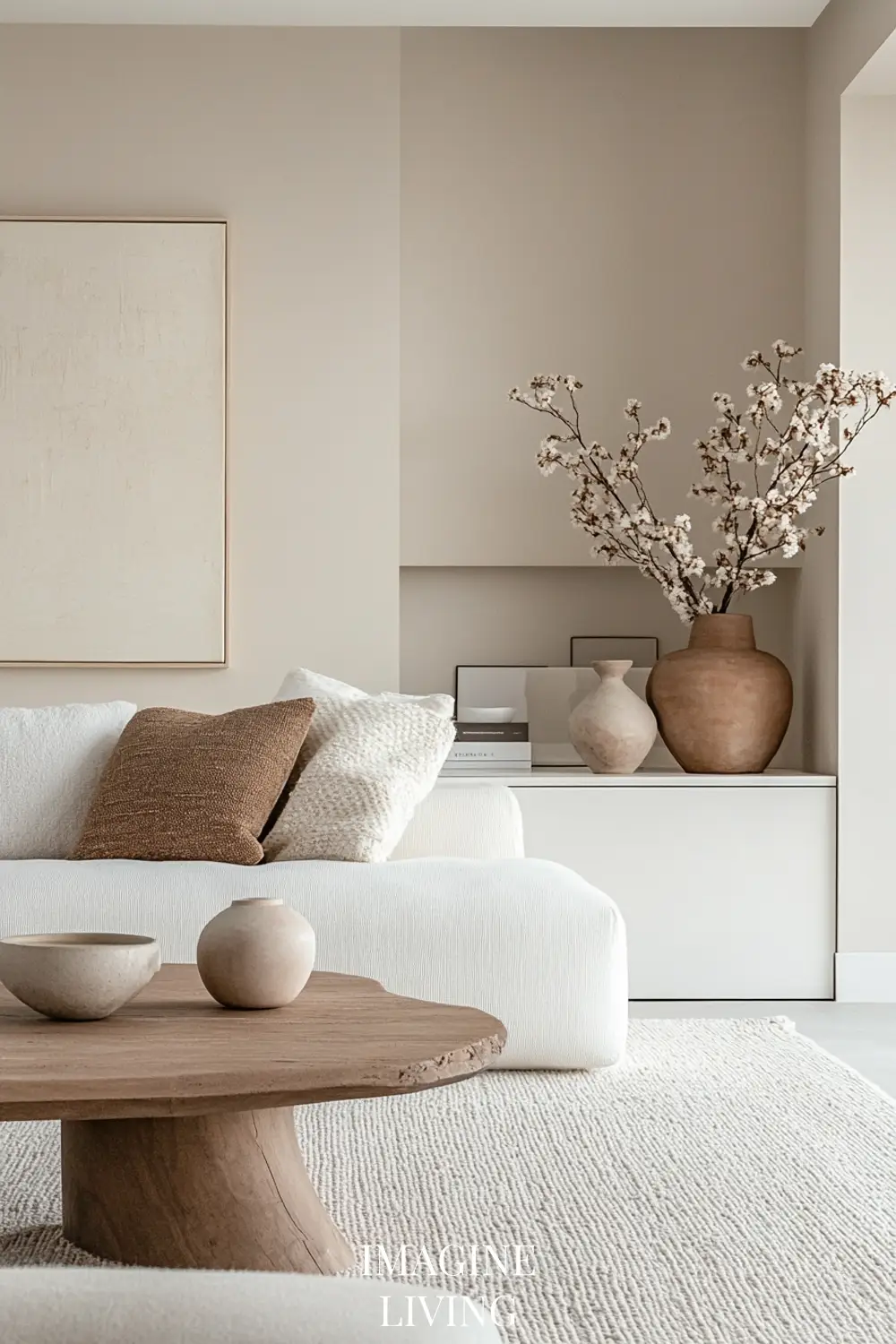

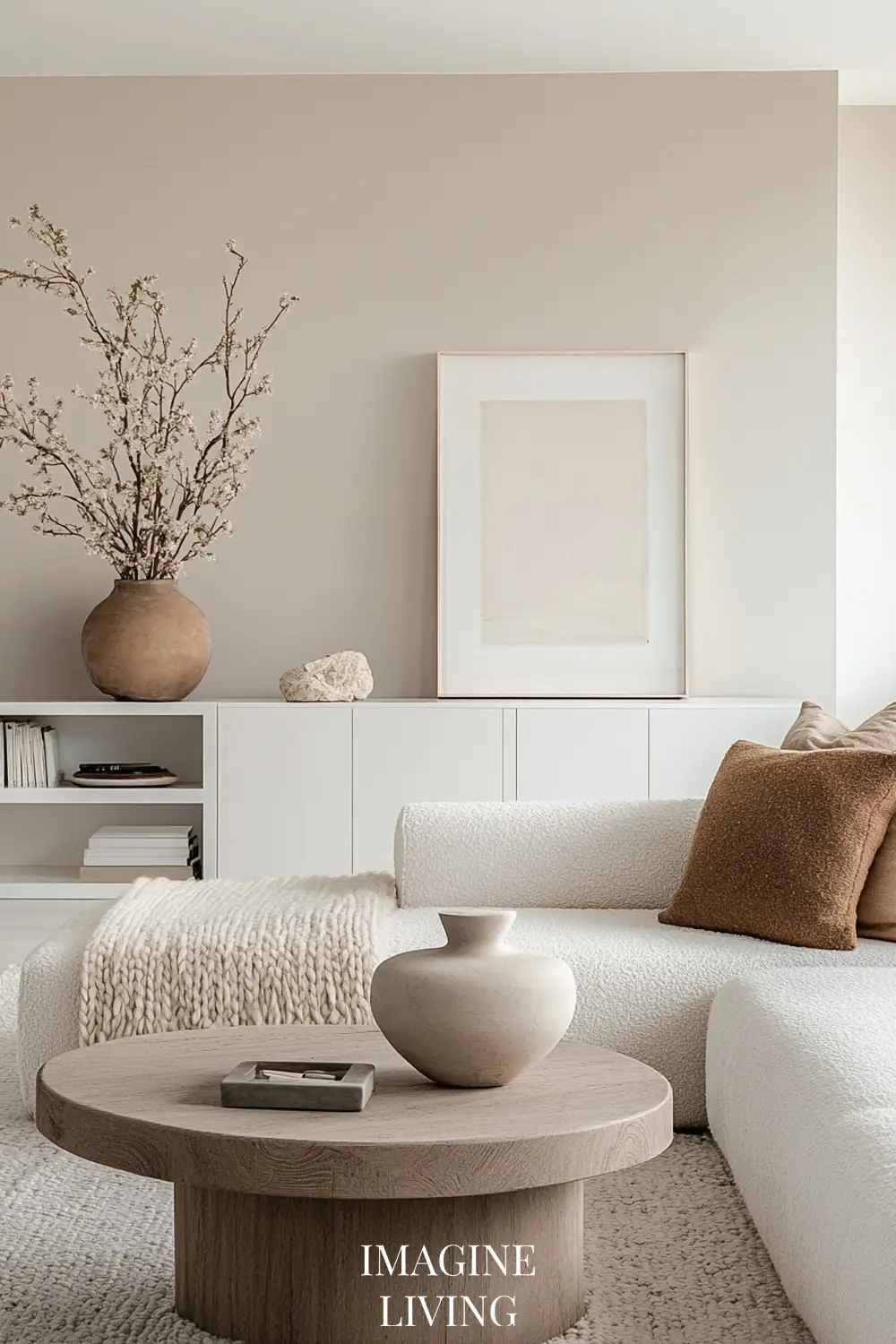

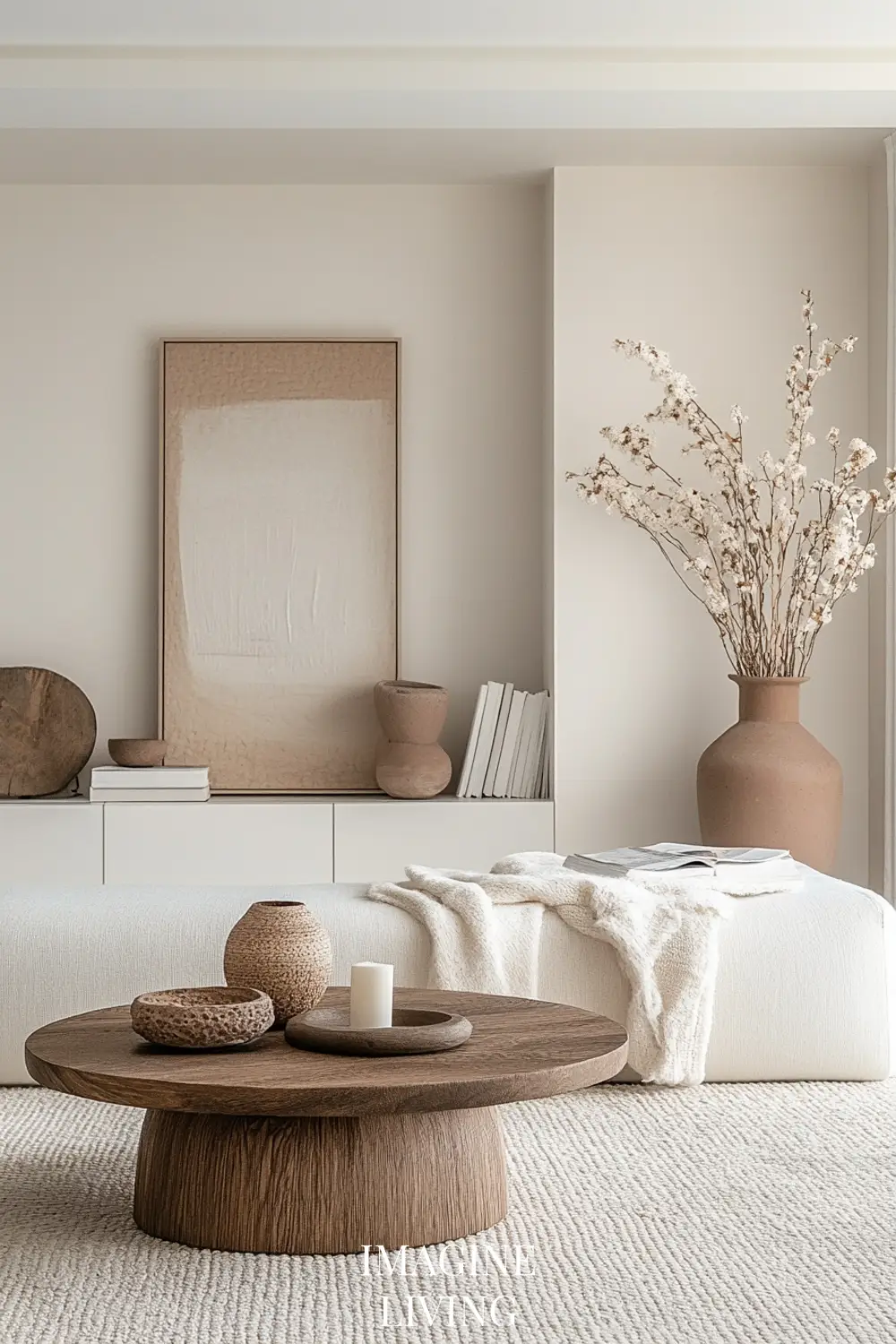
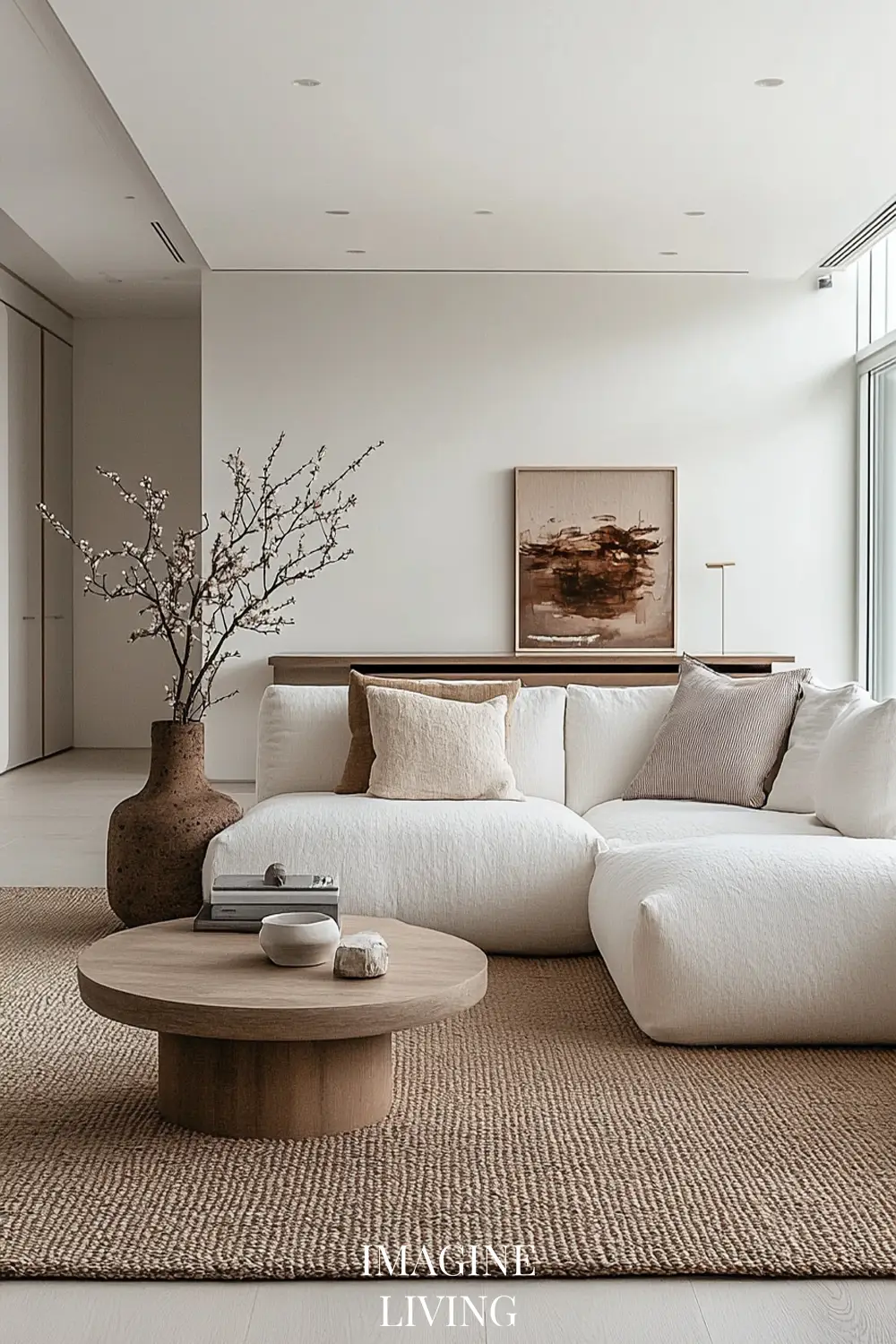
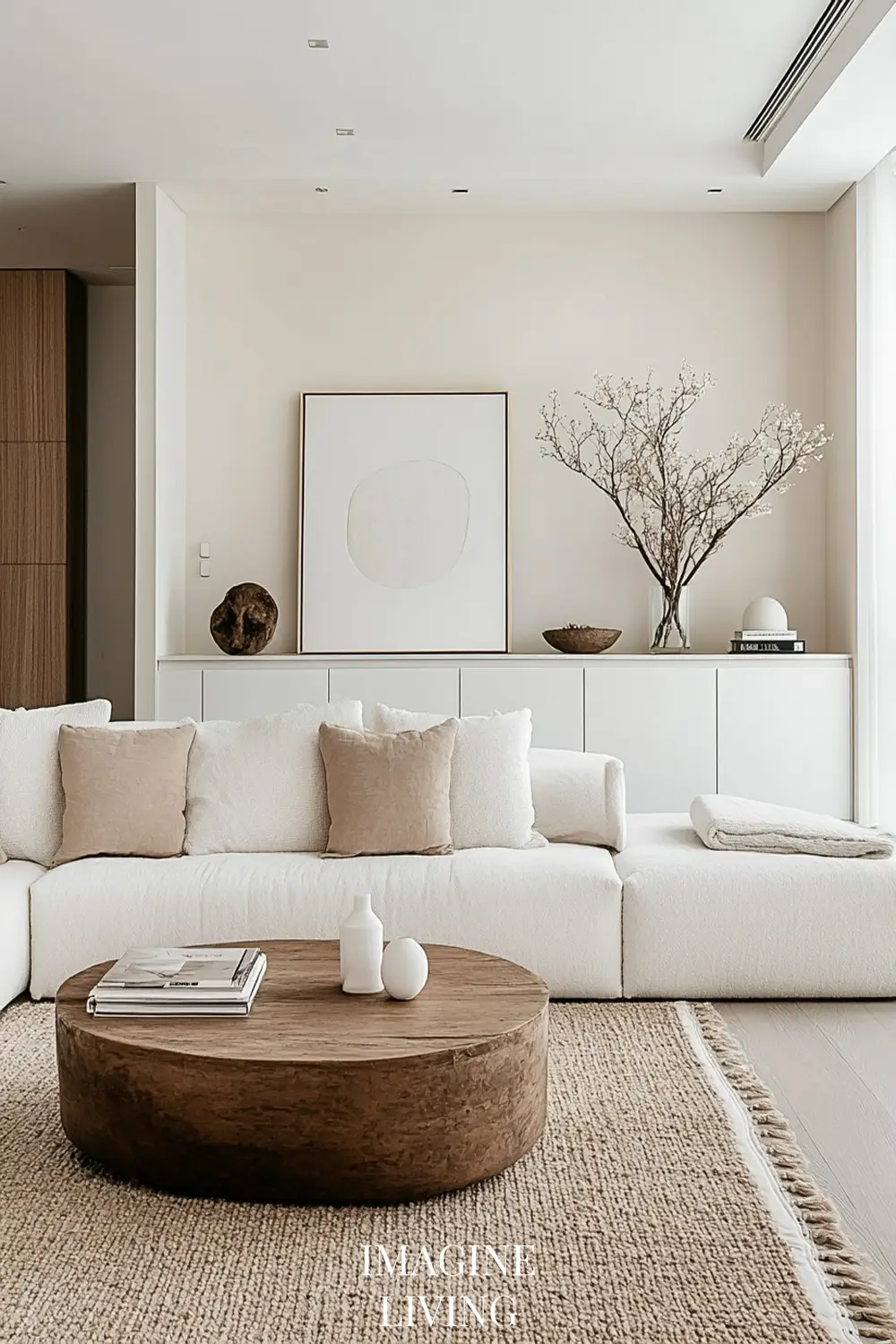
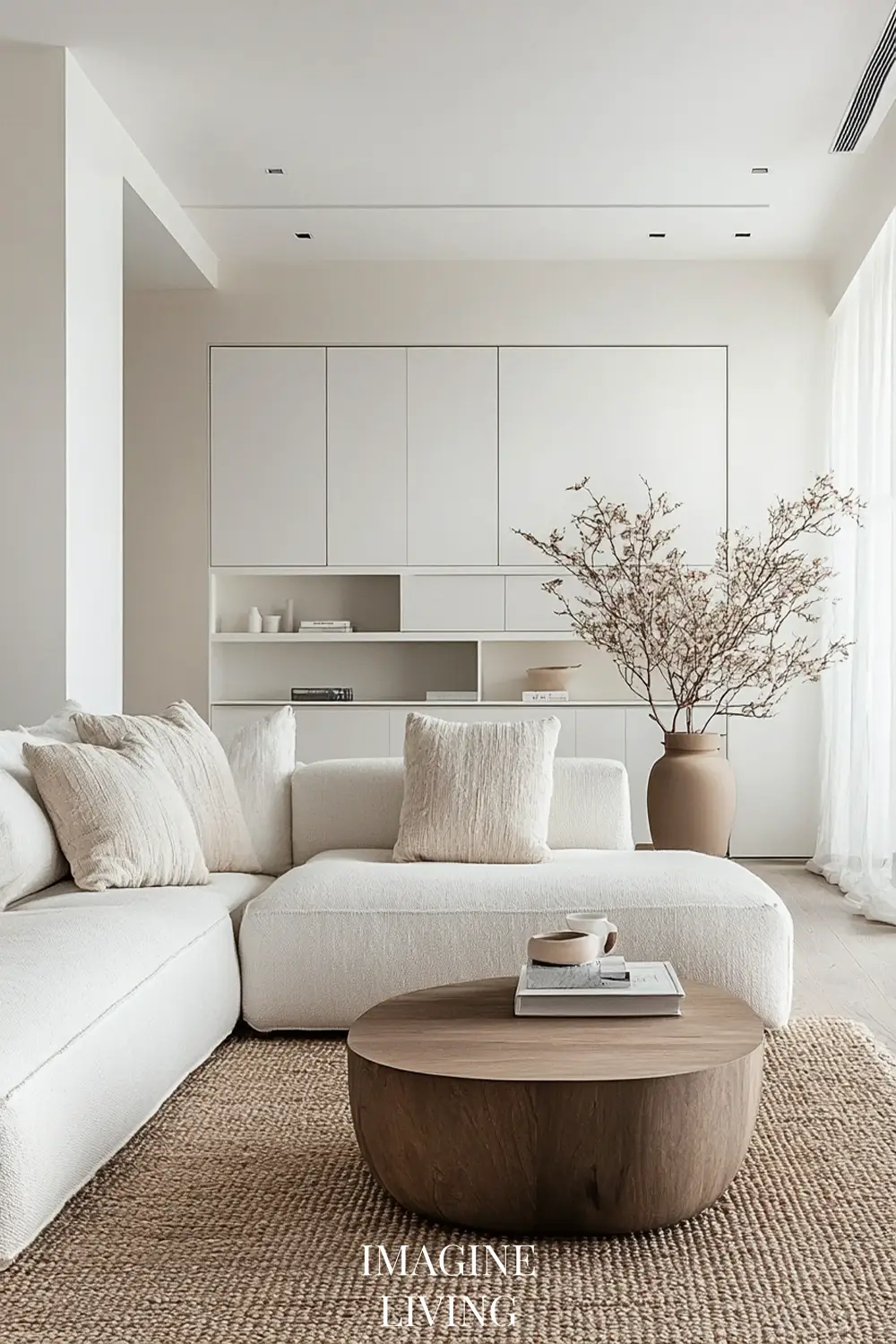

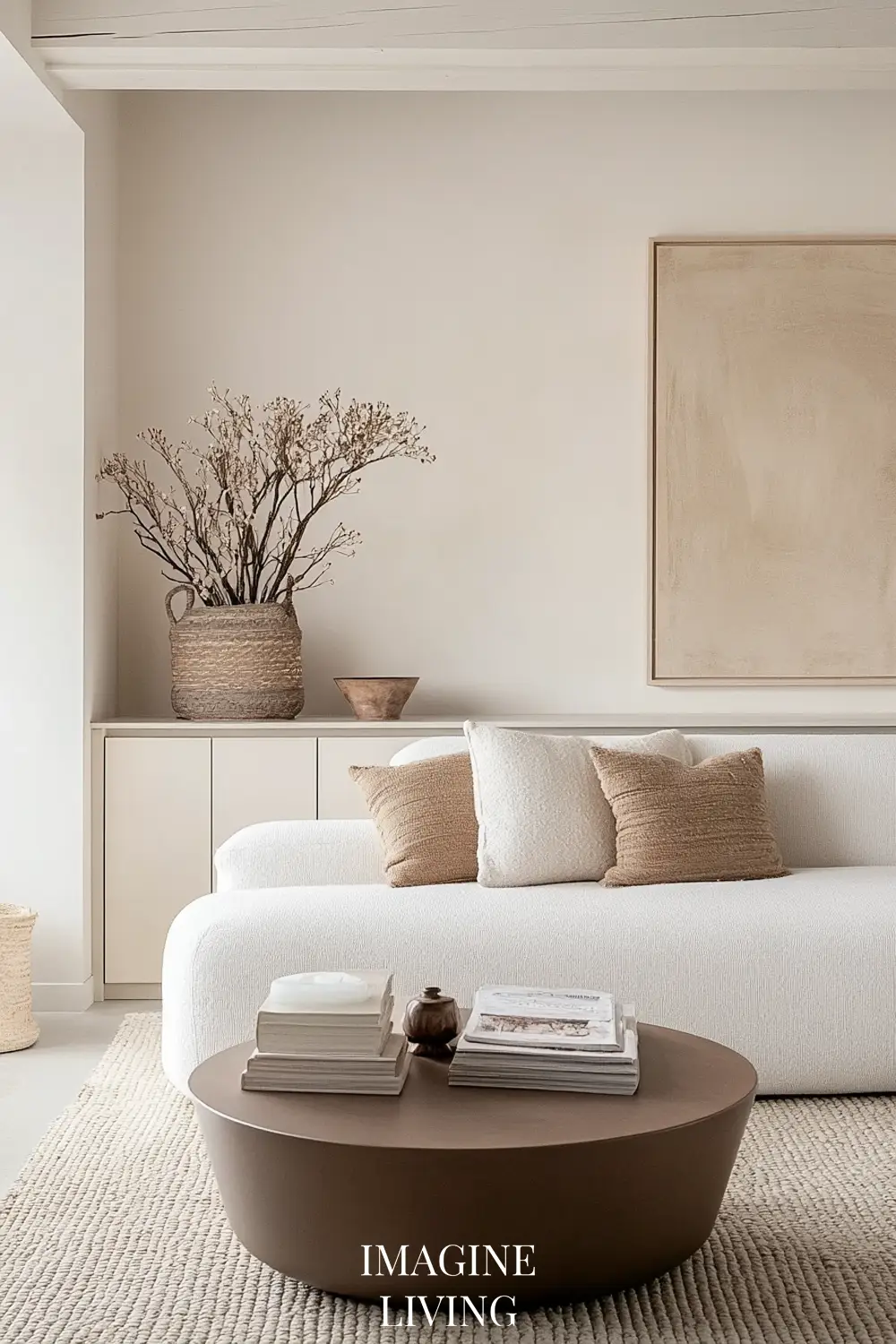
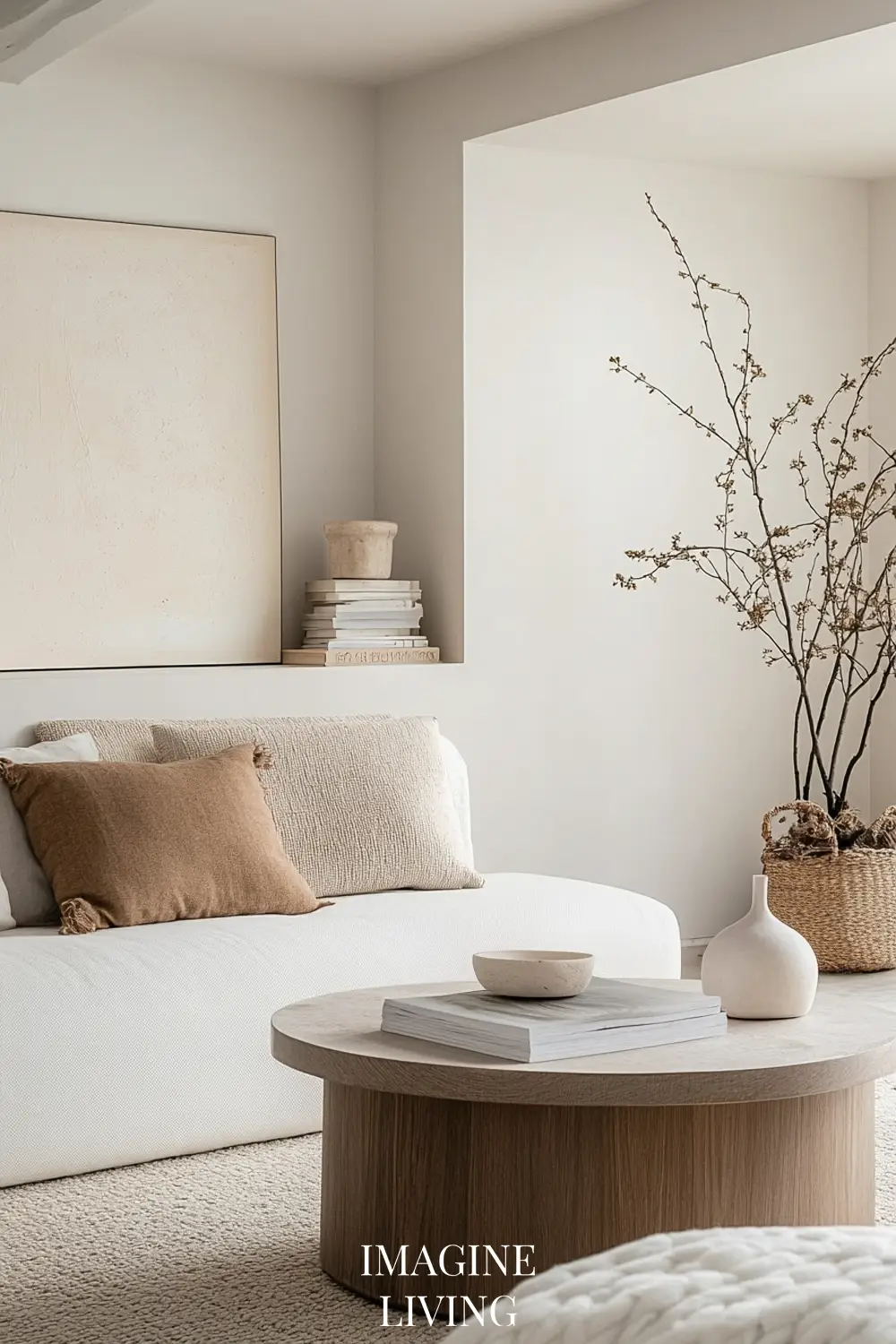
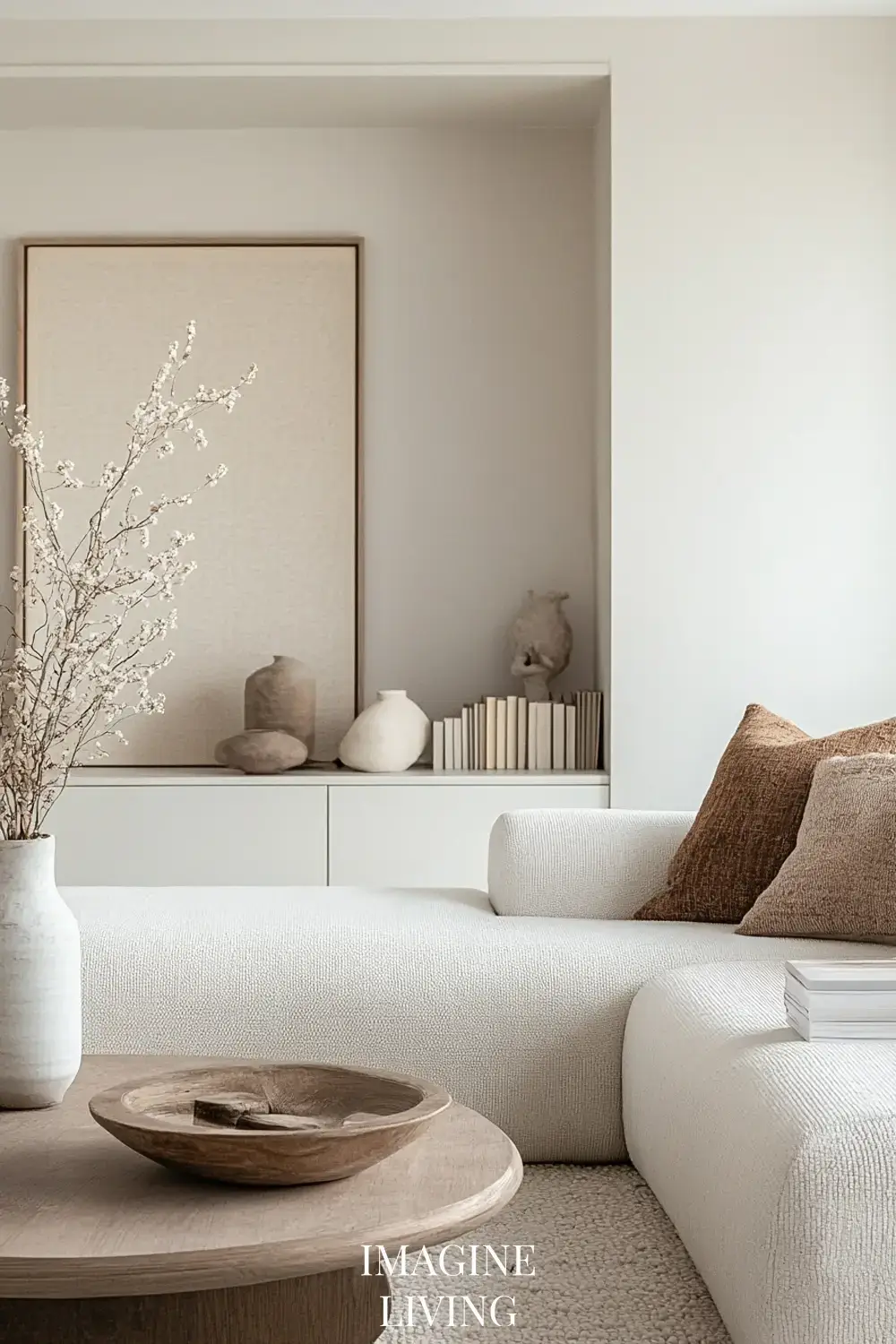
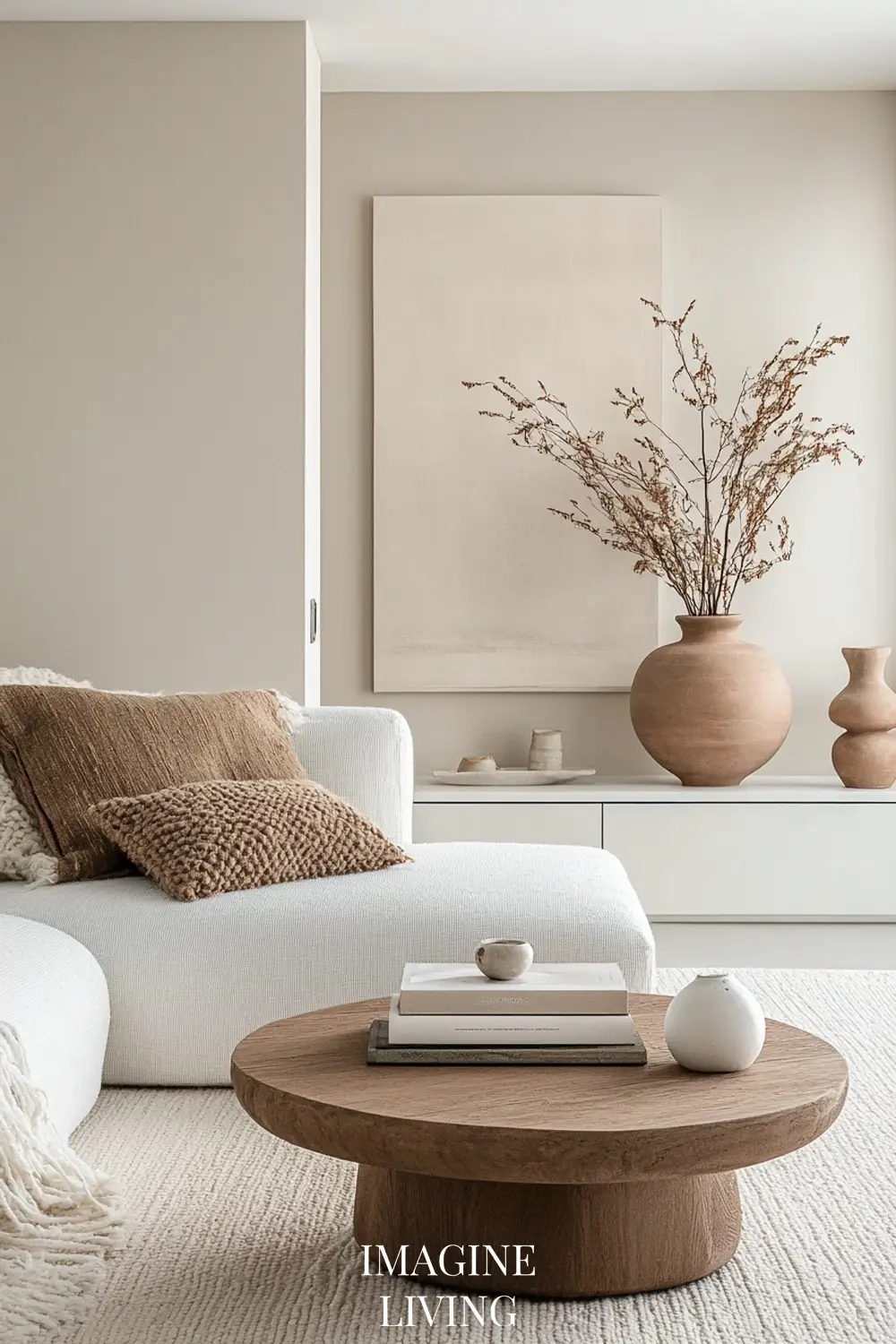

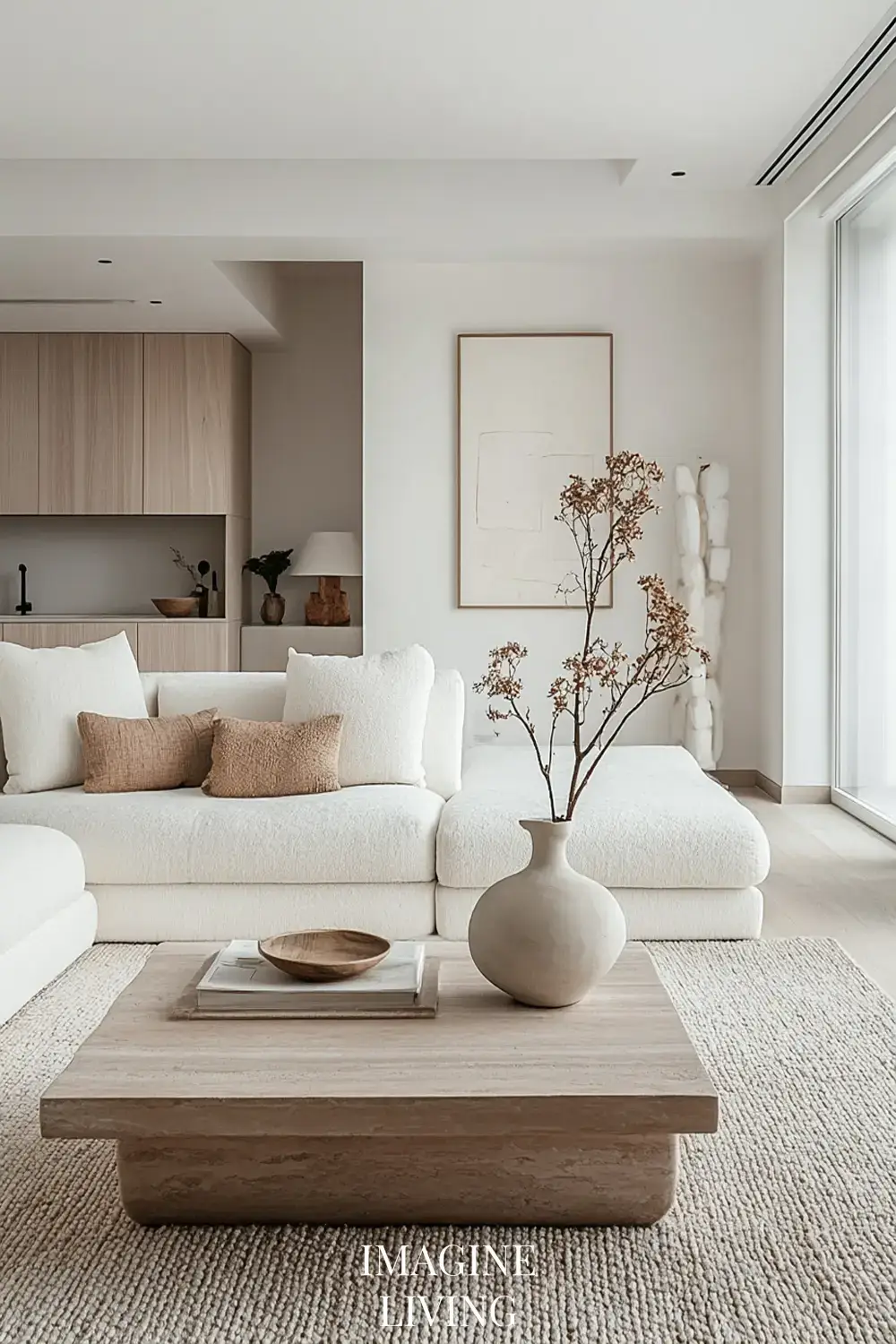
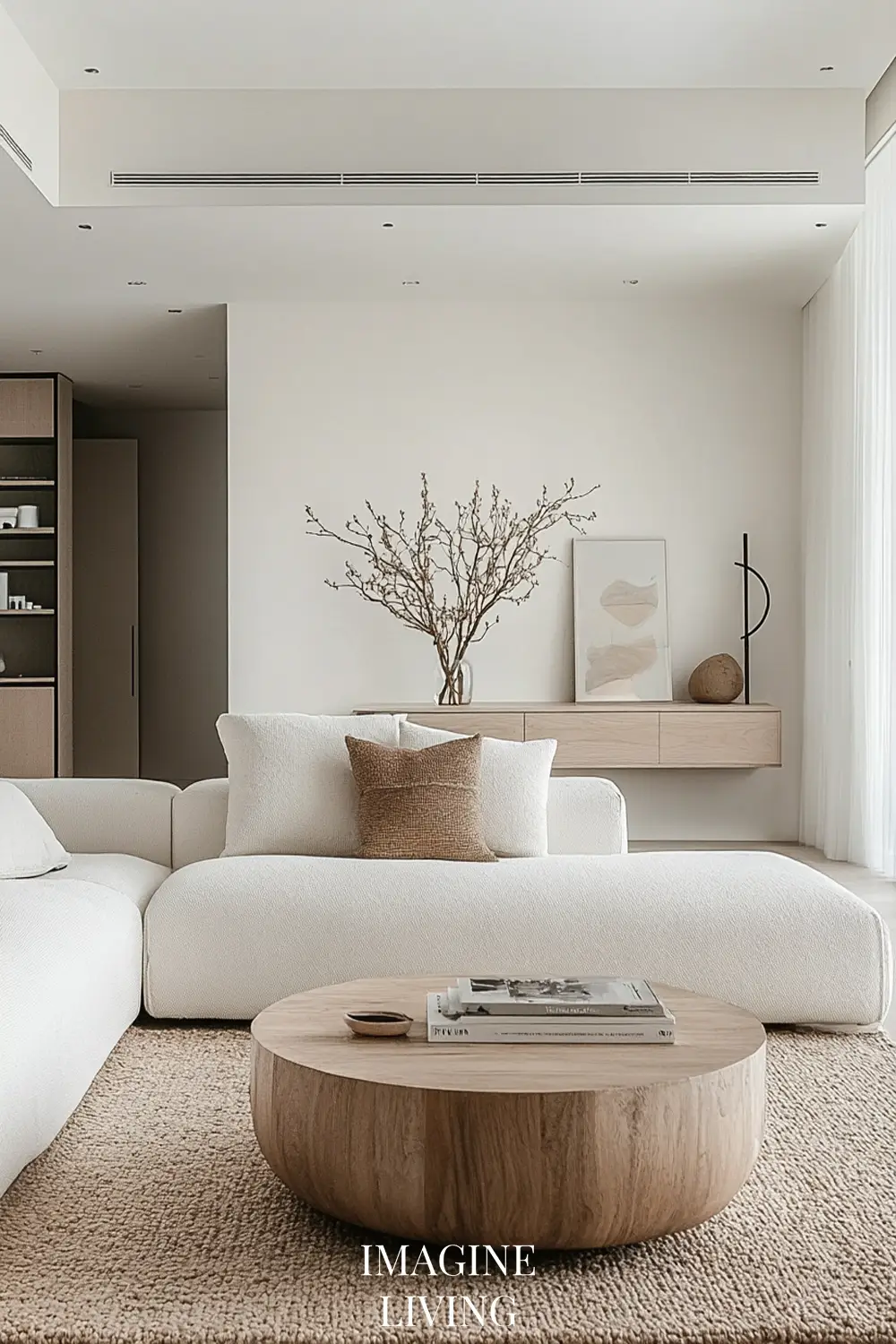




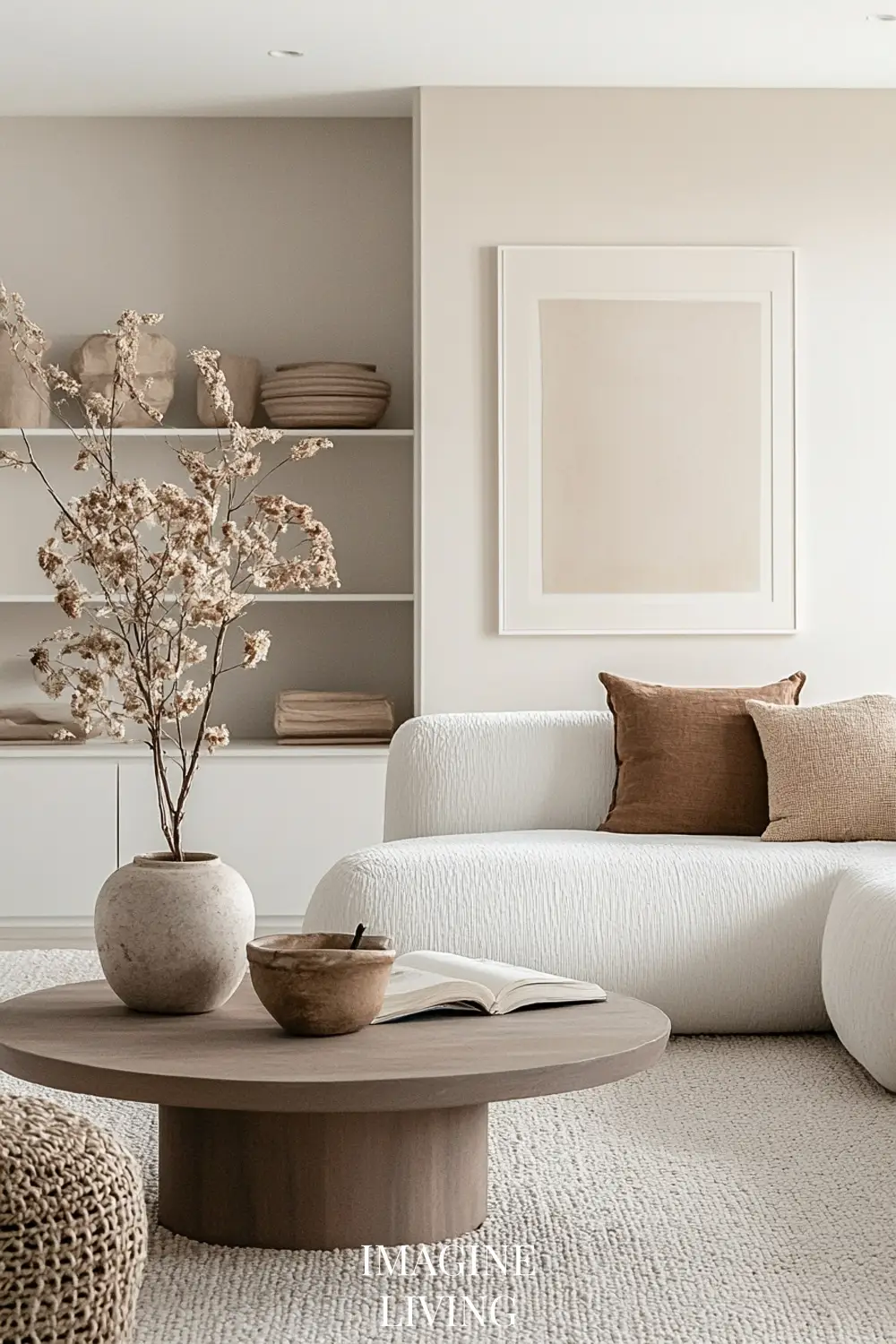
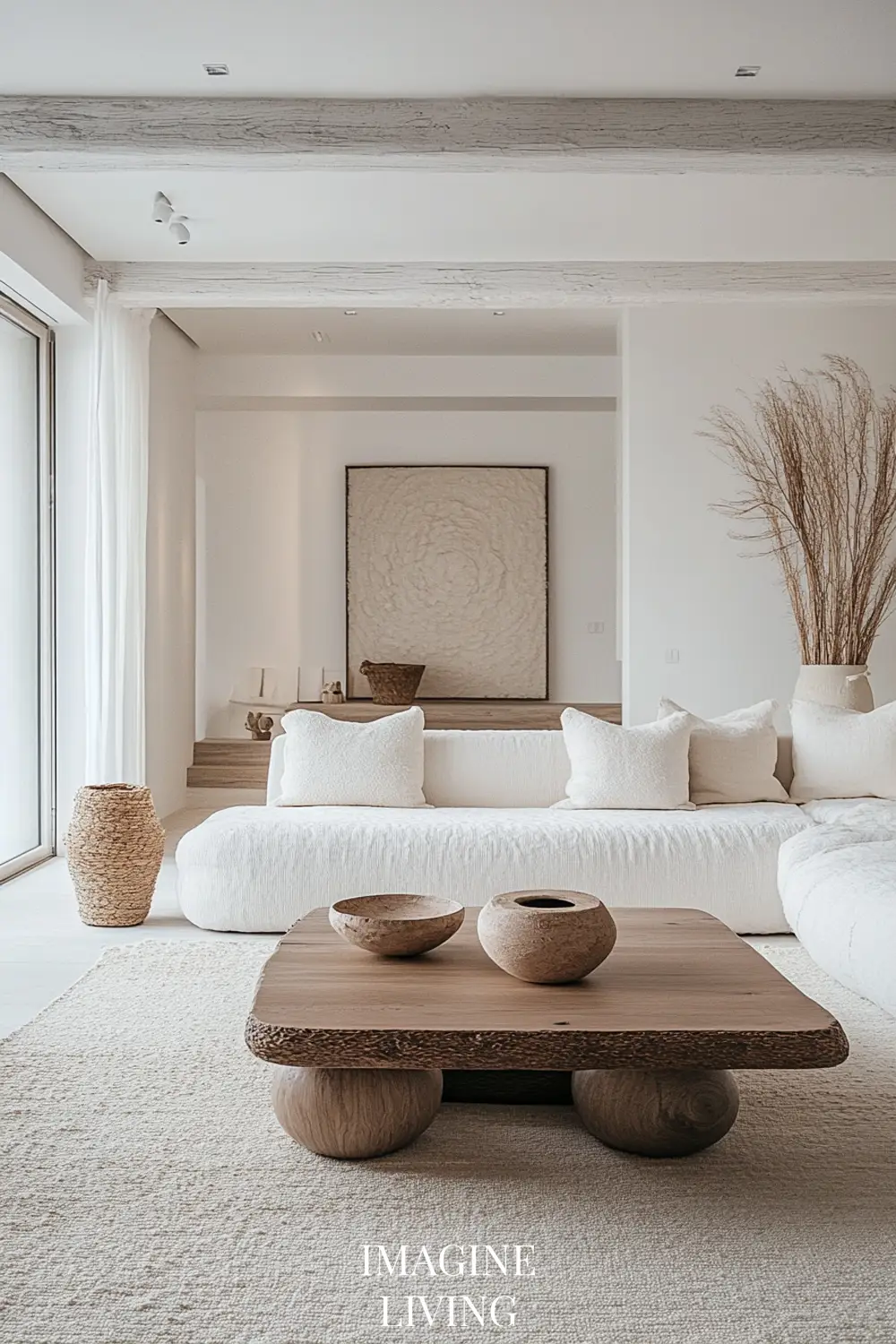
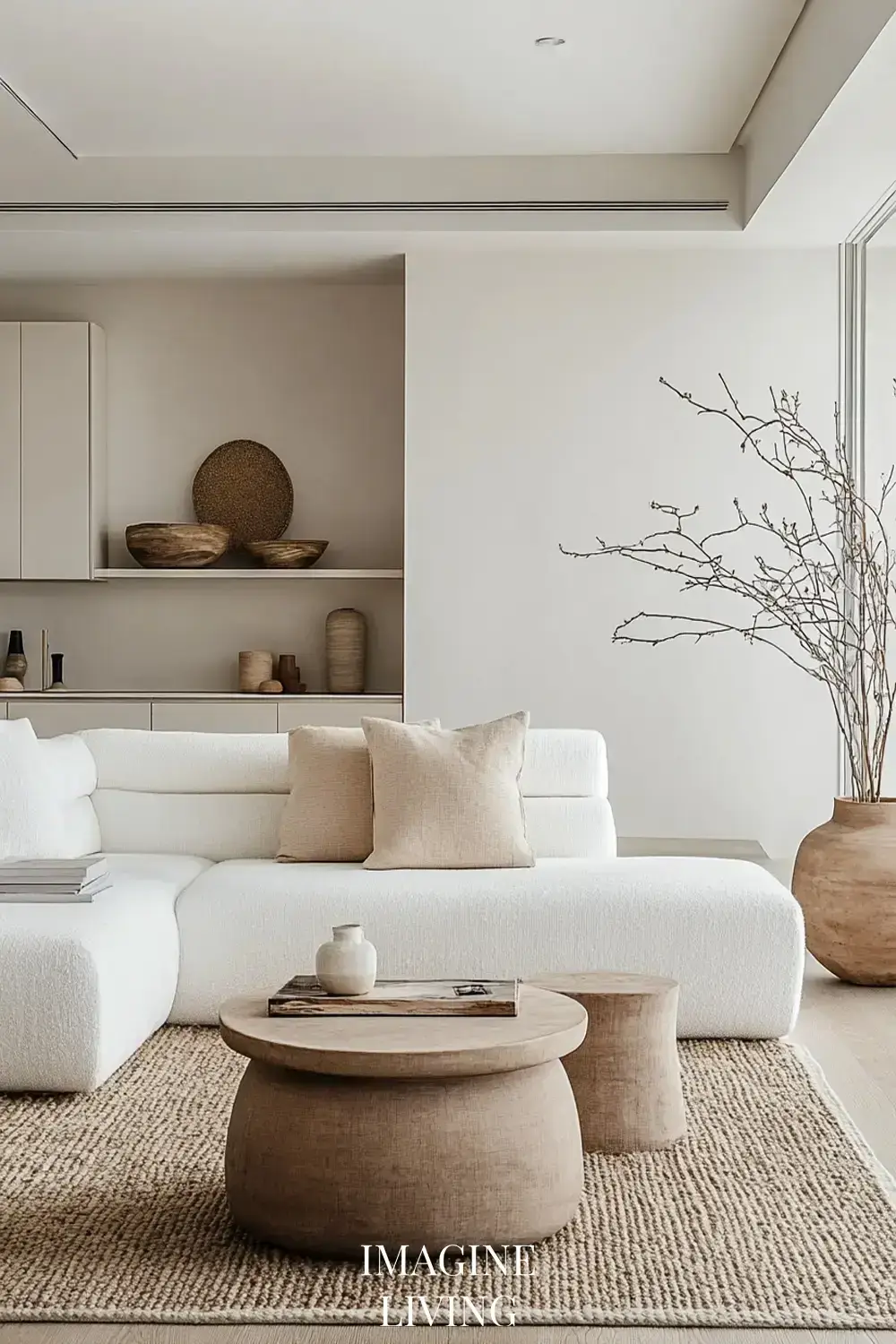

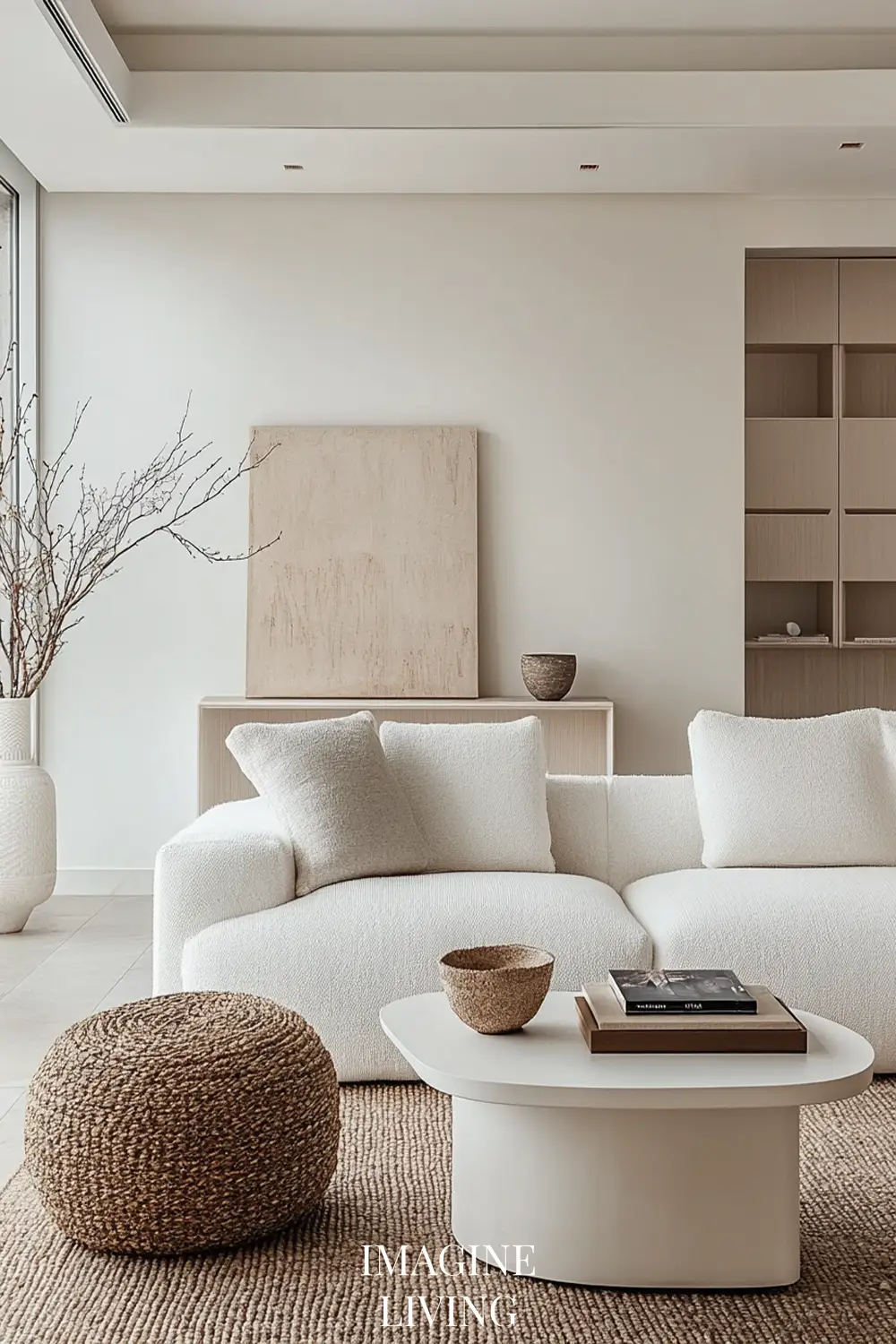
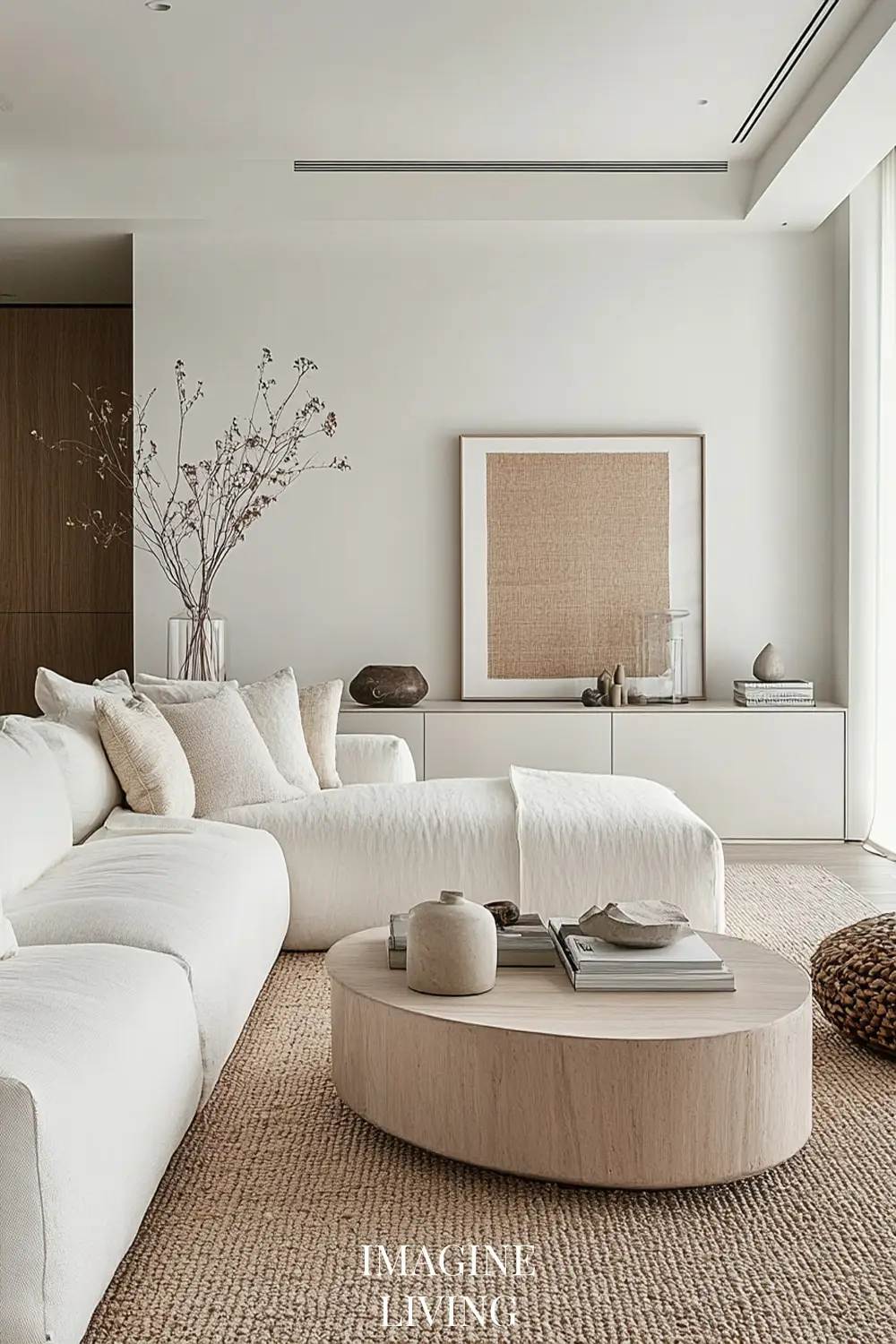
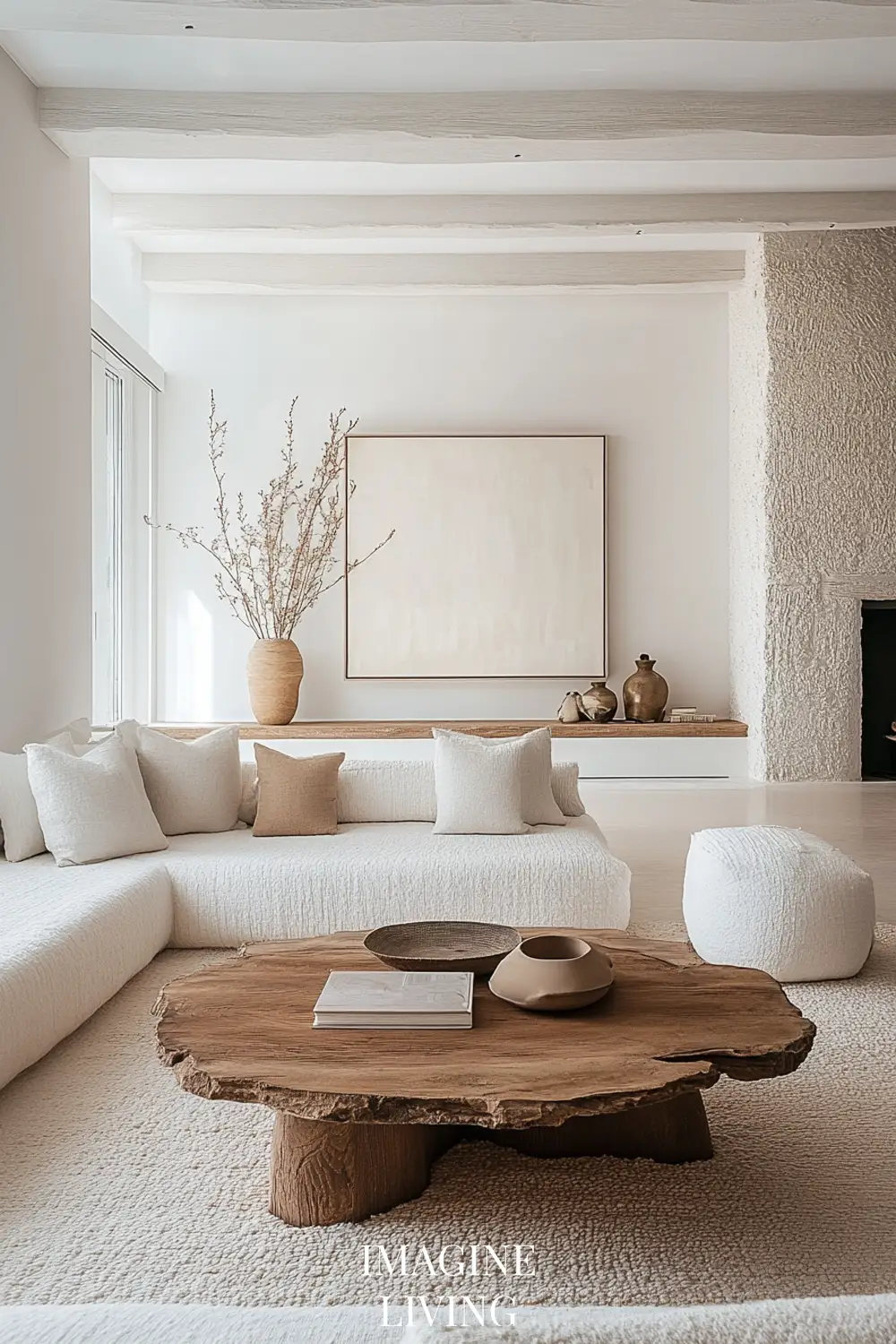
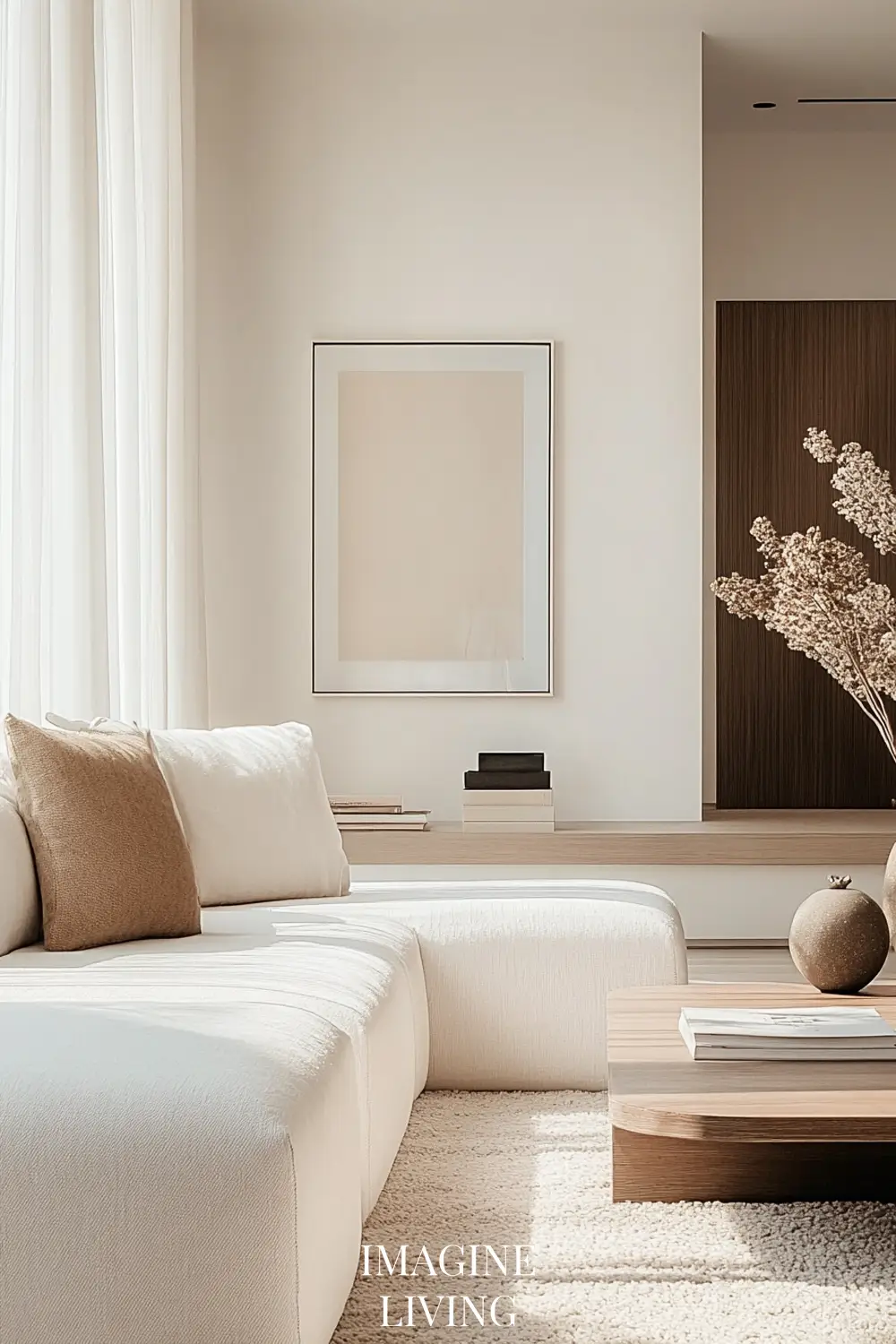
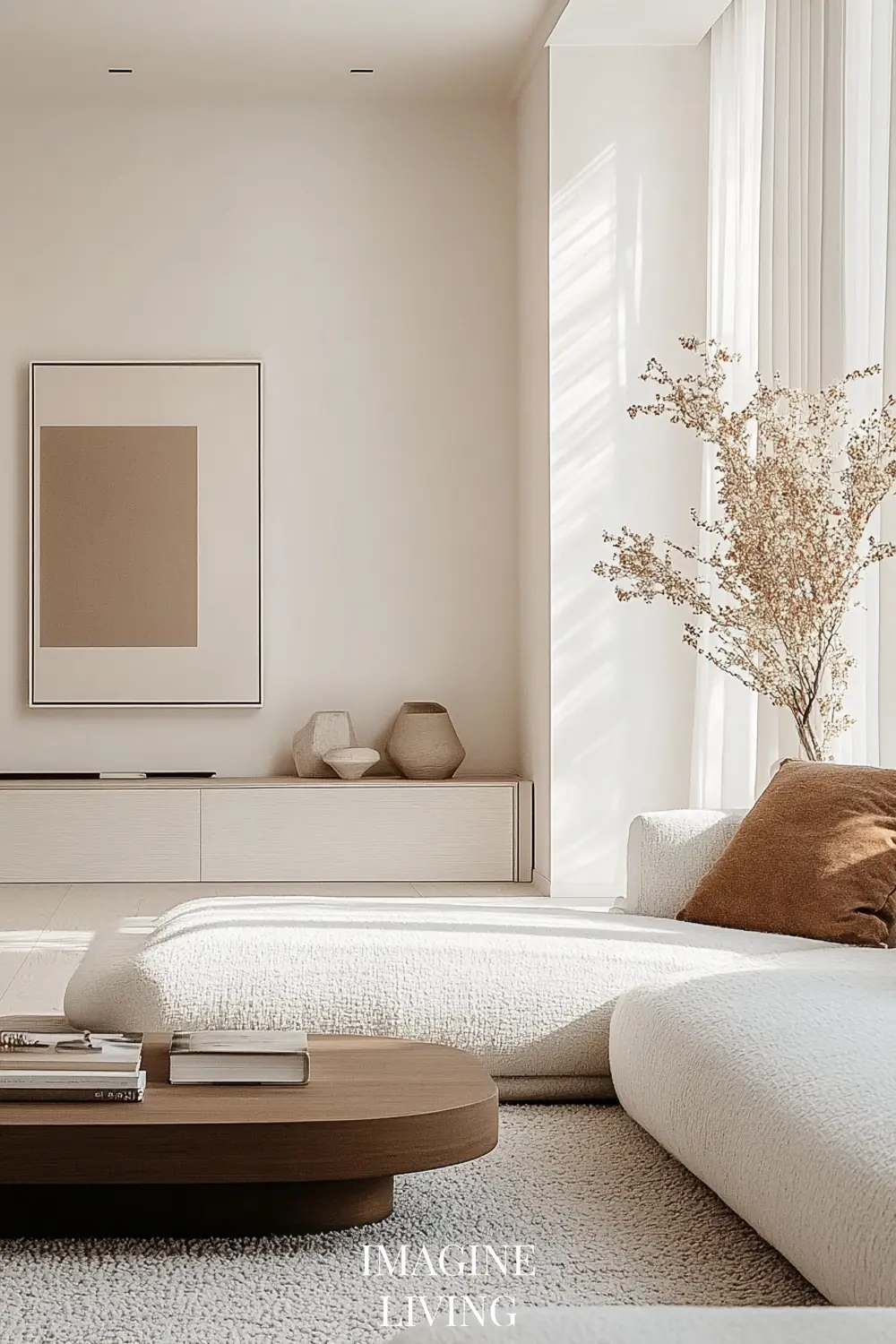
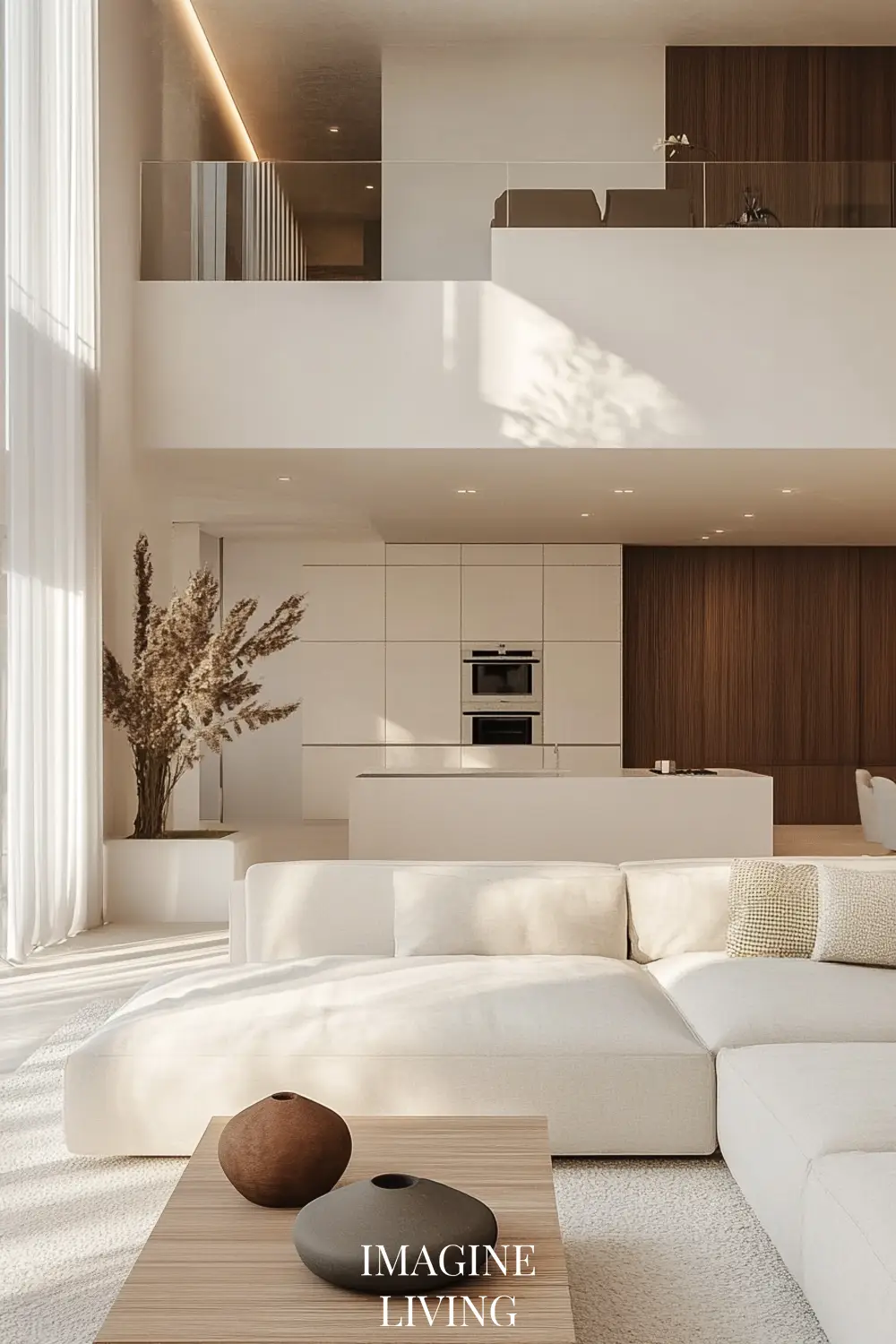
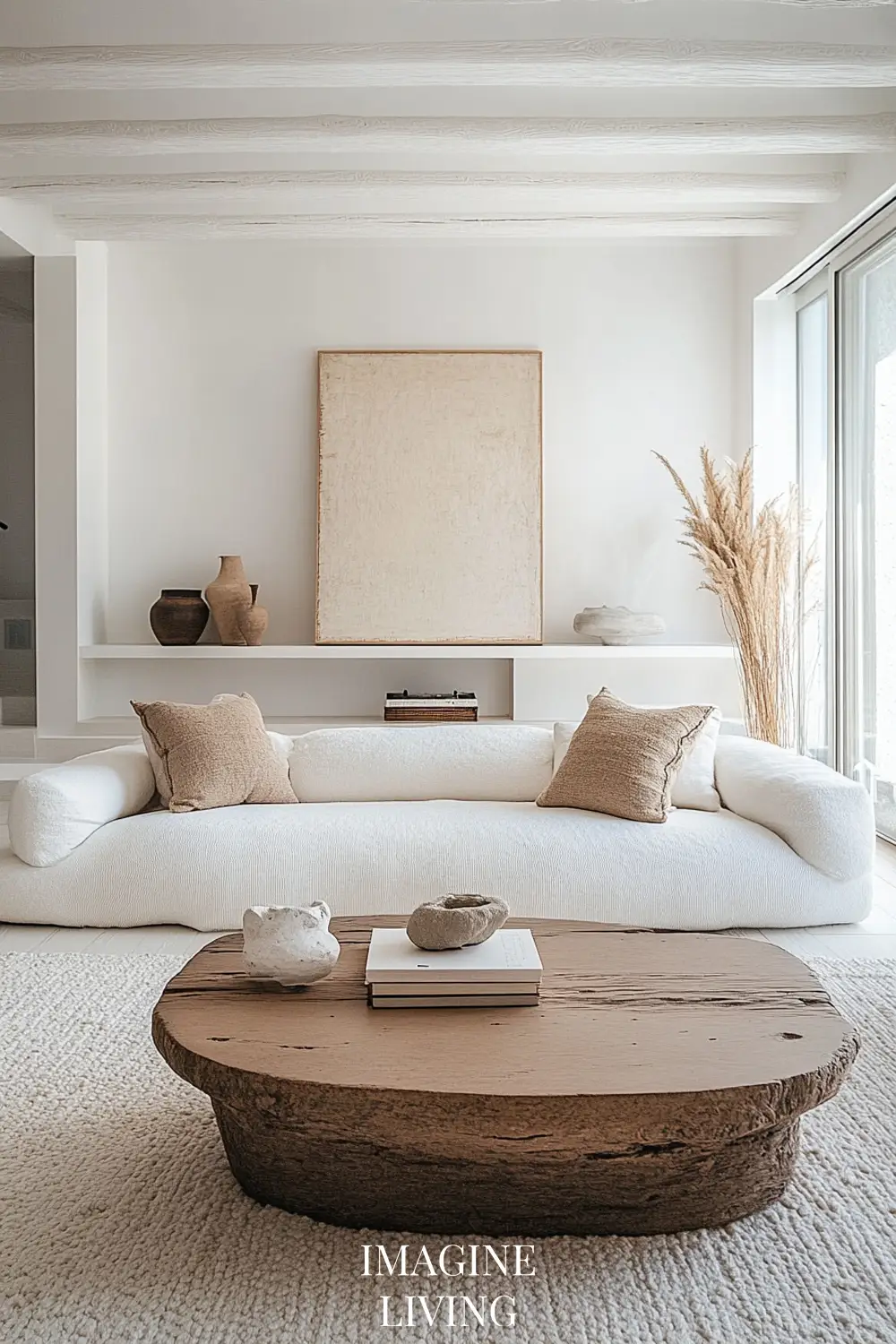

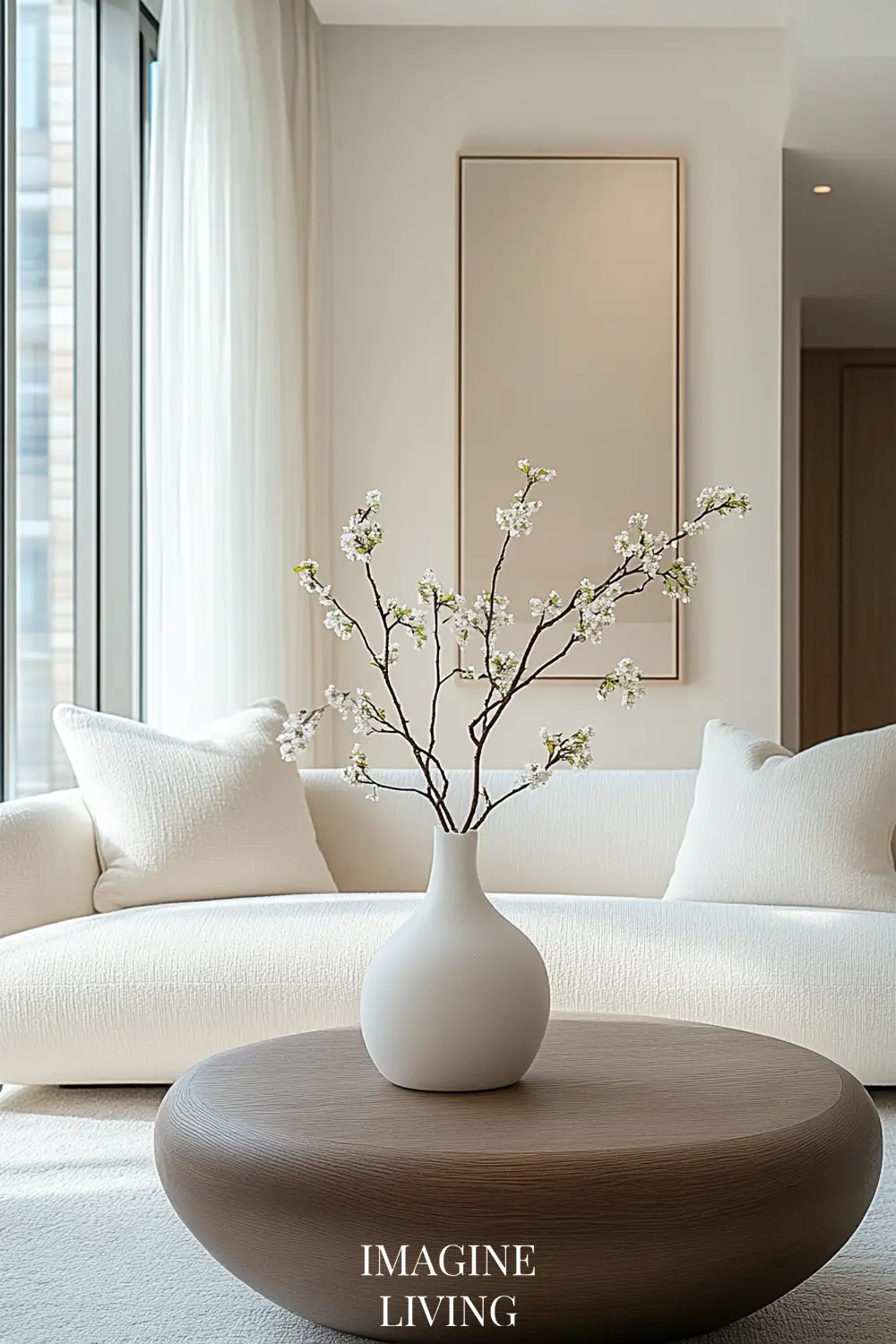
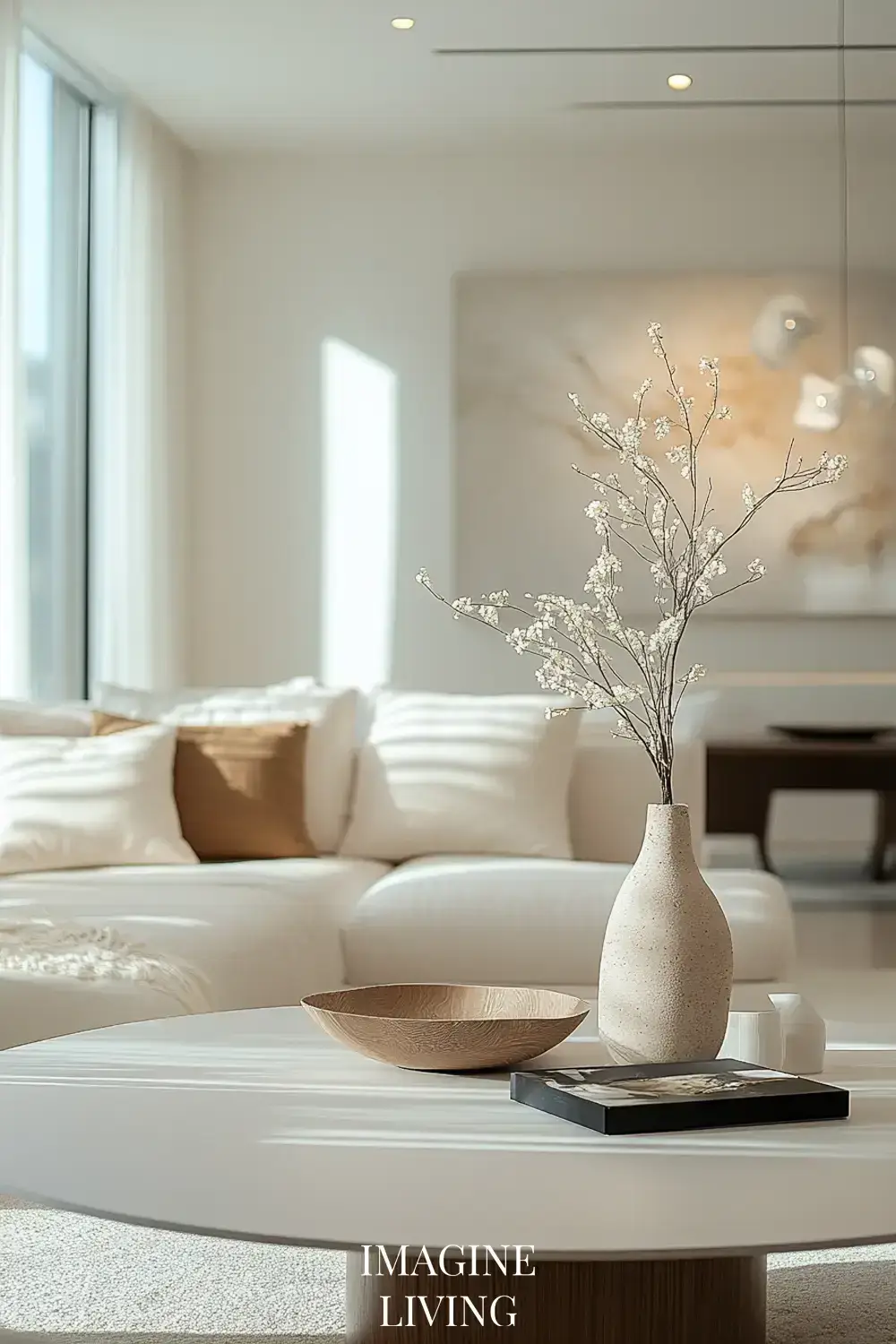

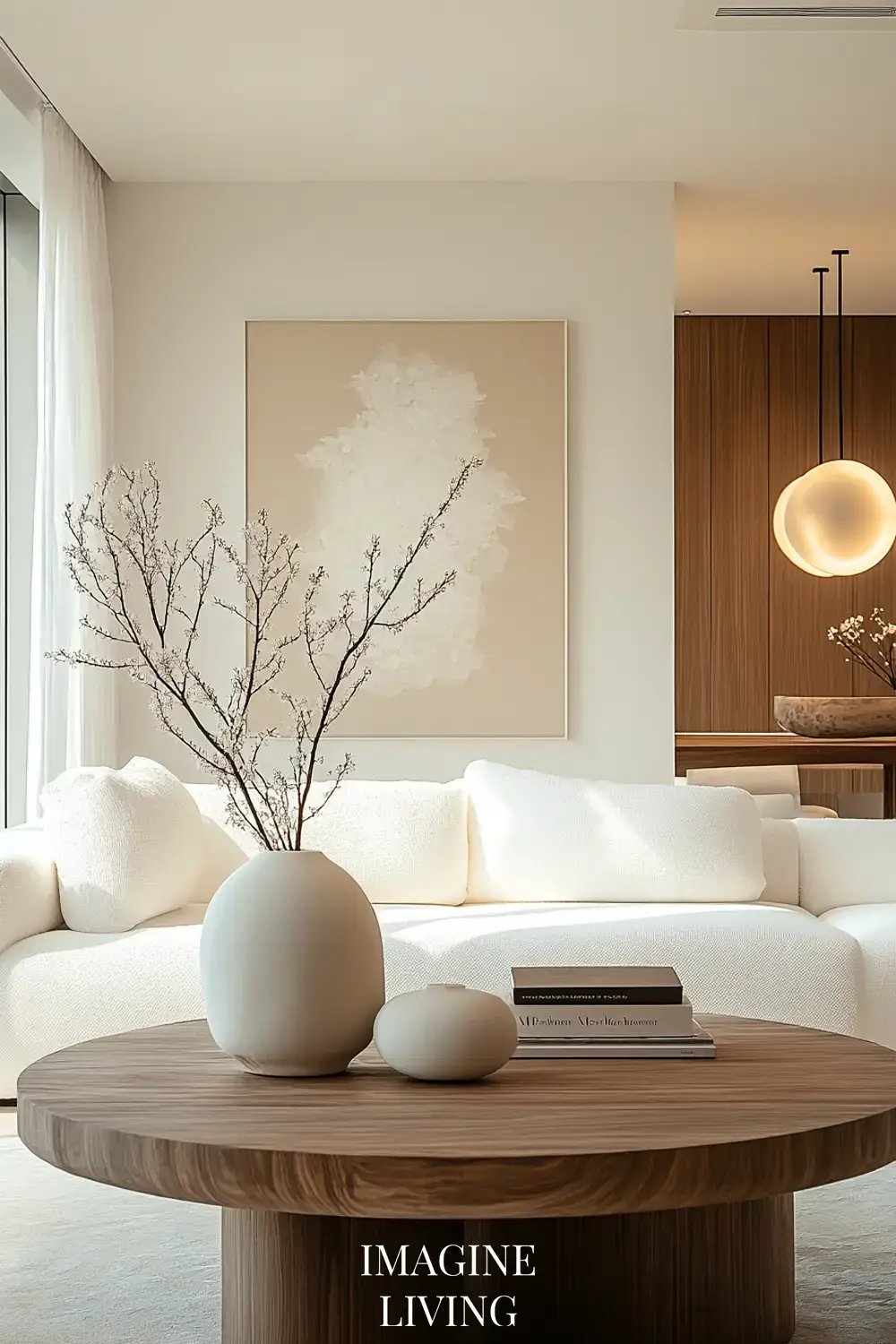
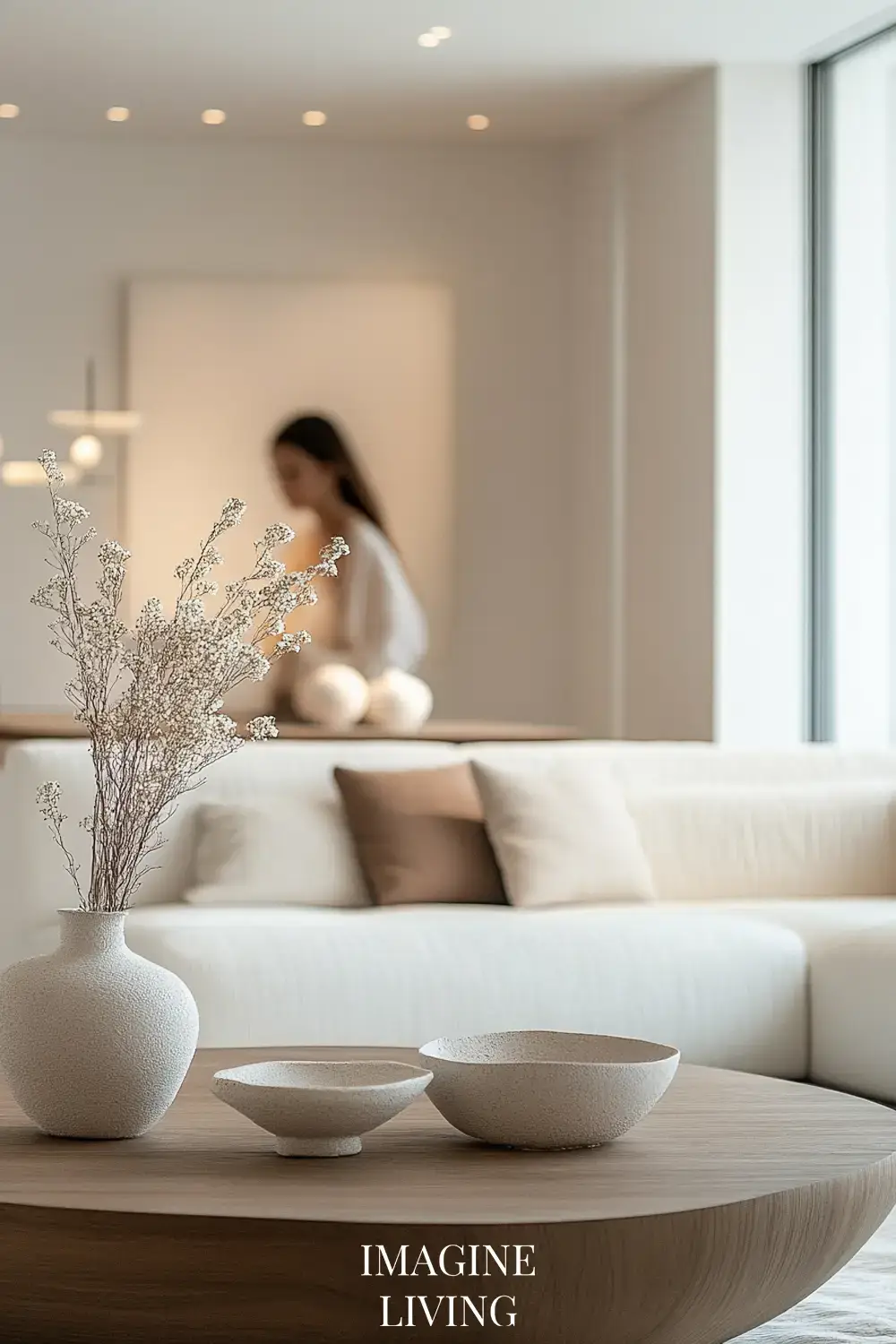
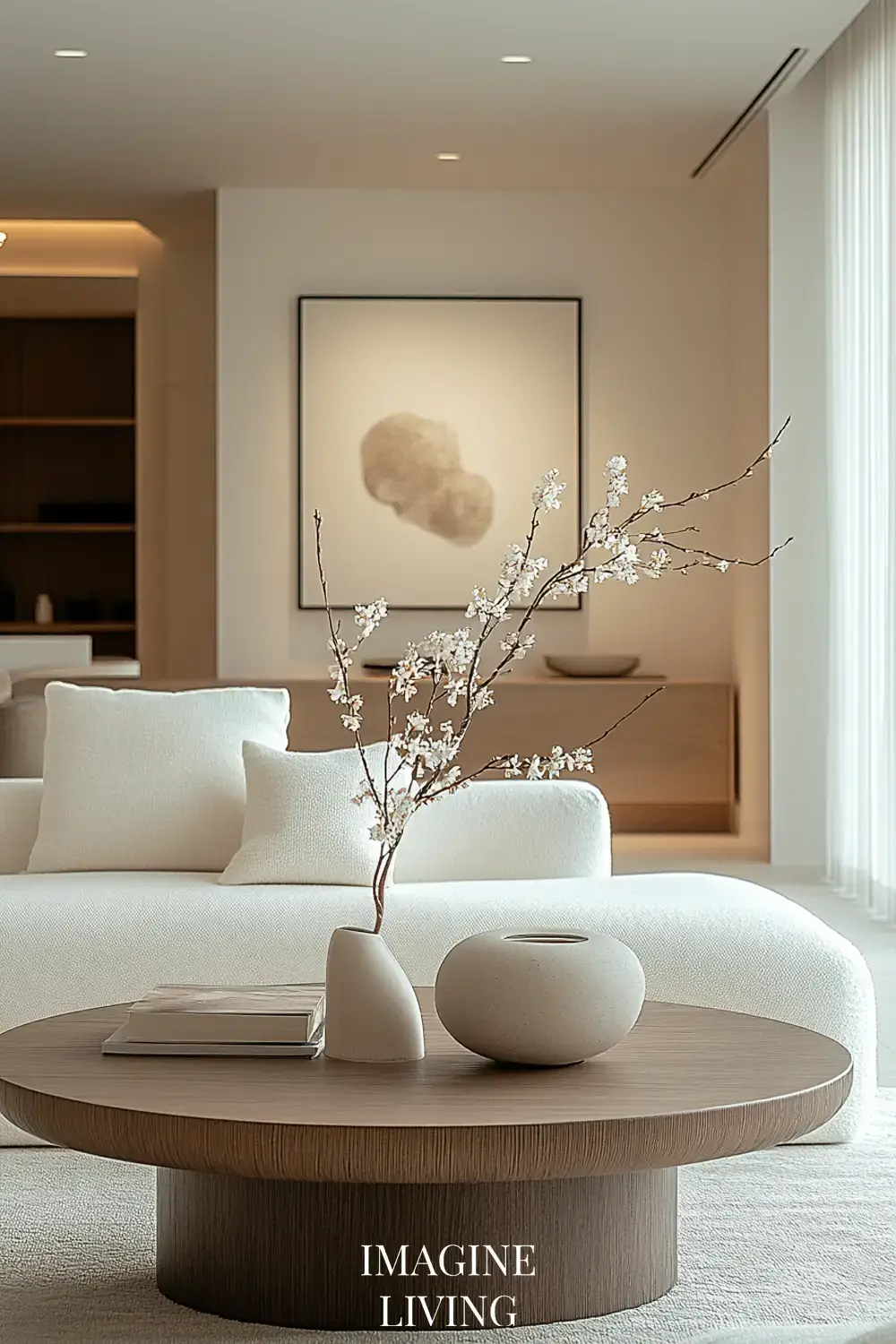
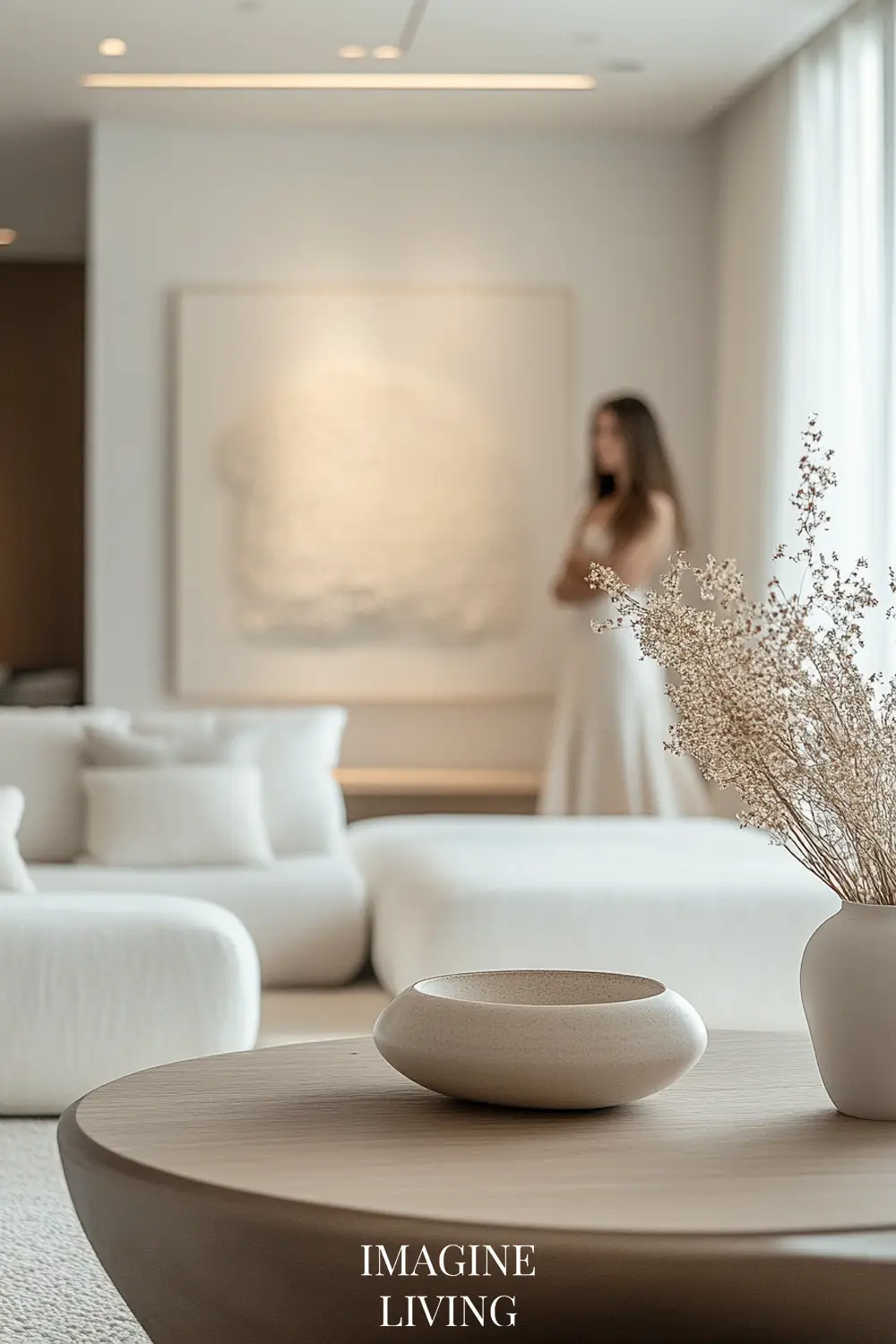
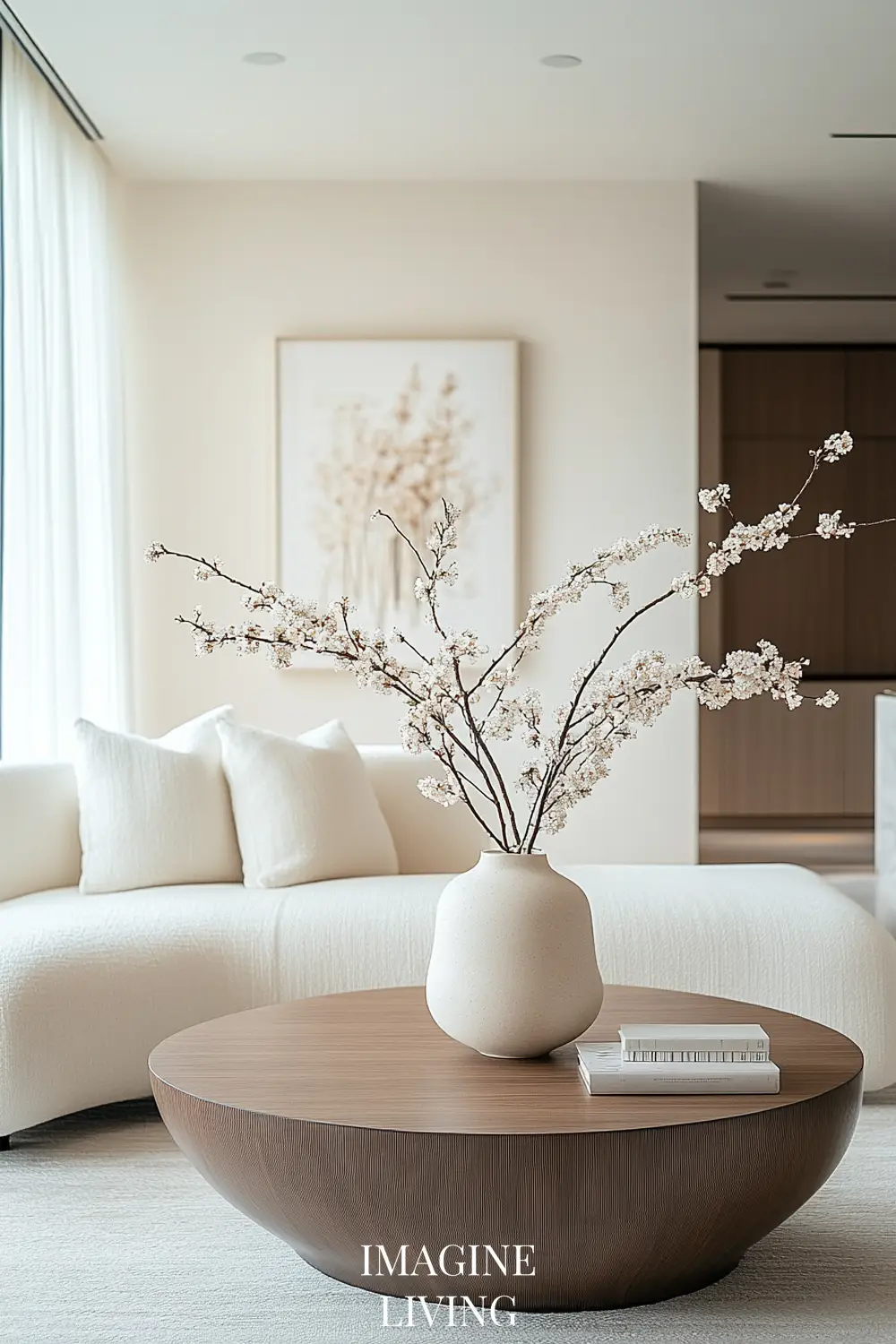
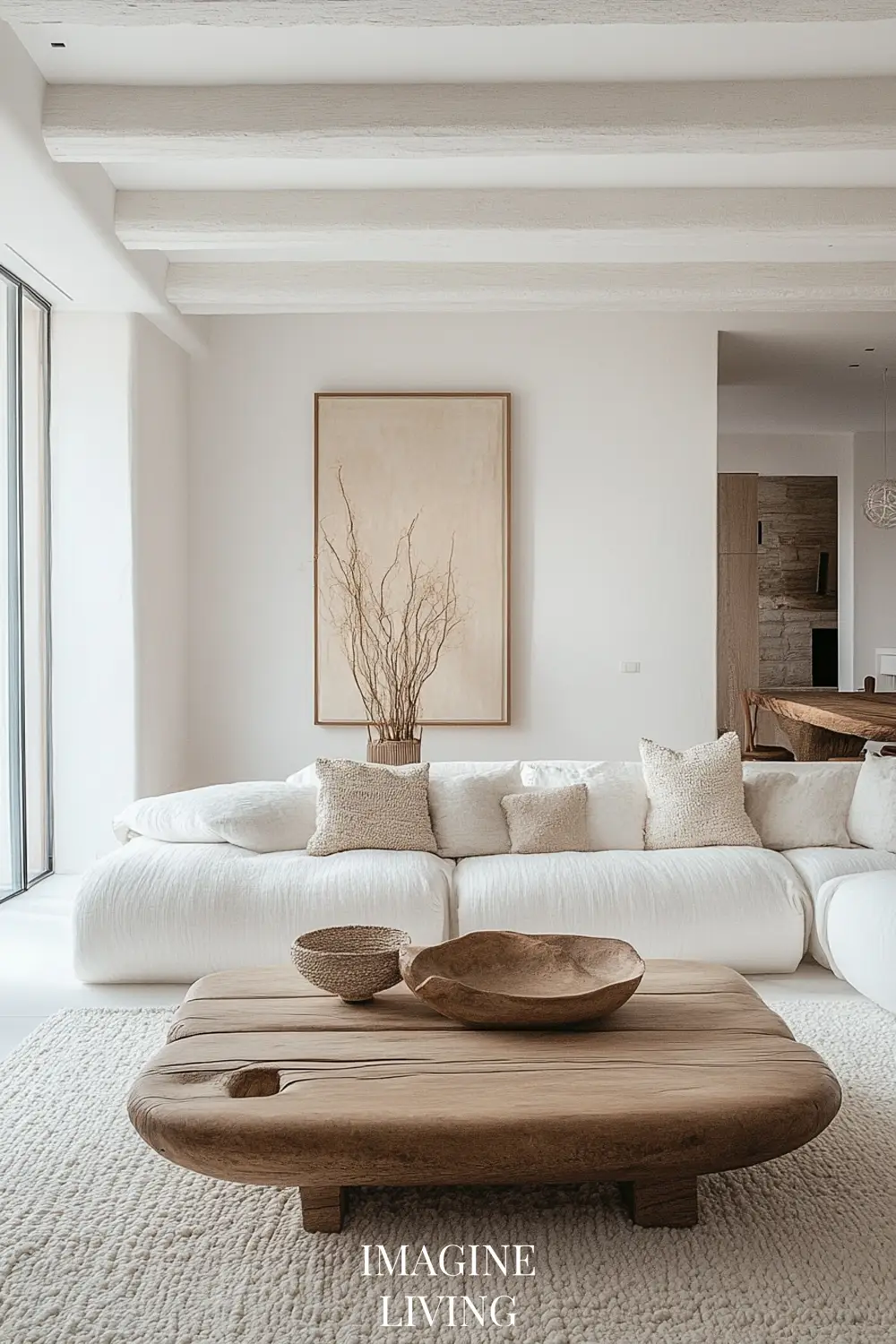
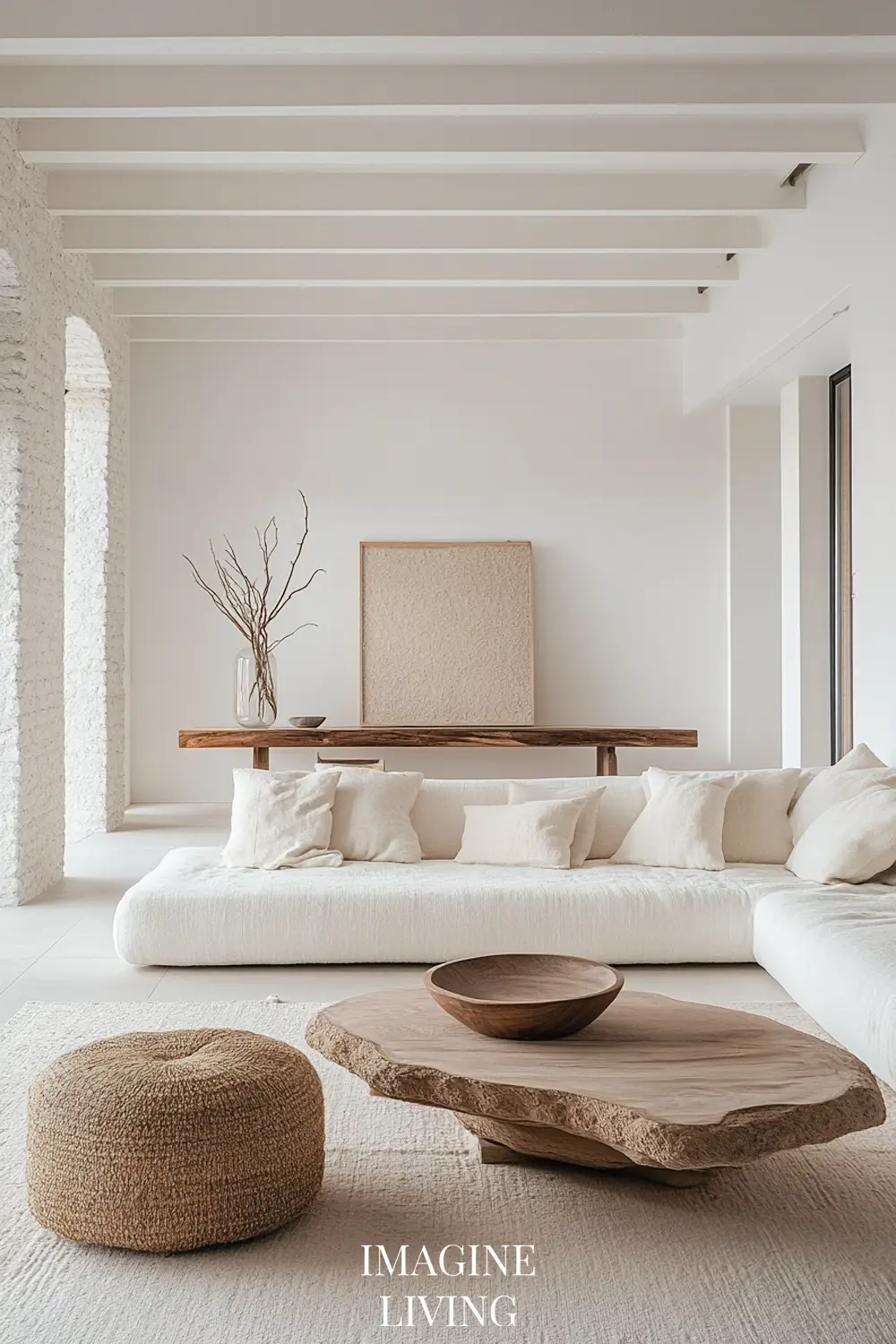
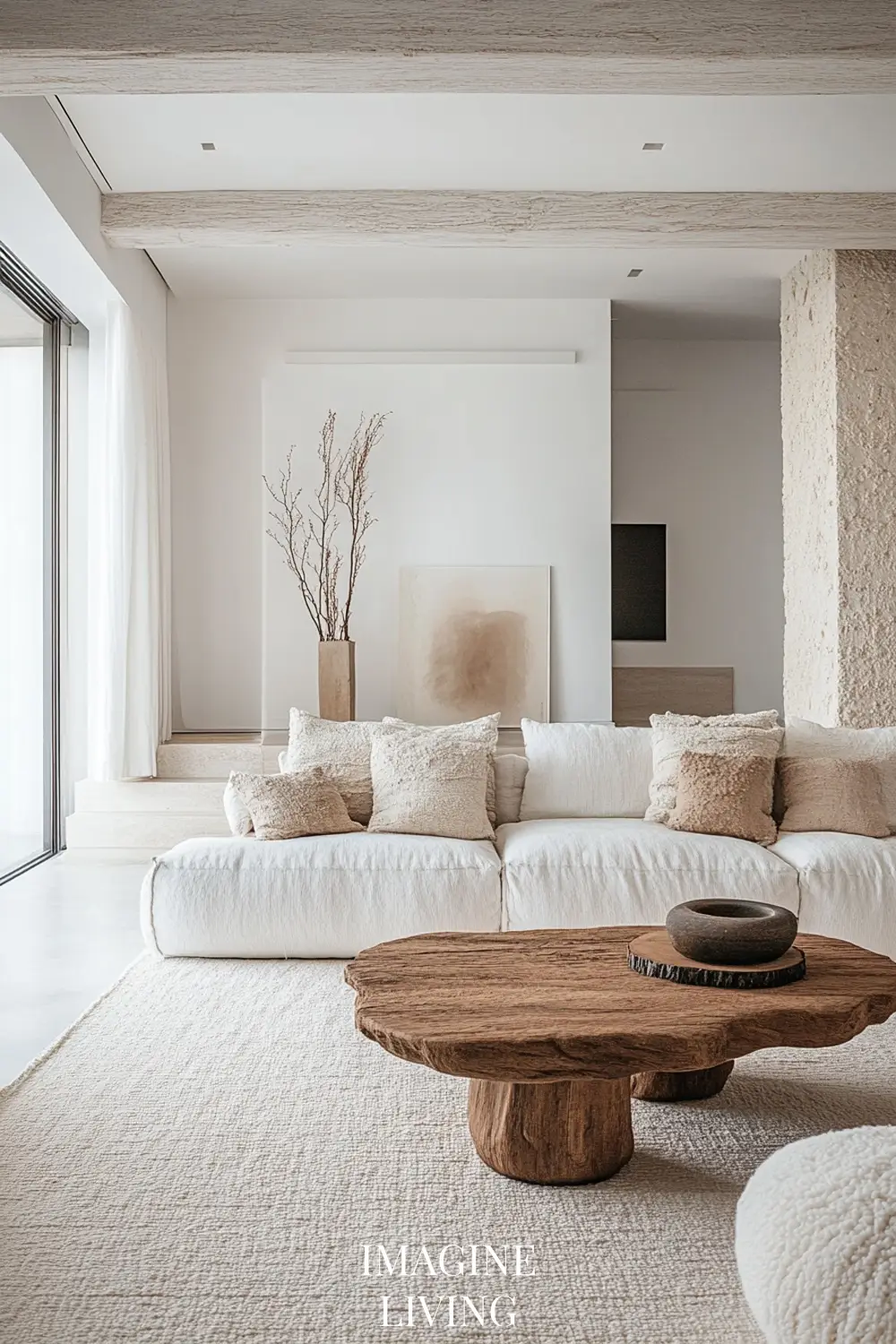

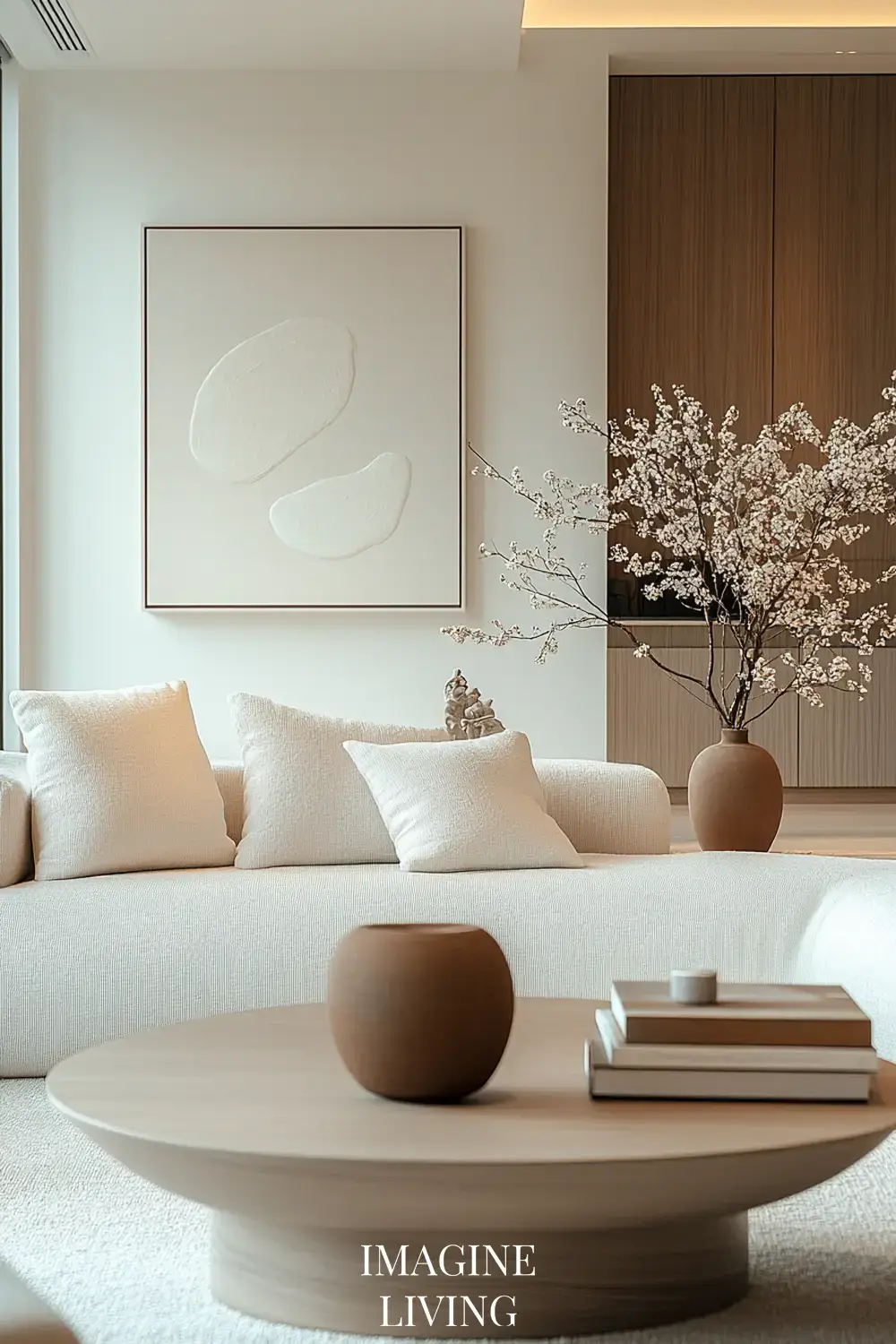

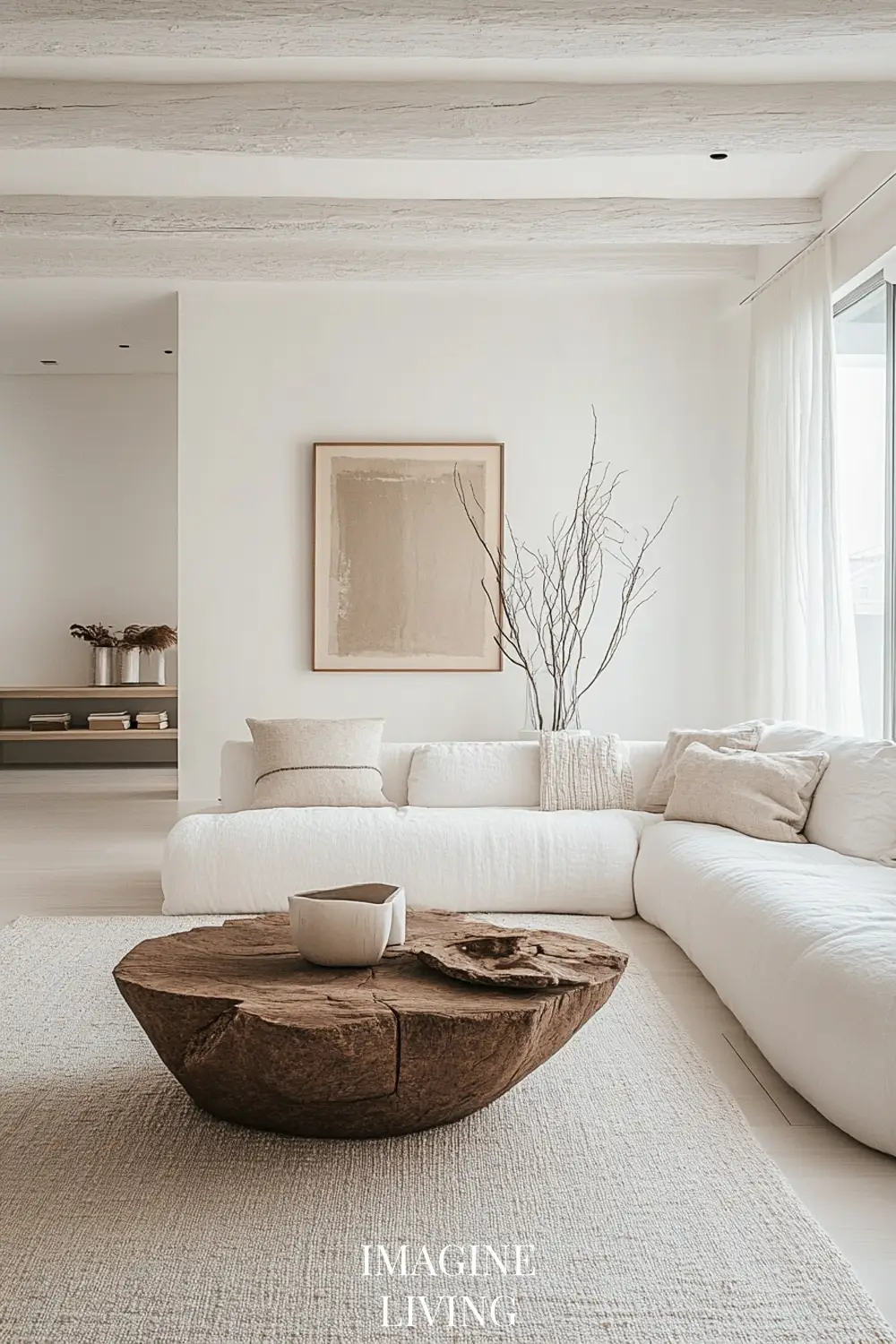
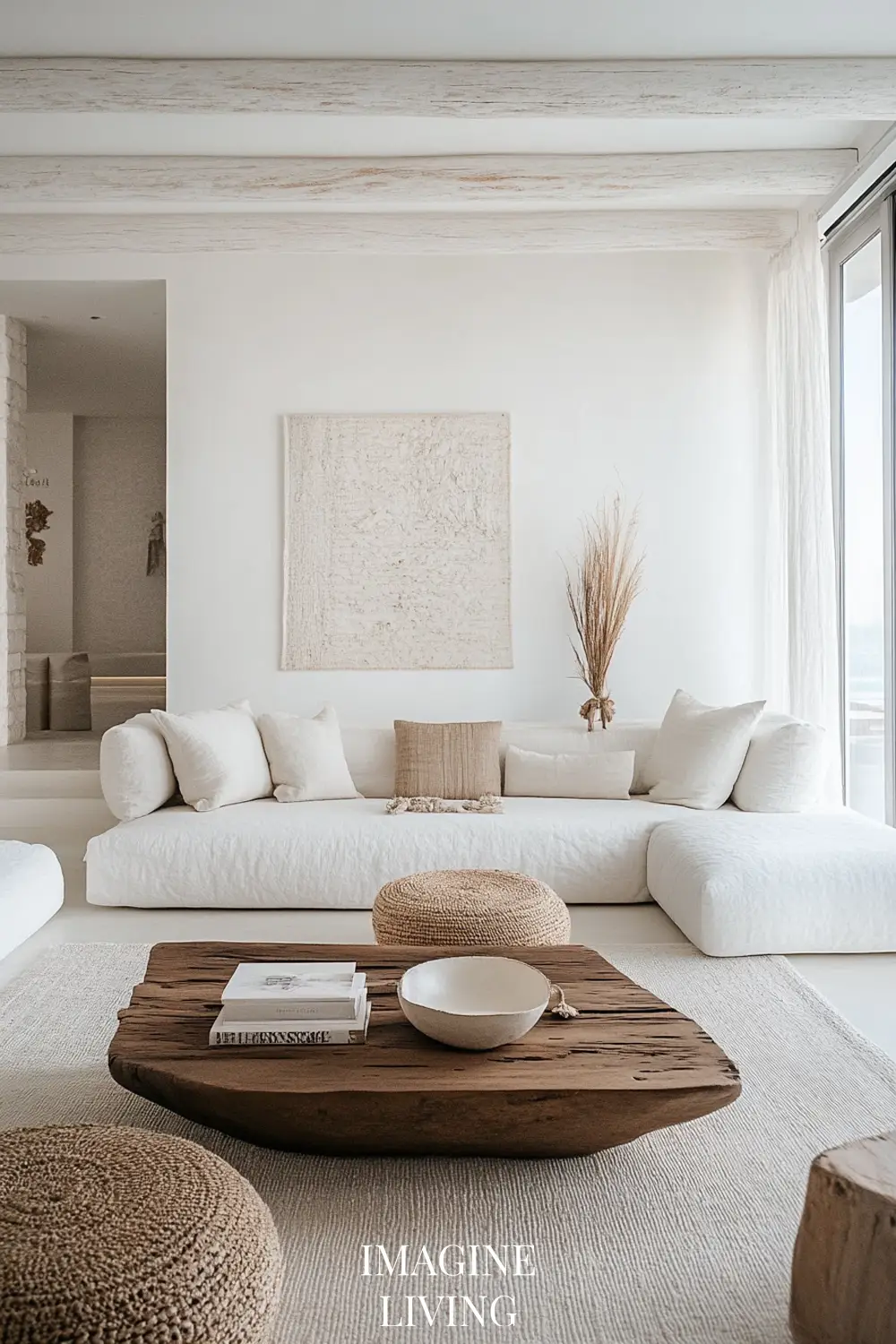
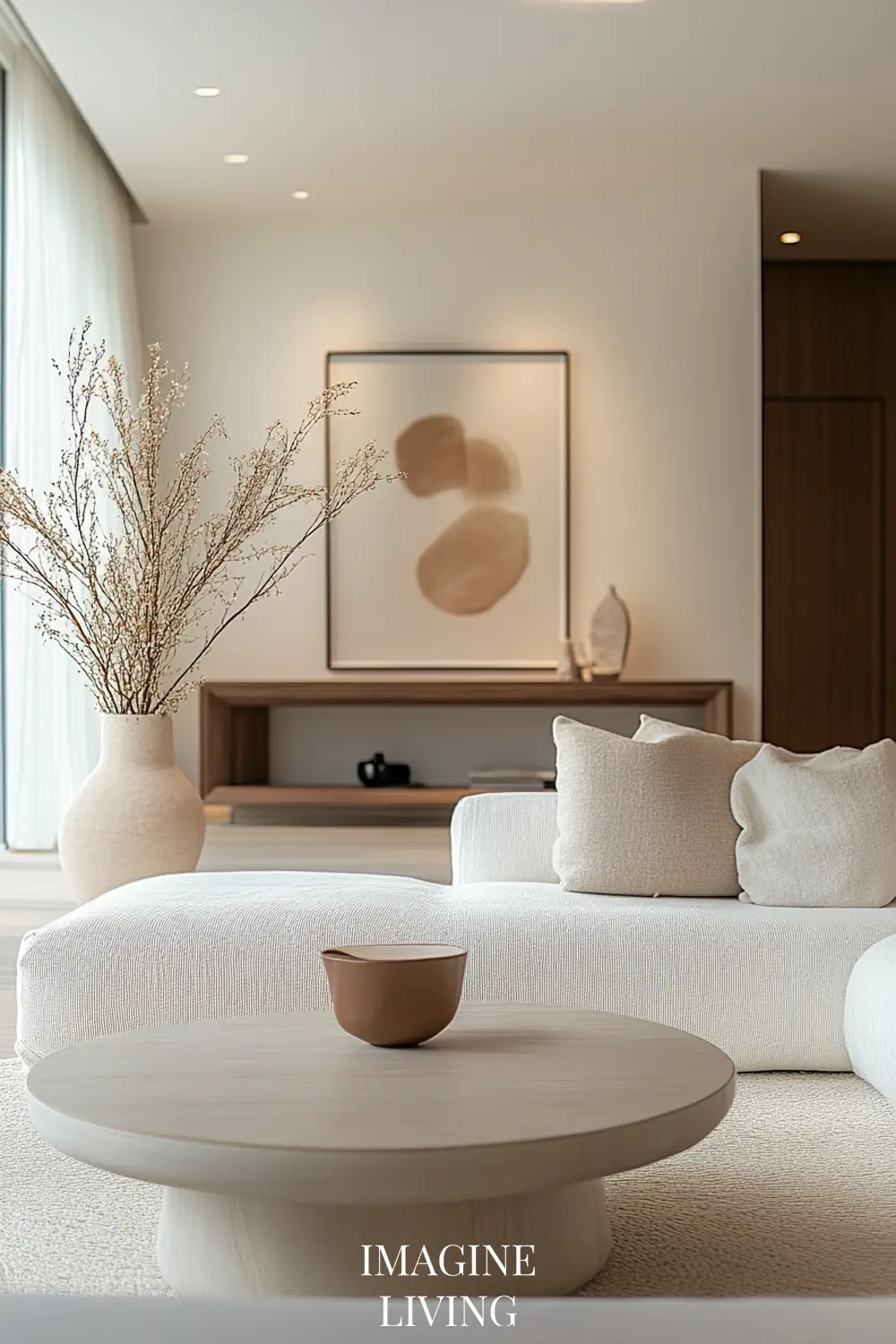




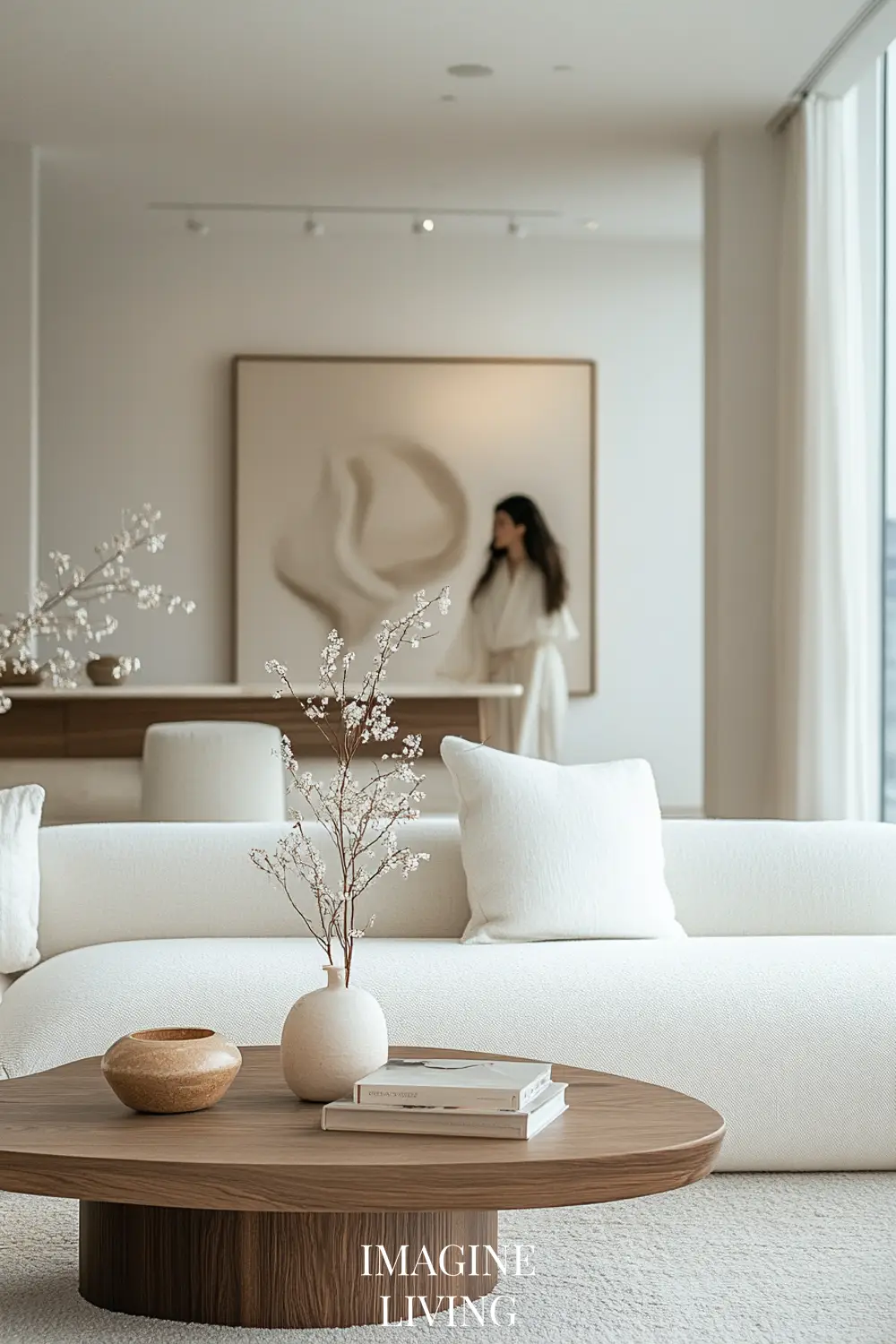
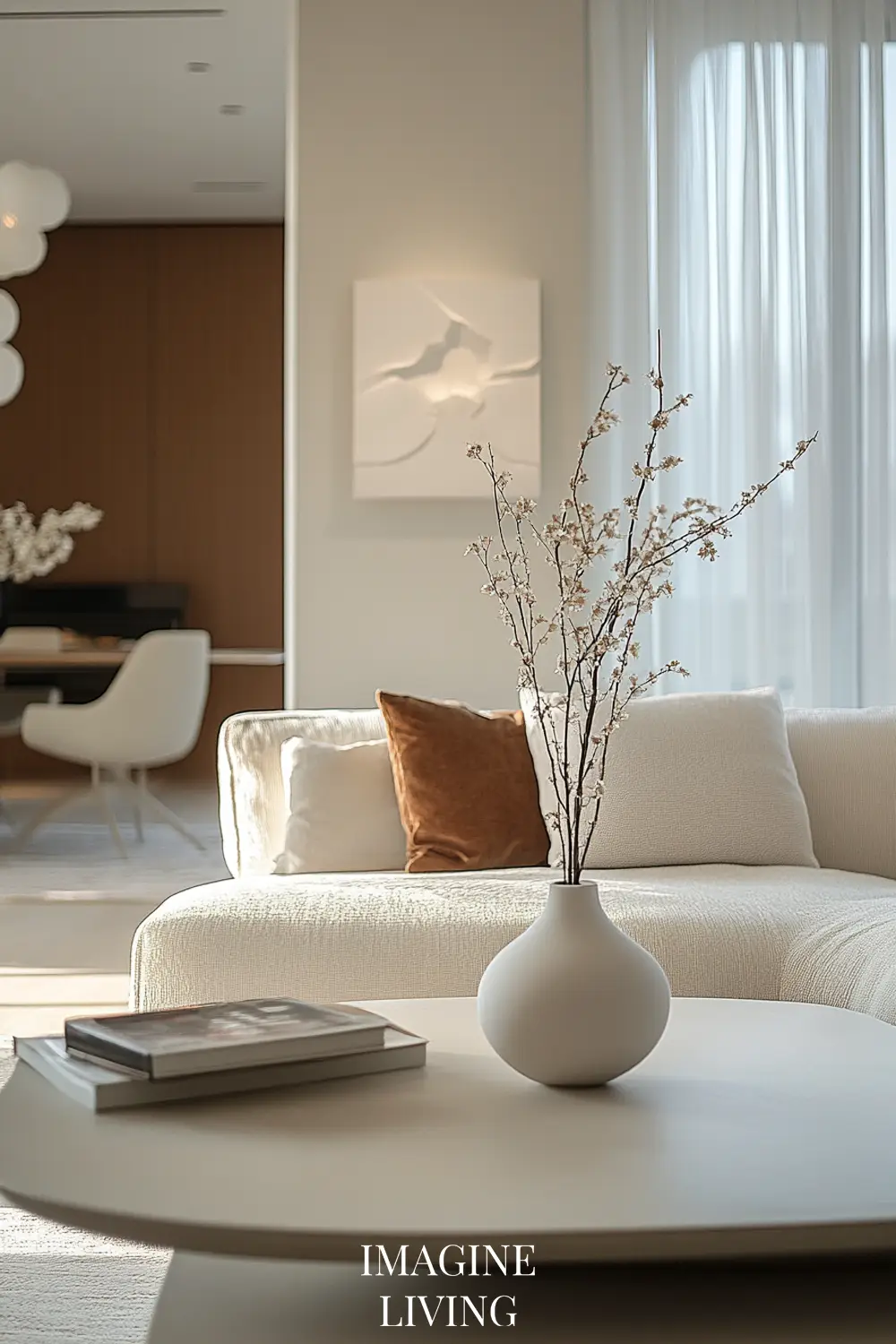
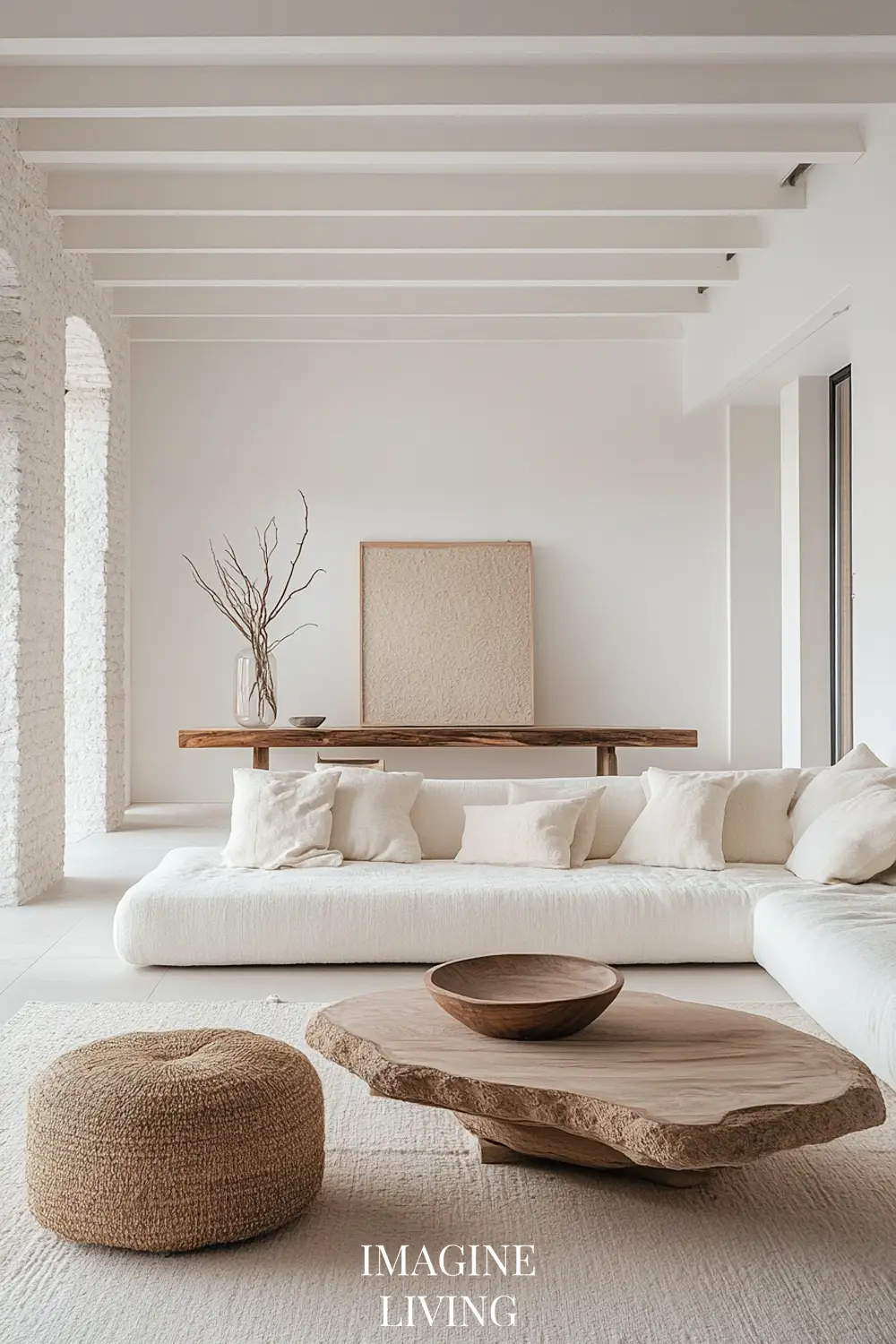
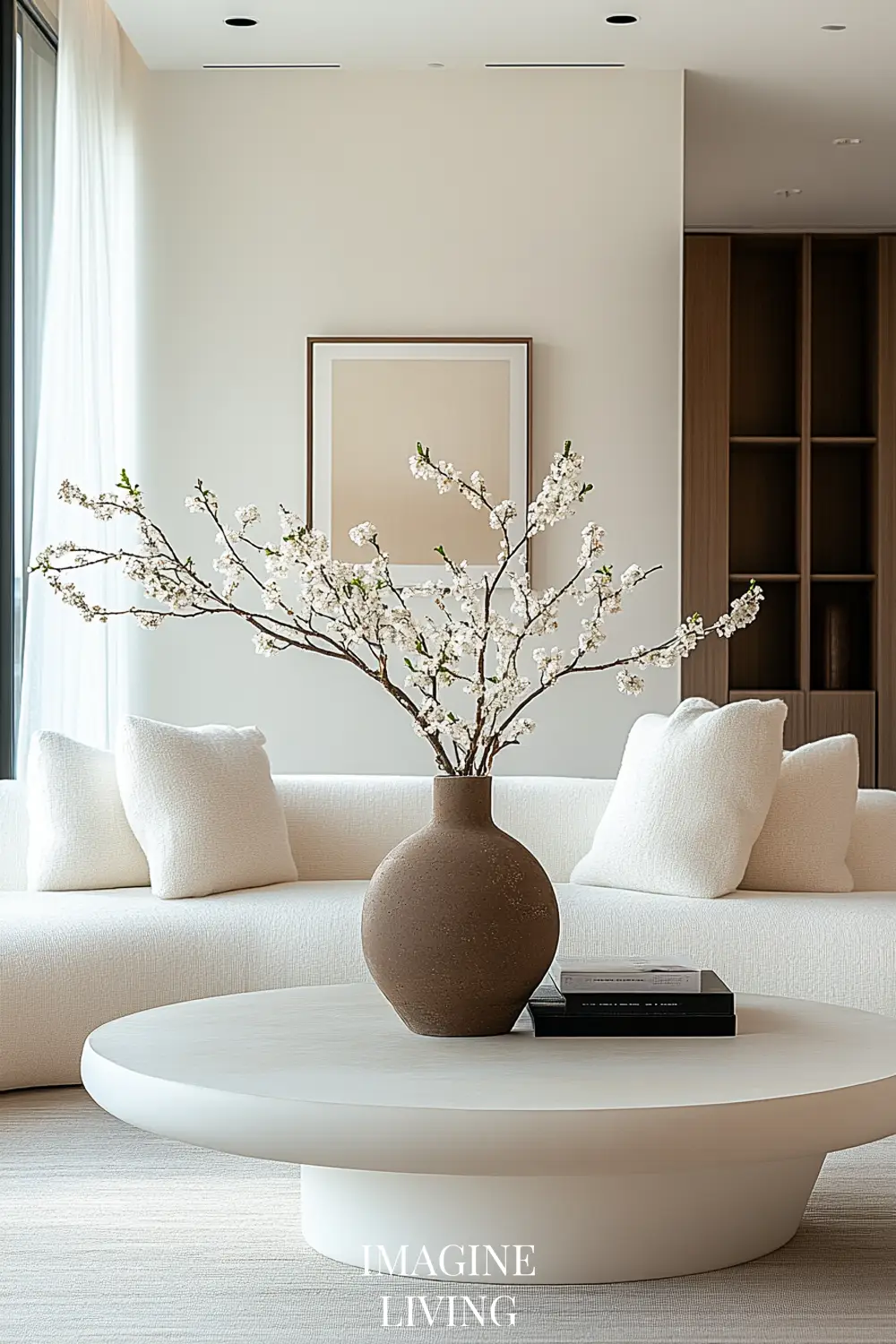
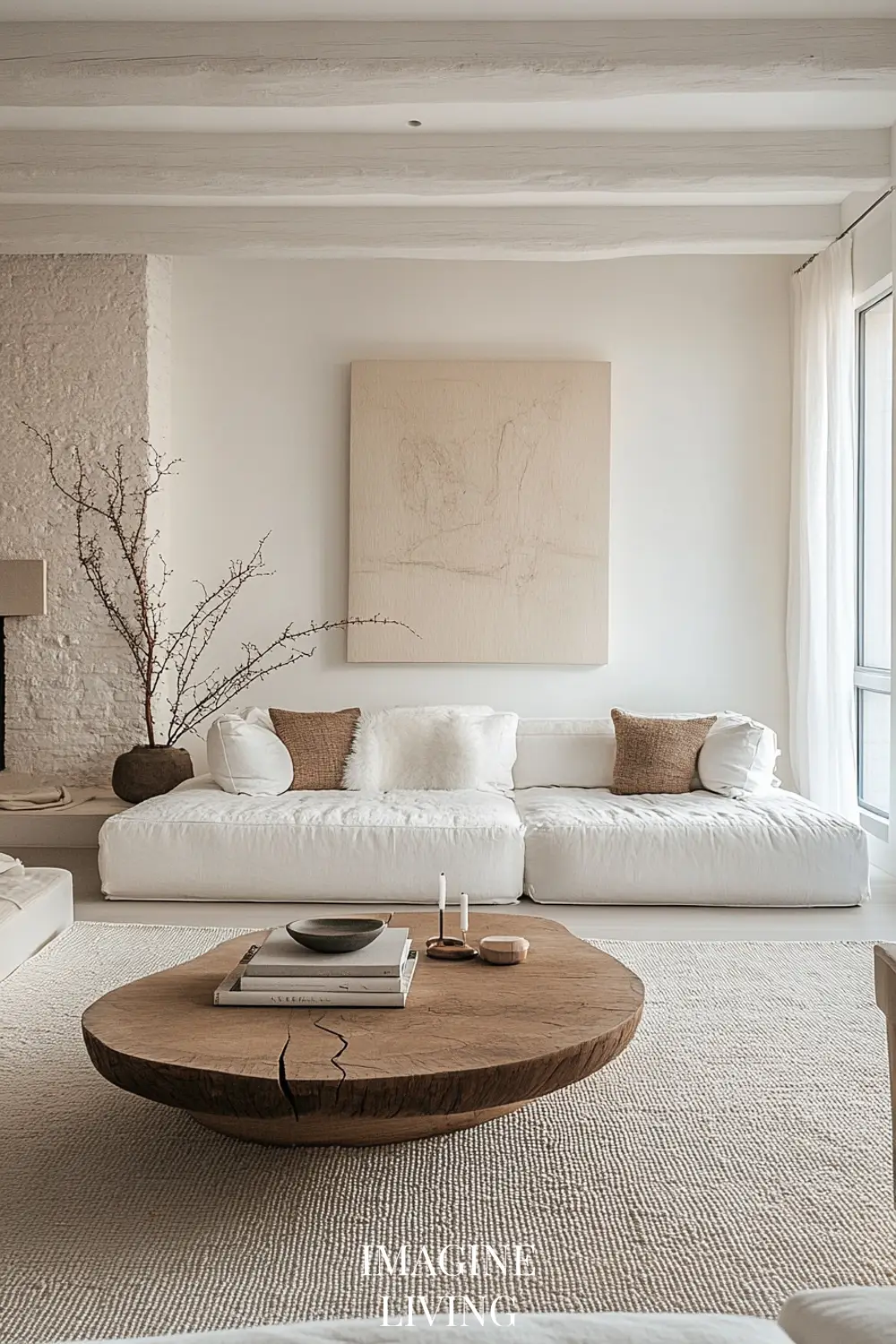


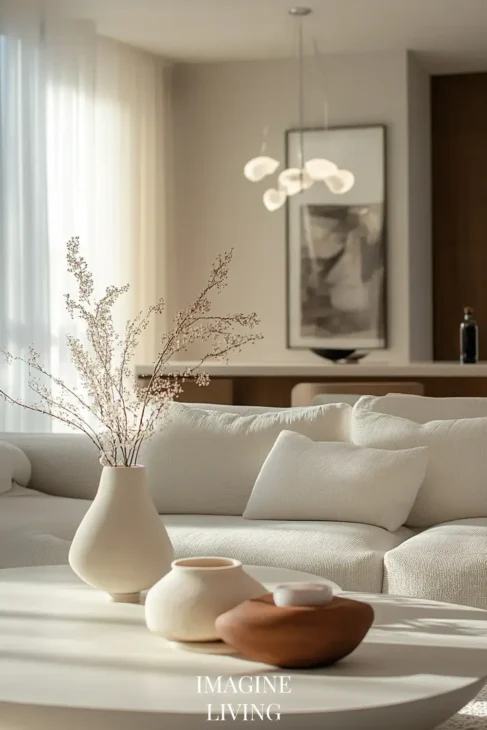
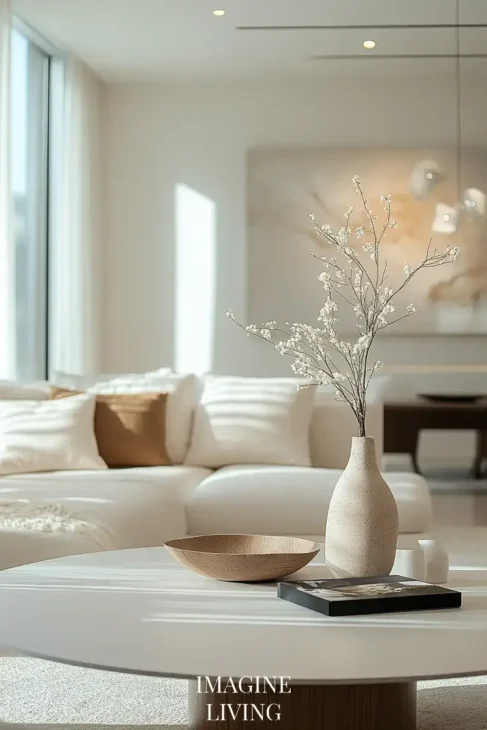

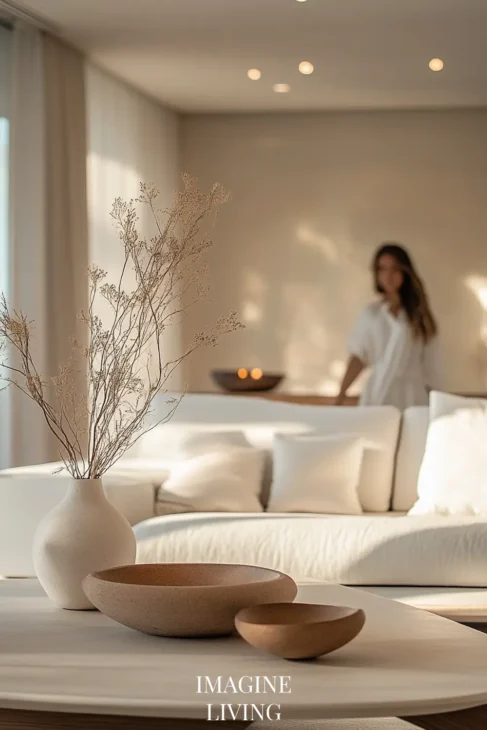
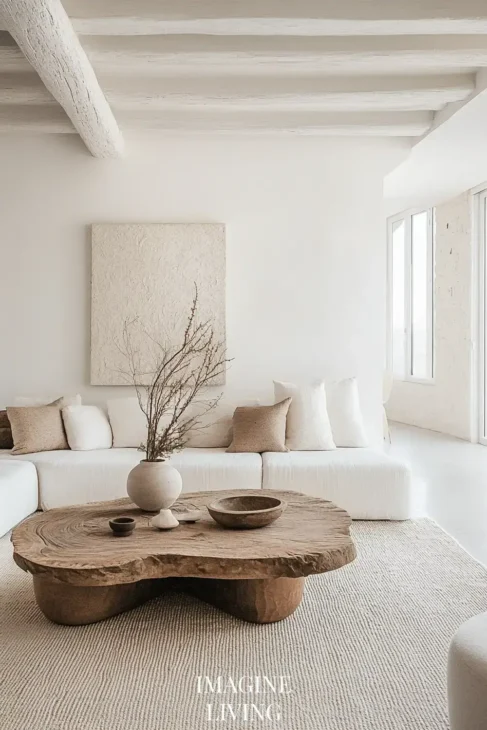




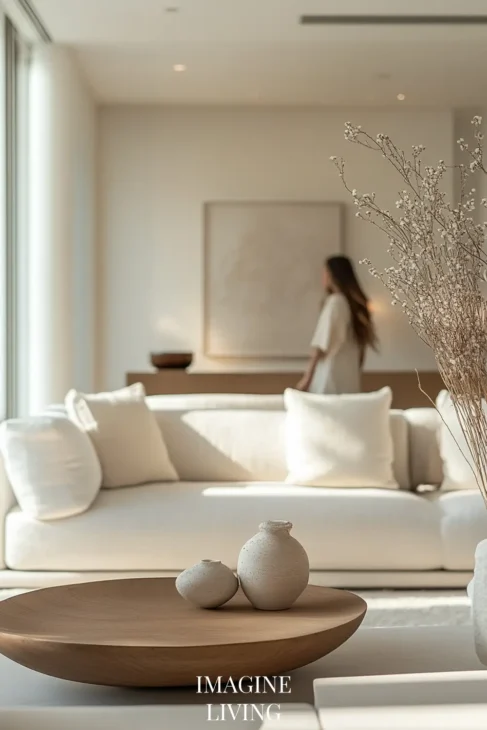
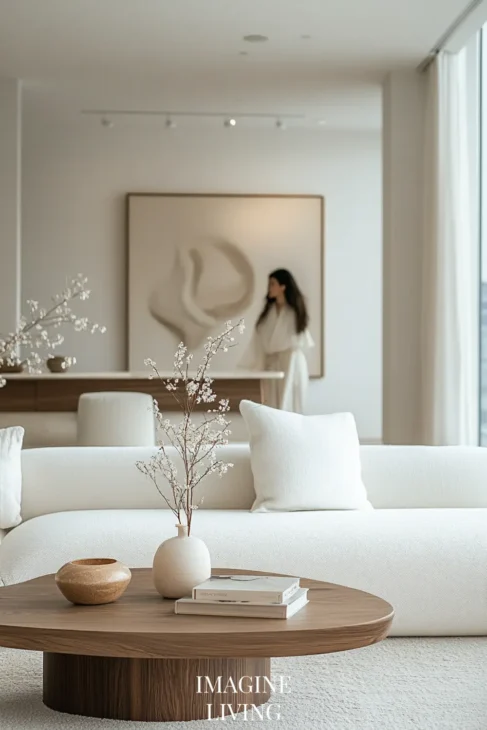
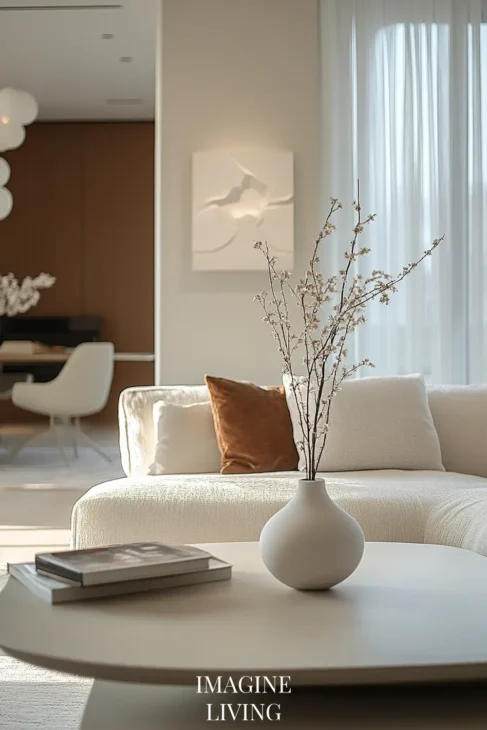
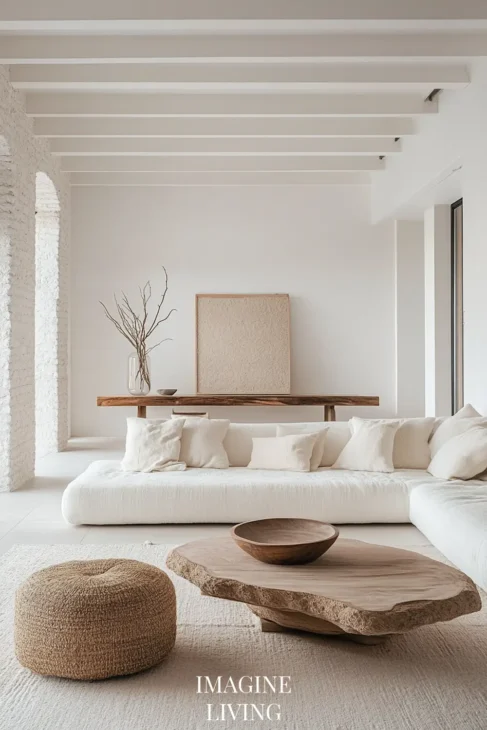
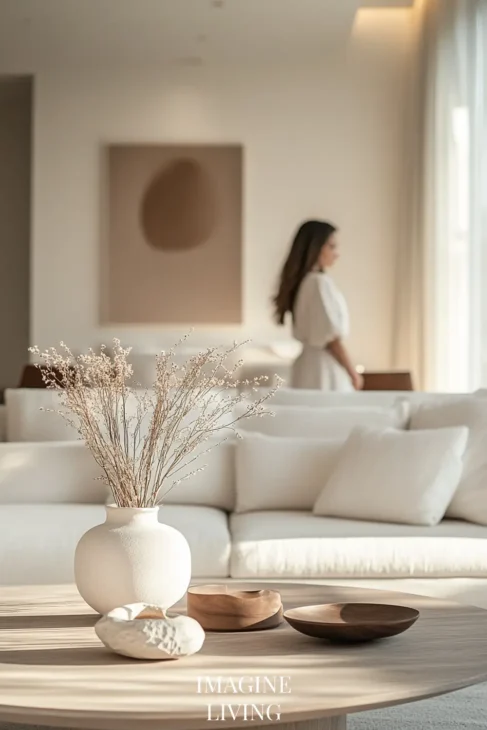
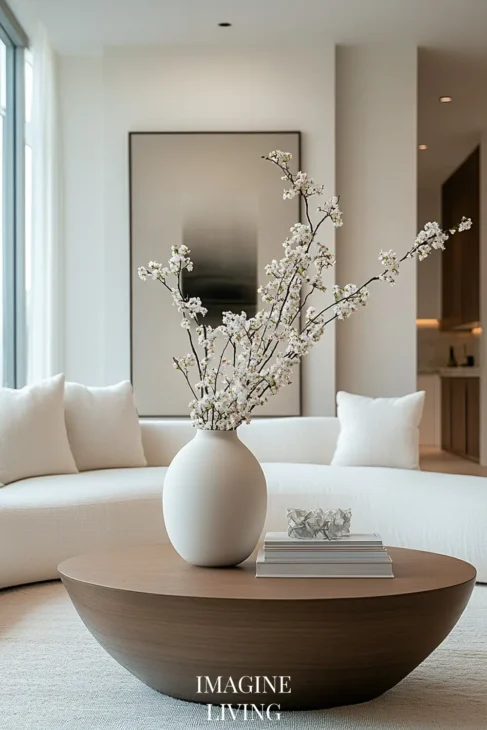
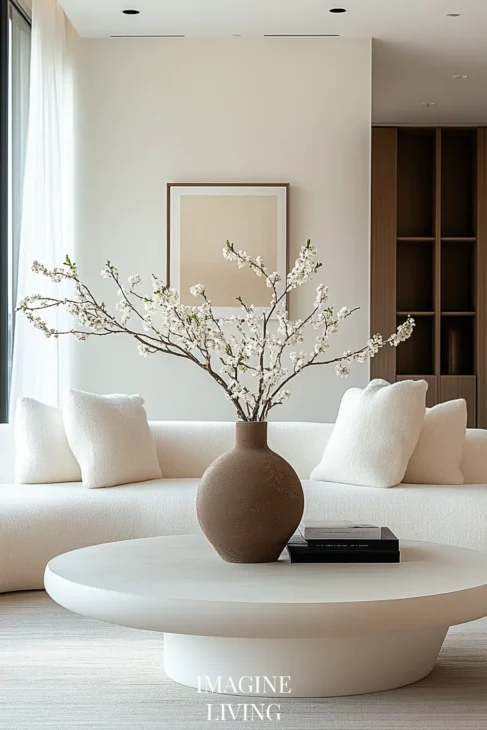


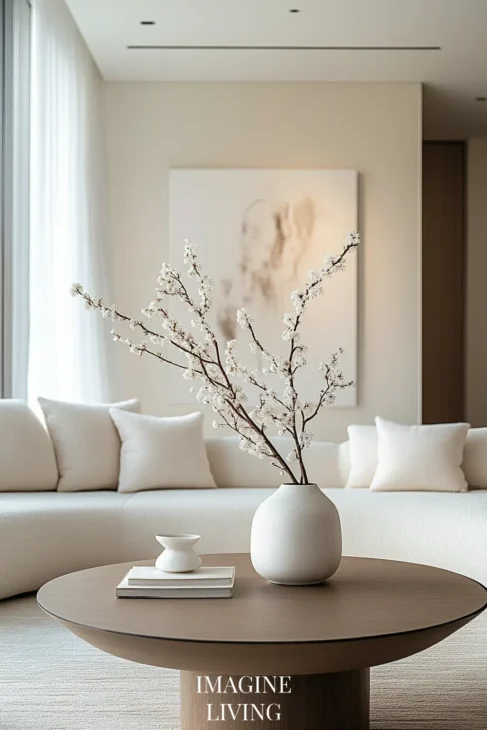
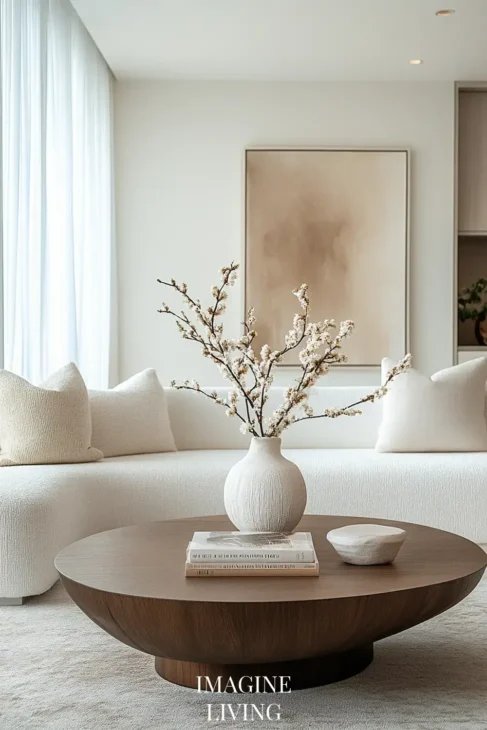

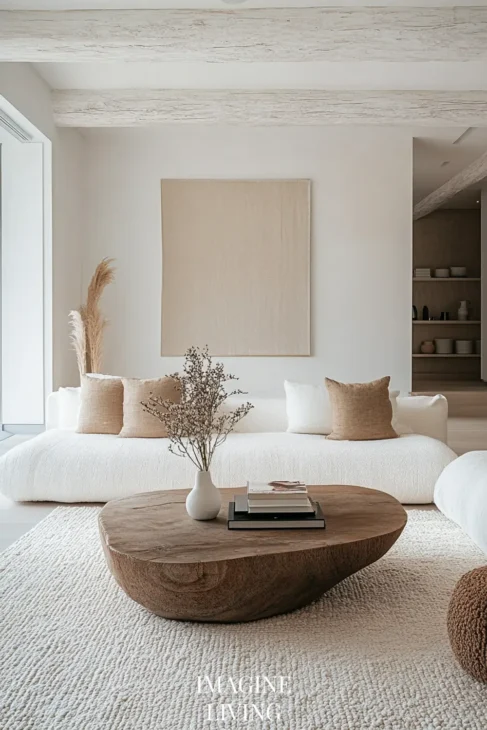
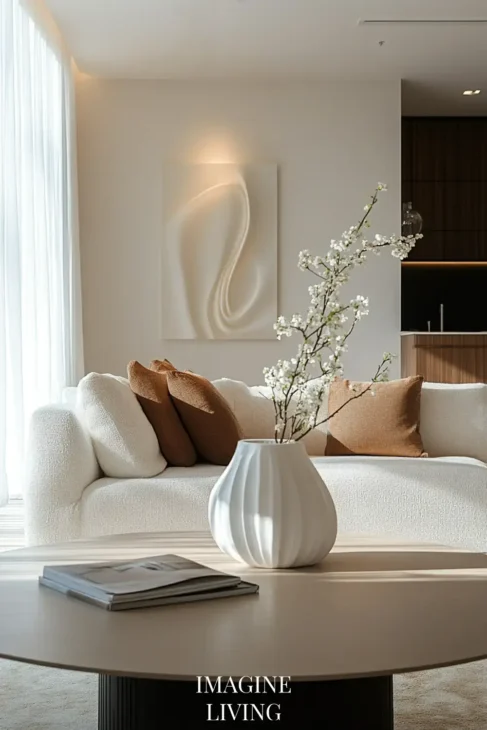
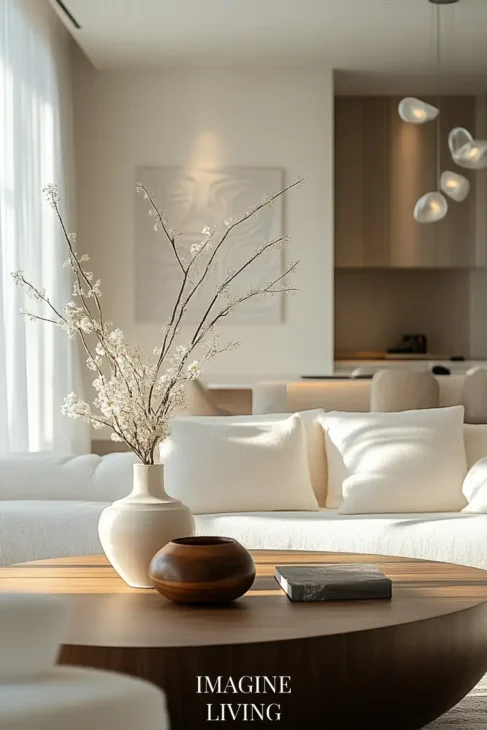
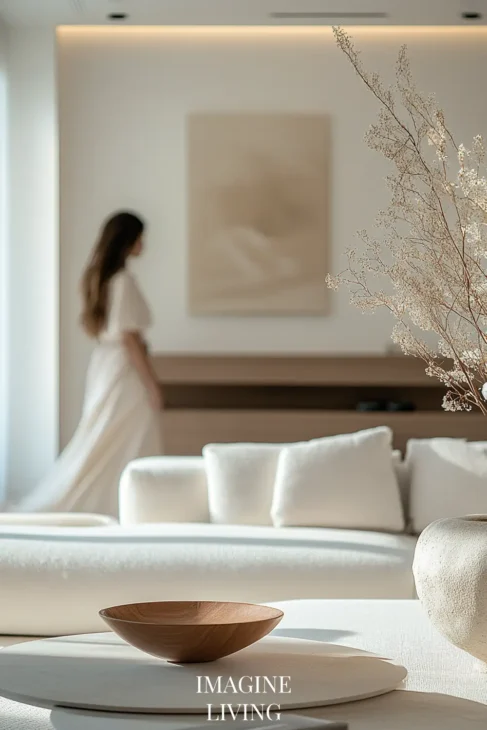
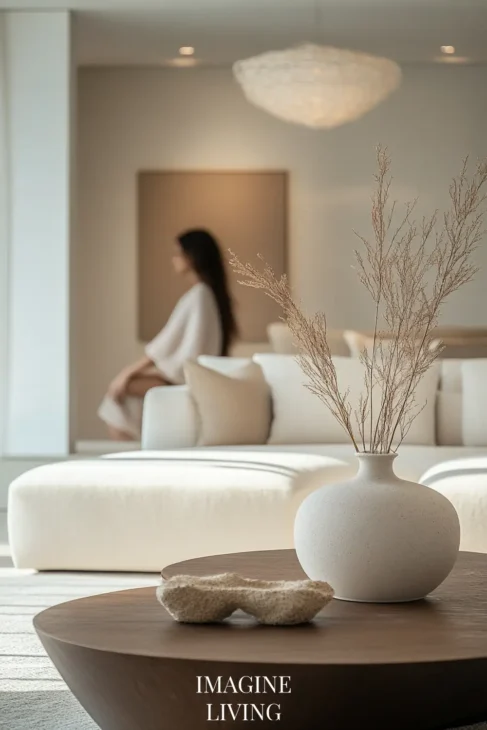
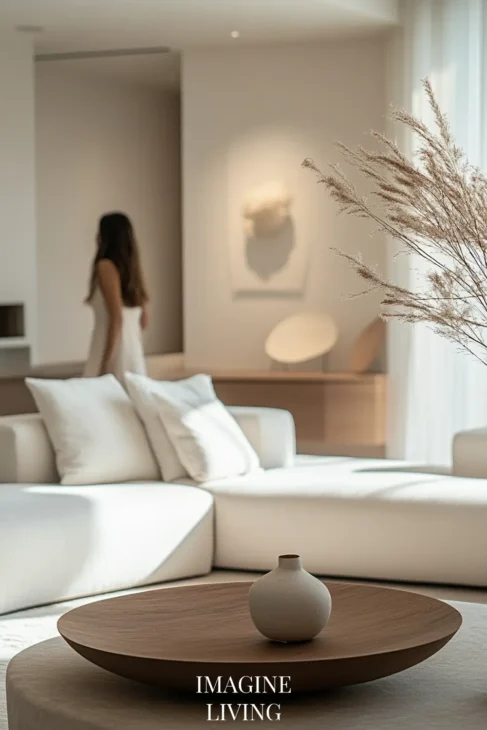
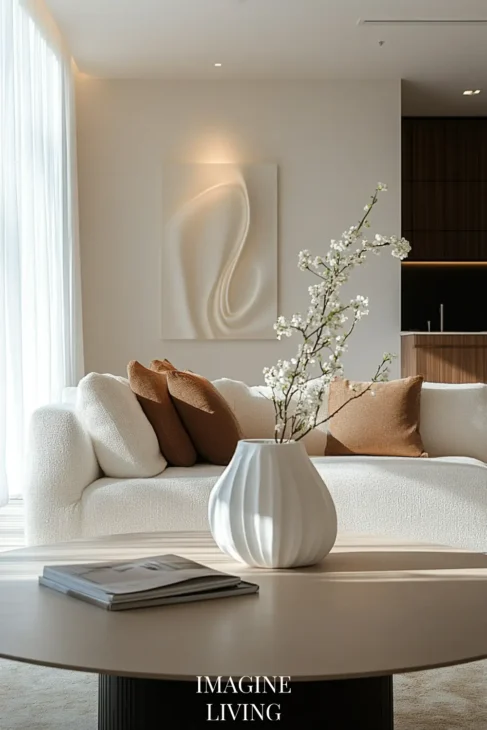

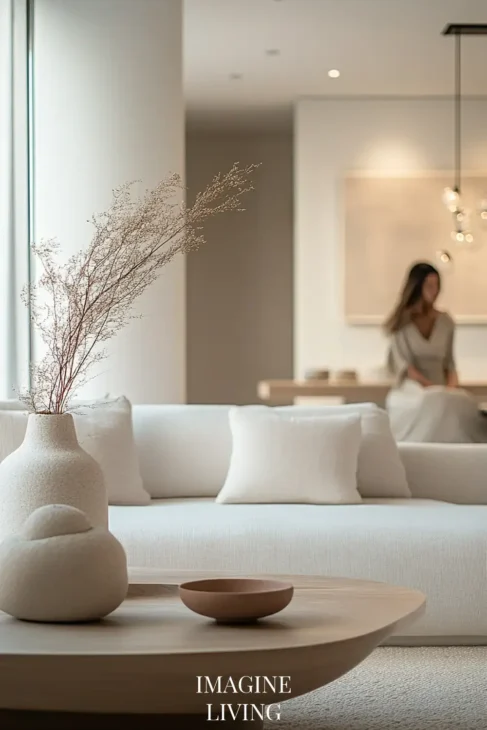
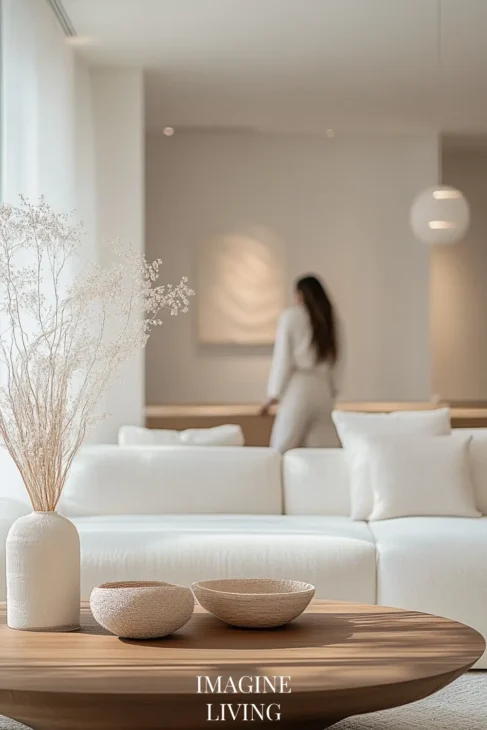
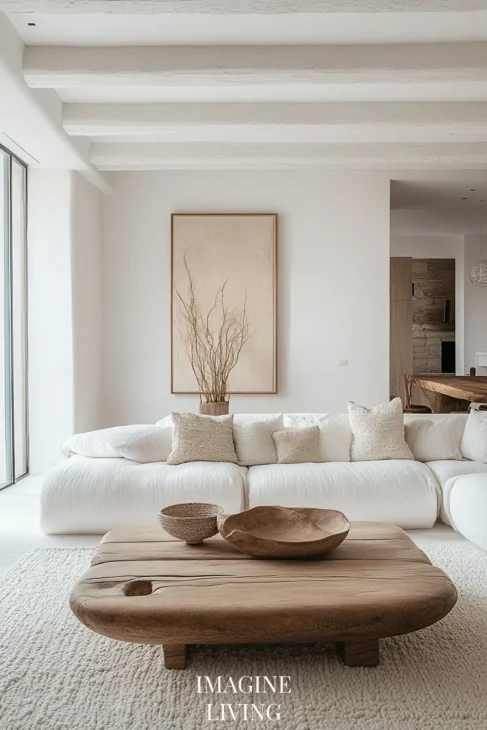
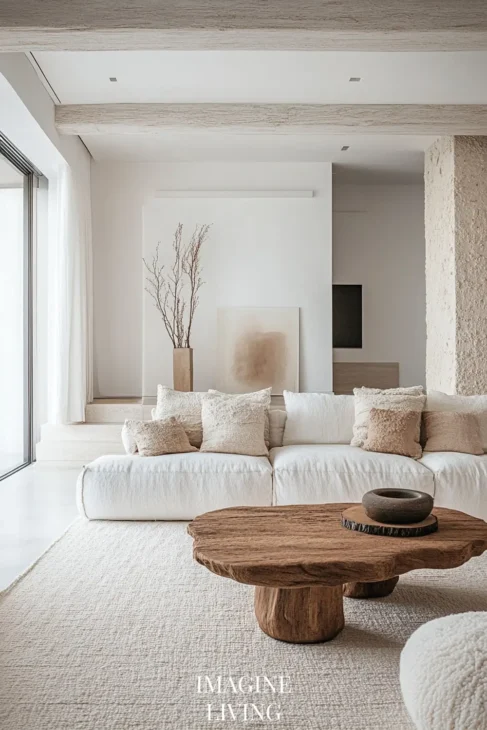

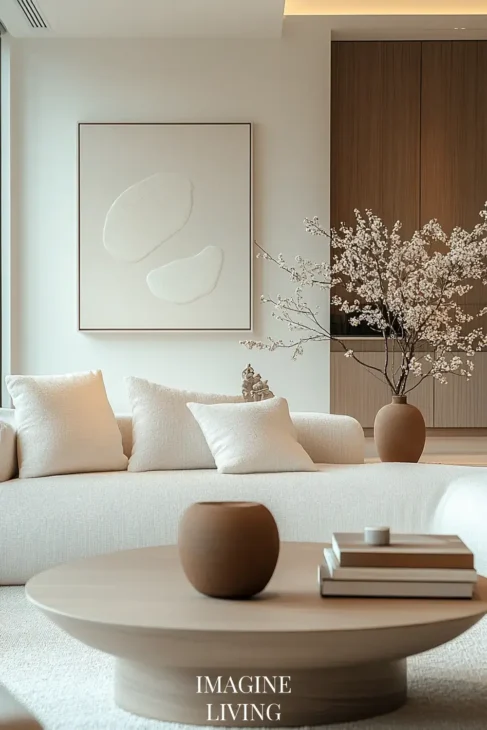

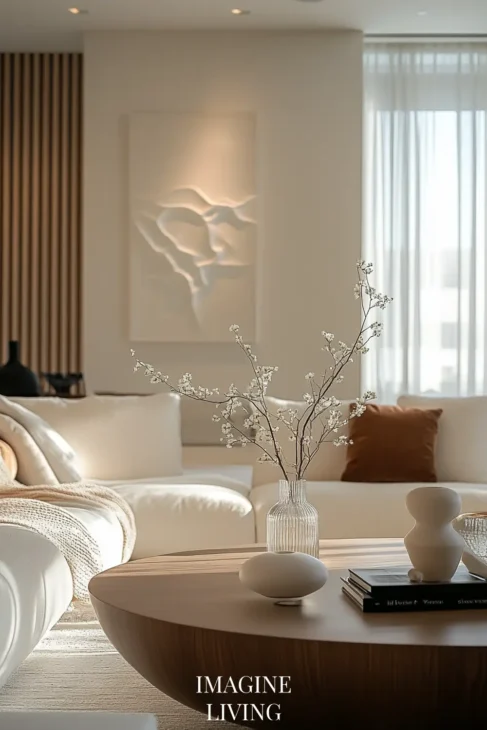
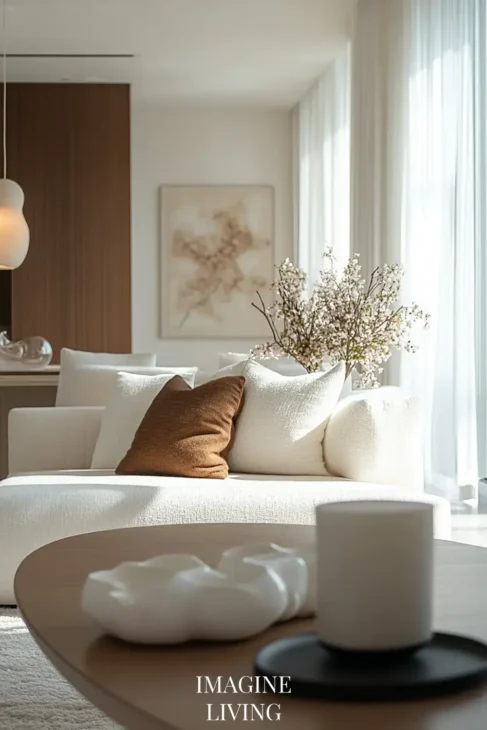

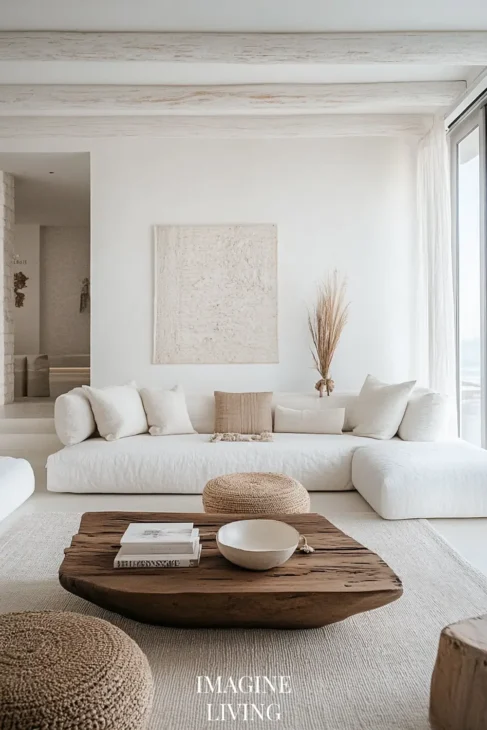
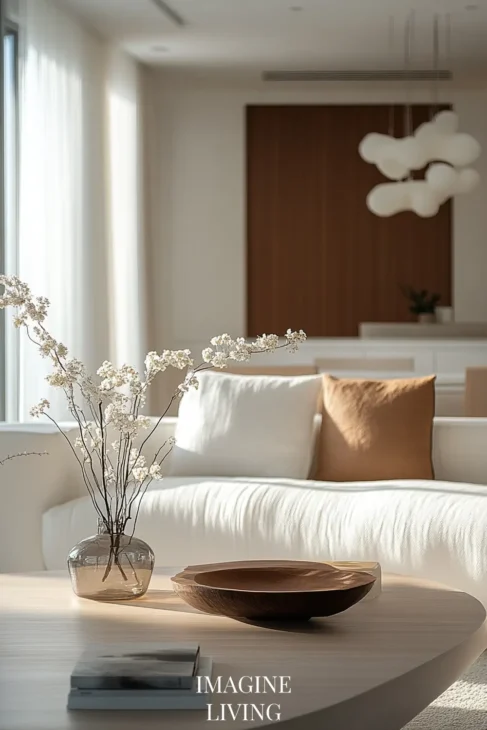

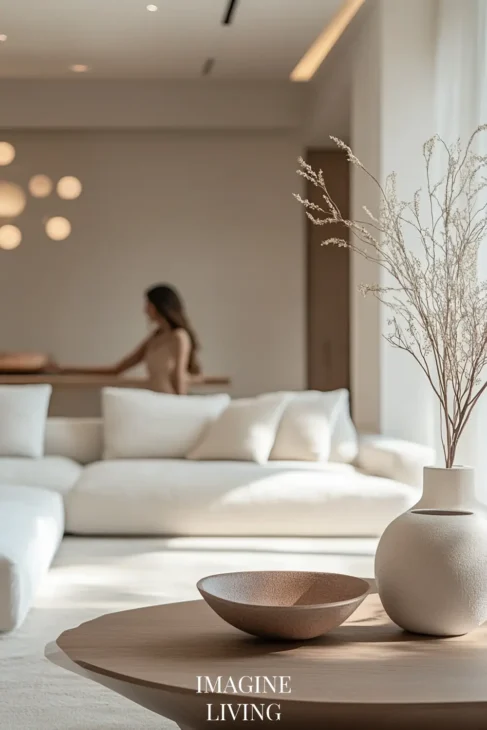

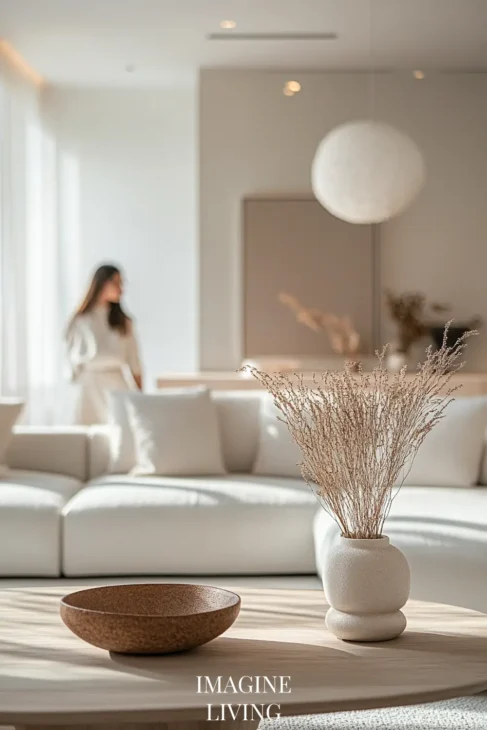
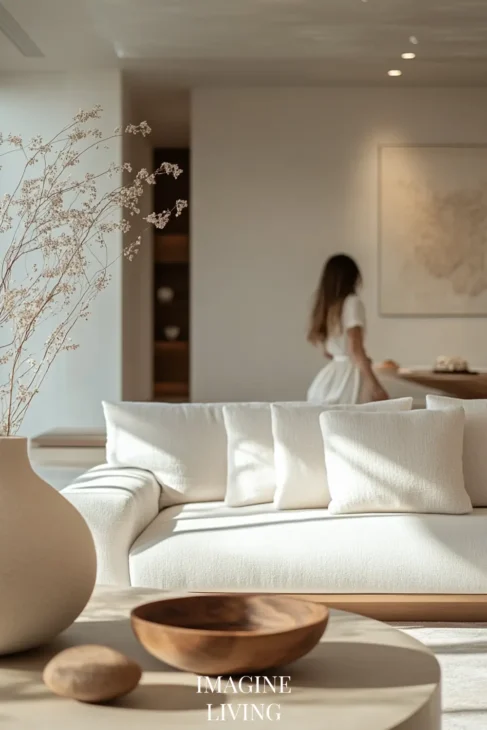
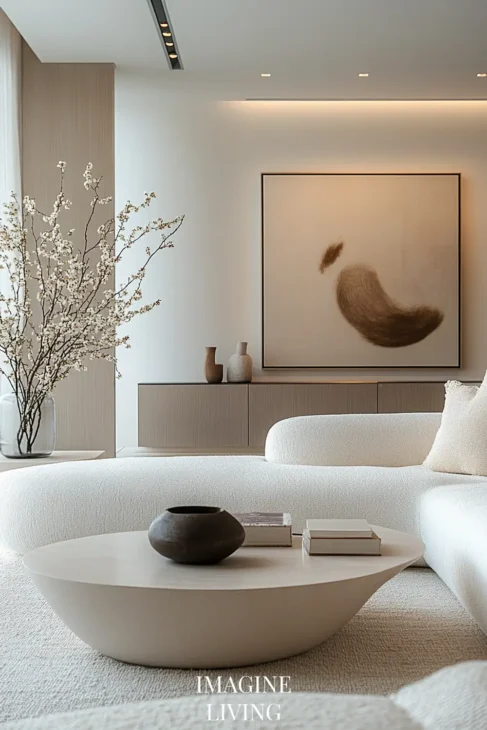
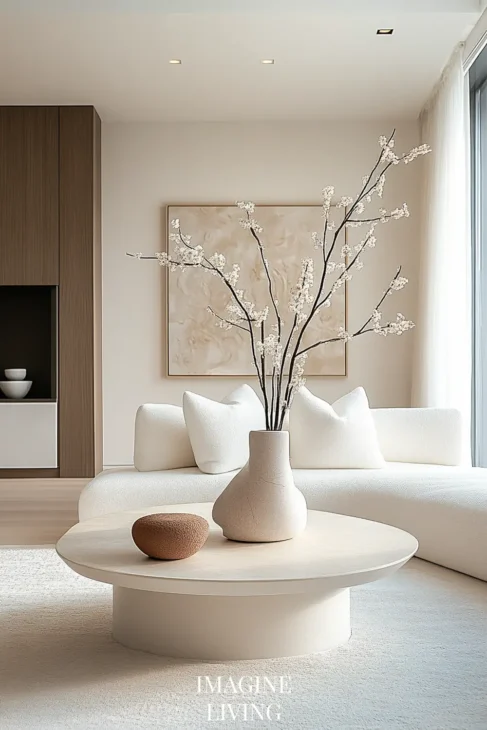
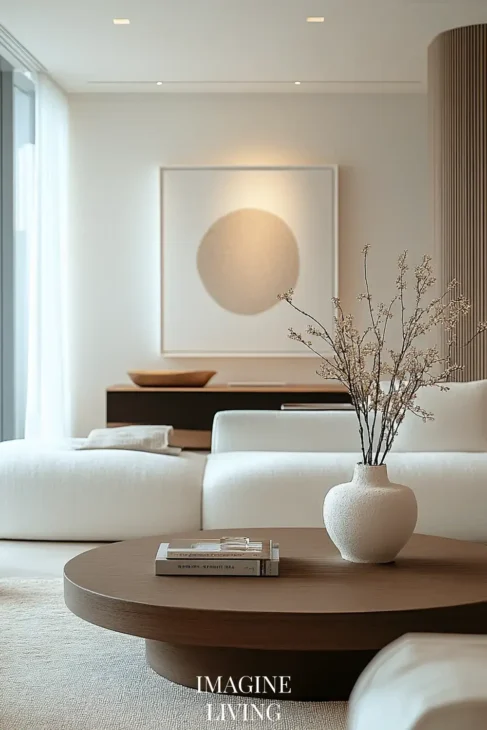
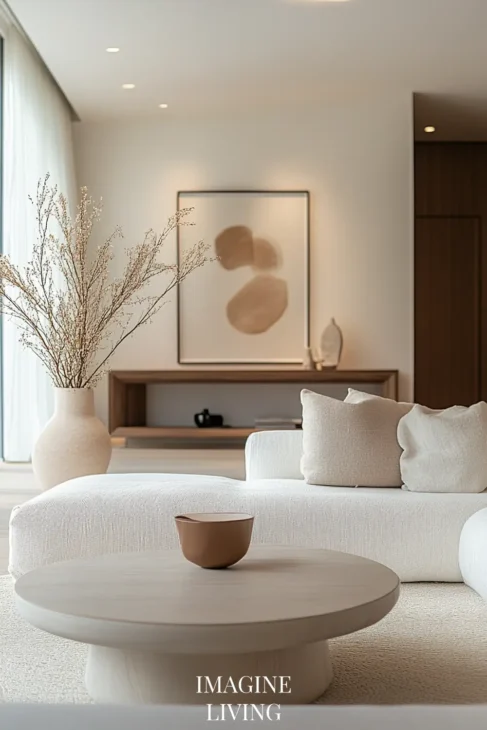

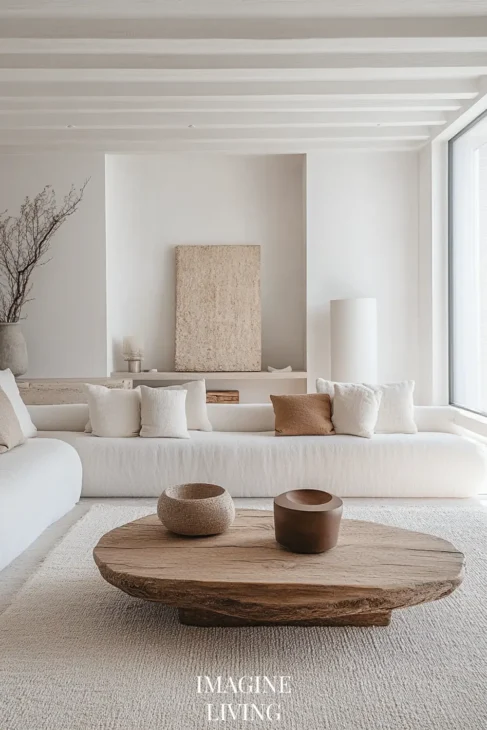
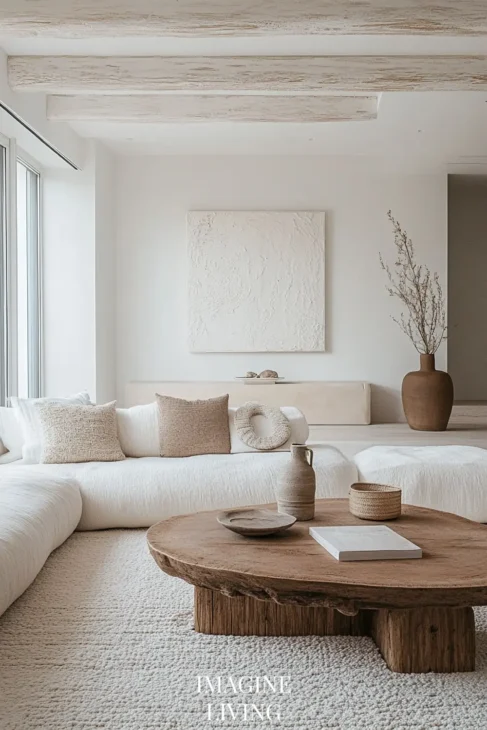


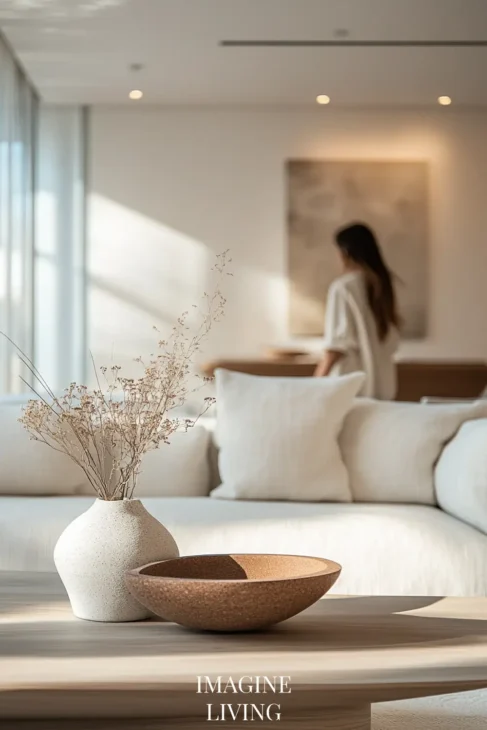
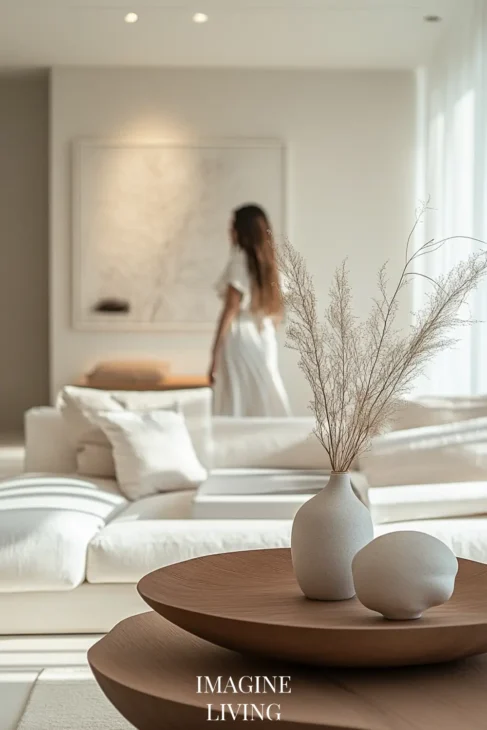
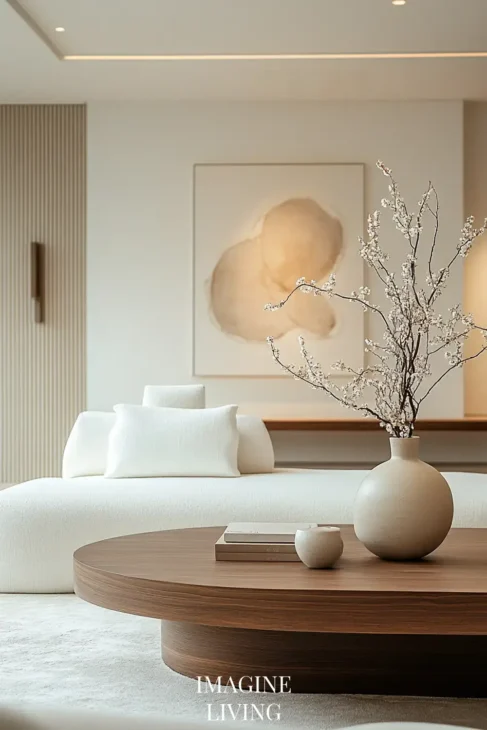
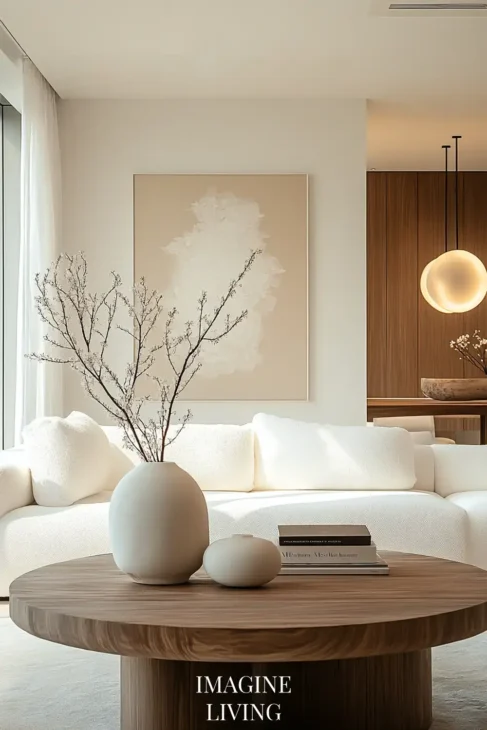






















Shelby McGibbon
03/24/2025Hi, beautiful content! Do you have sources for any of the sofas you have on this post? Thank you!
Sandra&Martin
03/24/2025Hi Shelby! Thank you so much — I’m really glad you’re enjoying the content 🤍
Great question! The sofas featured in that post are very much in line with the modern organic style — soft curves, low profiles, and cozy, natural textures. While some are designer pieces, I’ve found a few great sources that offer a similar vibe across different price points.
If you’re looking for a more budget-friendly option, West Elm’s Laurent Collection is a beautiful choice — you’re totally on point there!
For more sculptural and high-end options, I also love browsing:
Design Within Reach Sofas — clean lines and luxe fabrics
Ditre Italia — minimal yet cozy
Zanotta Sofas — iconic Italian design
Lema Mobili — timeless and modular
HAY — modern, playful, and soft-edged
Hope this helps and thanks again for the kind words 🤎